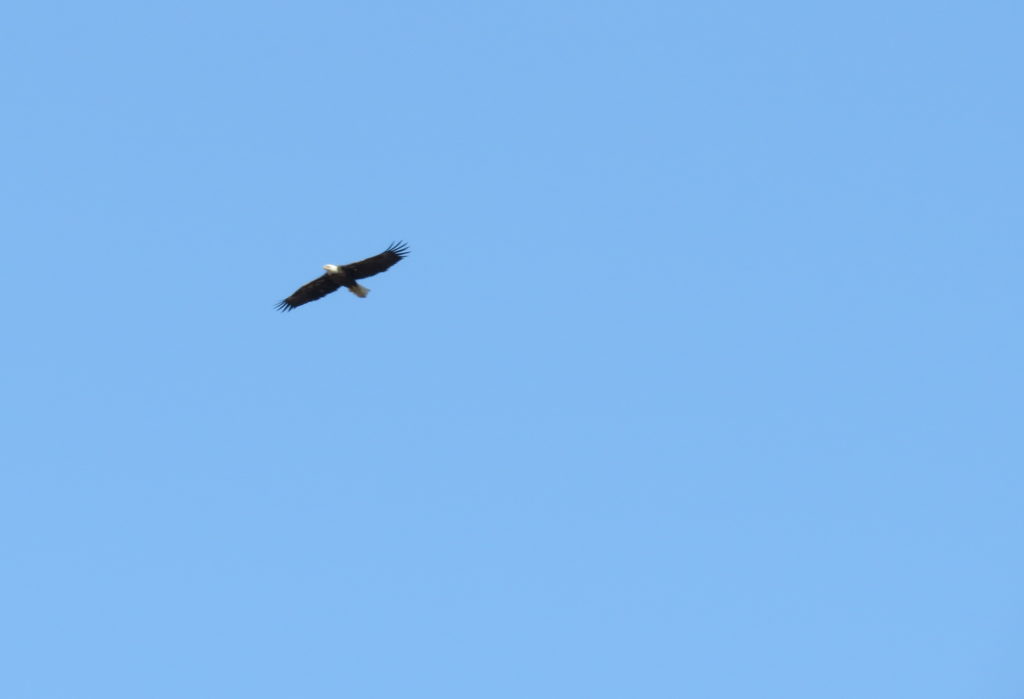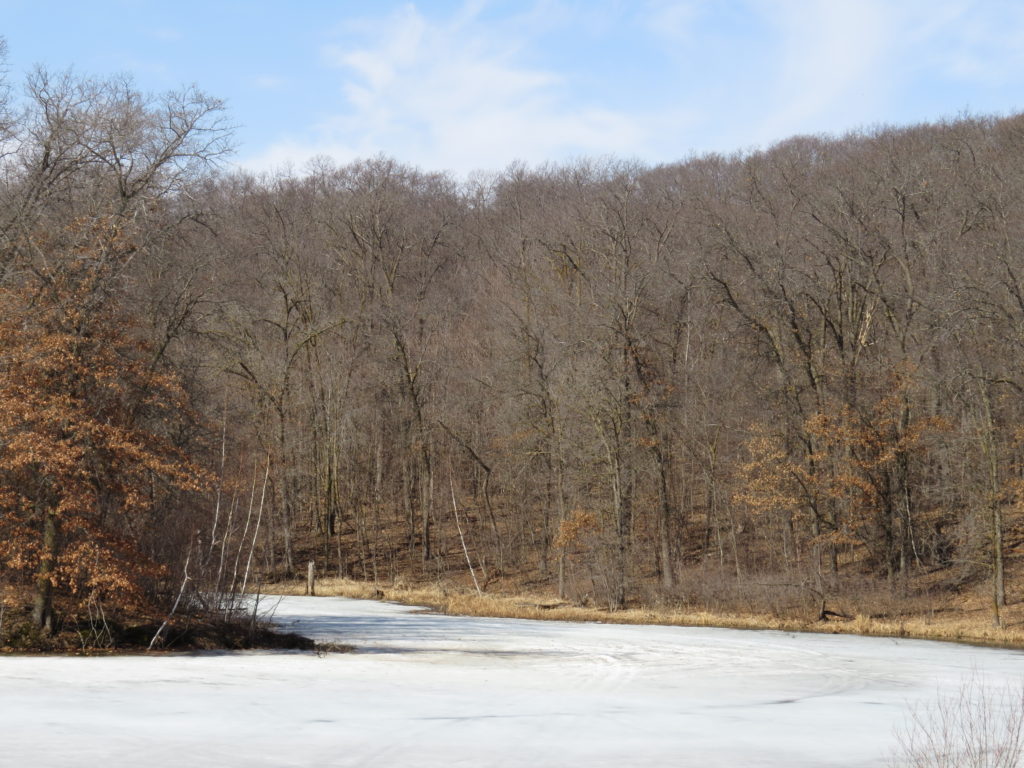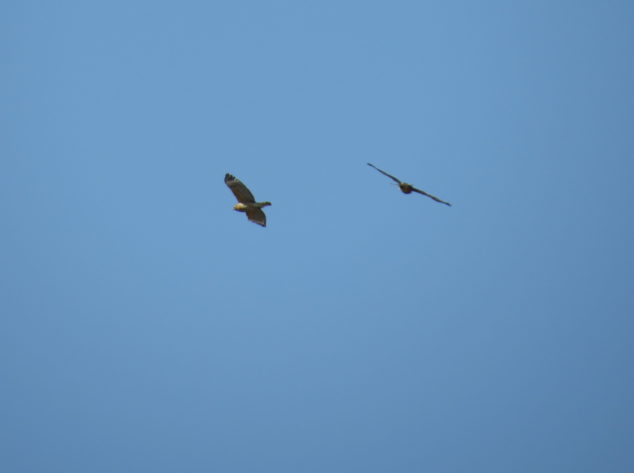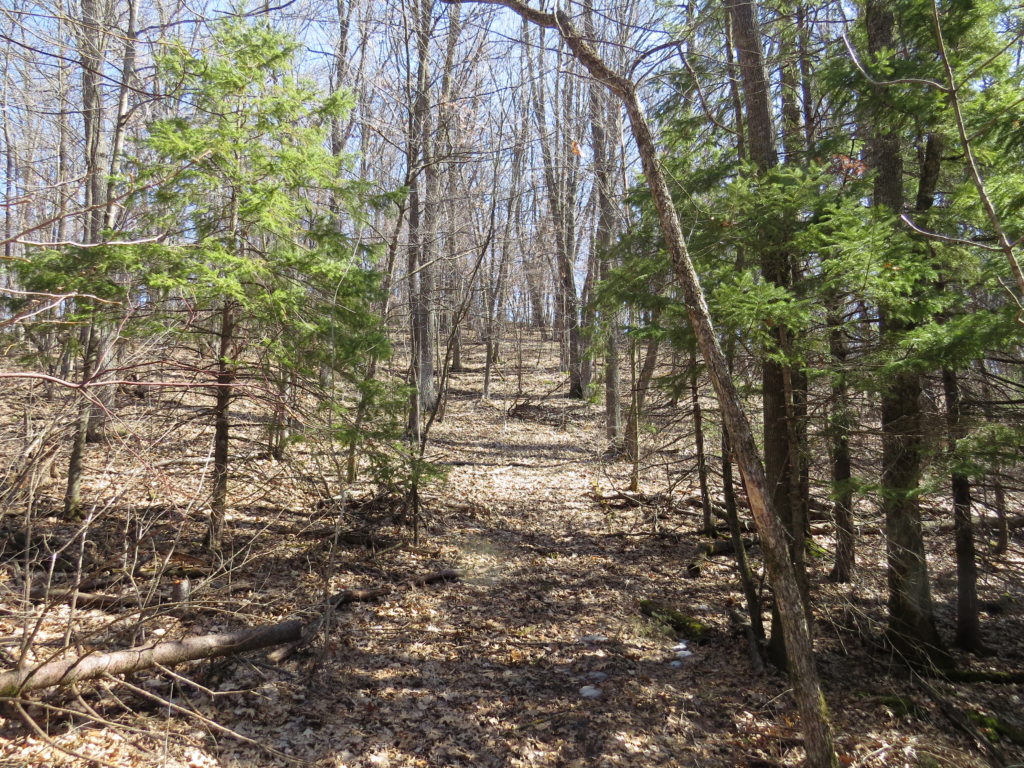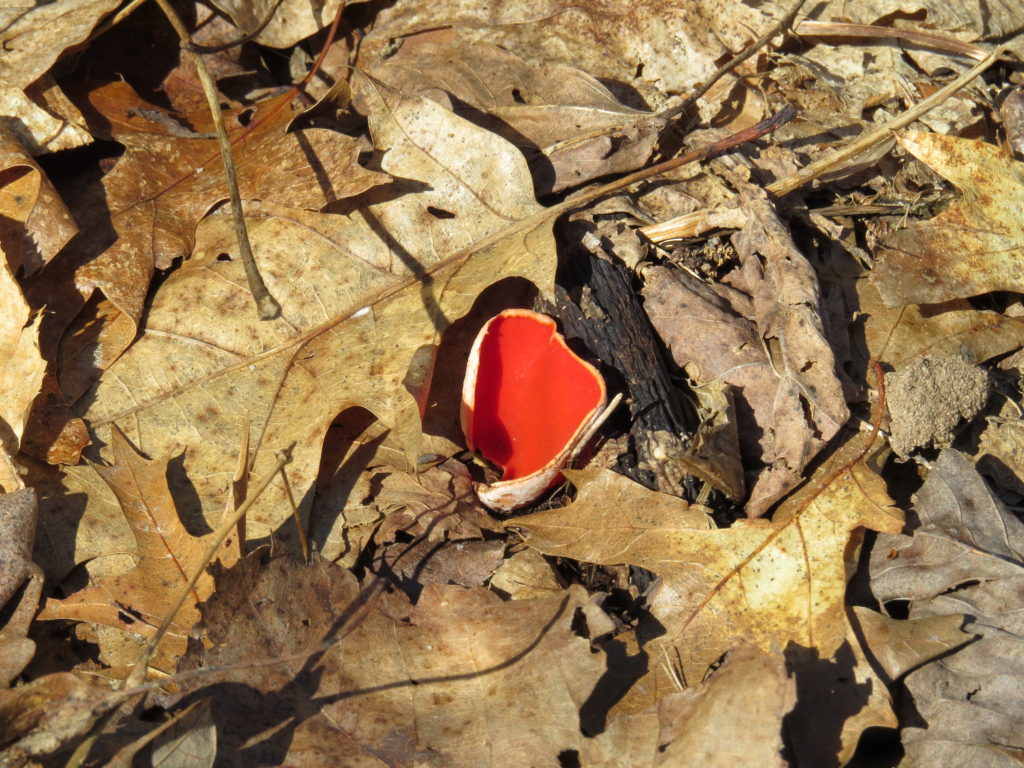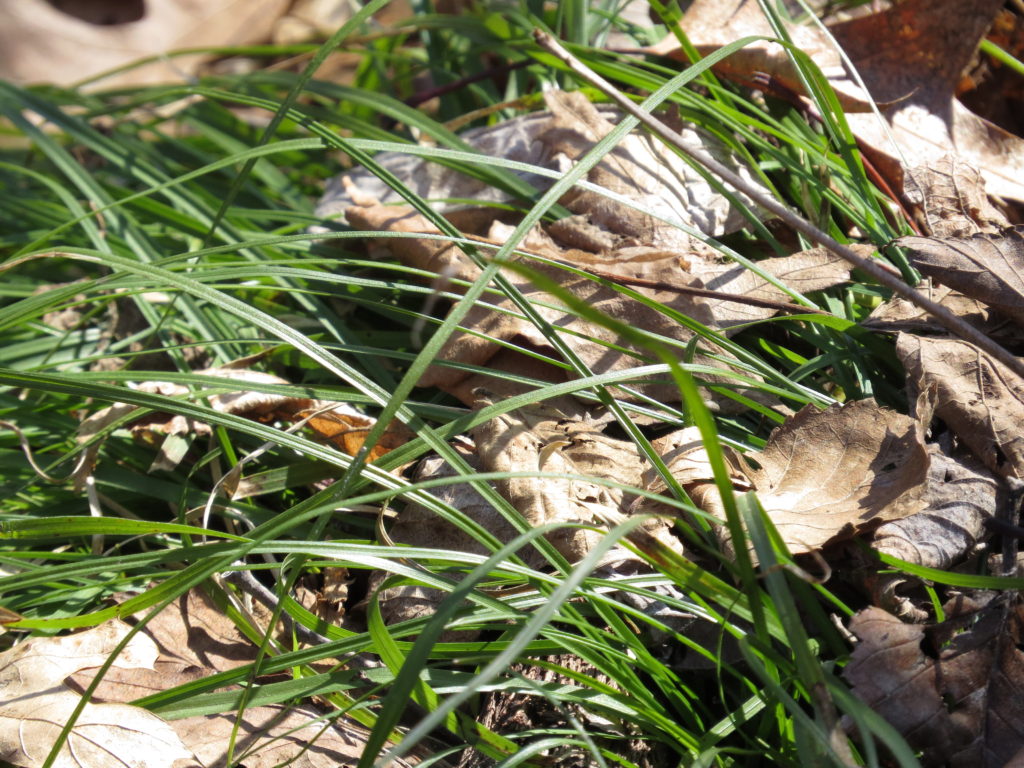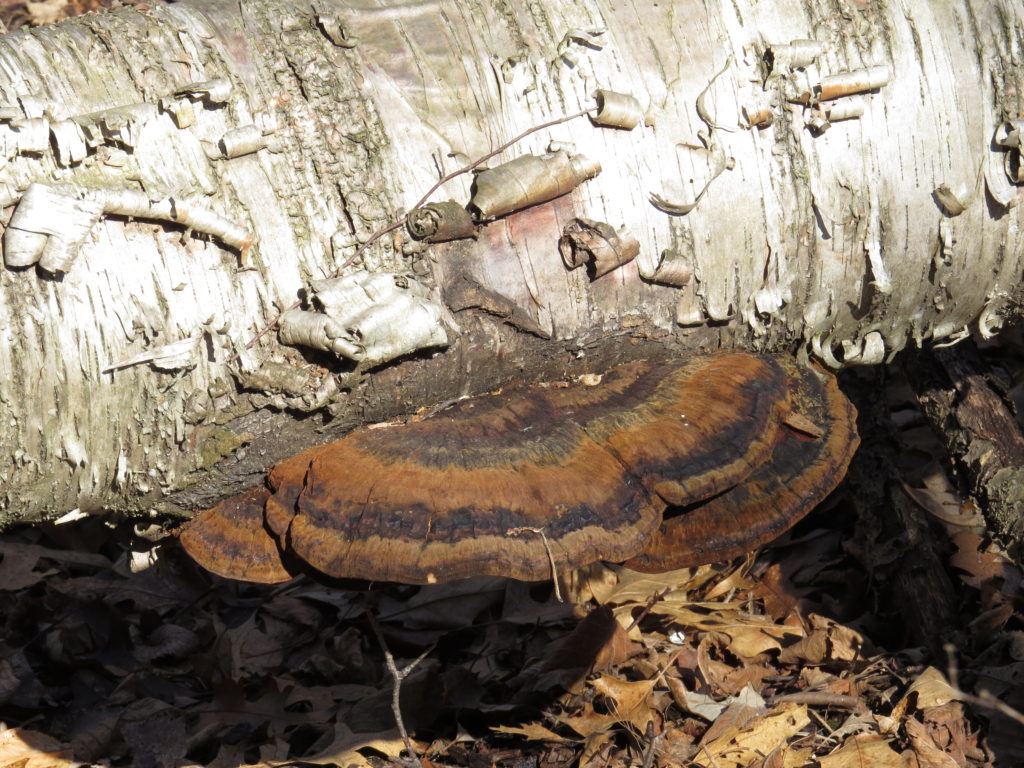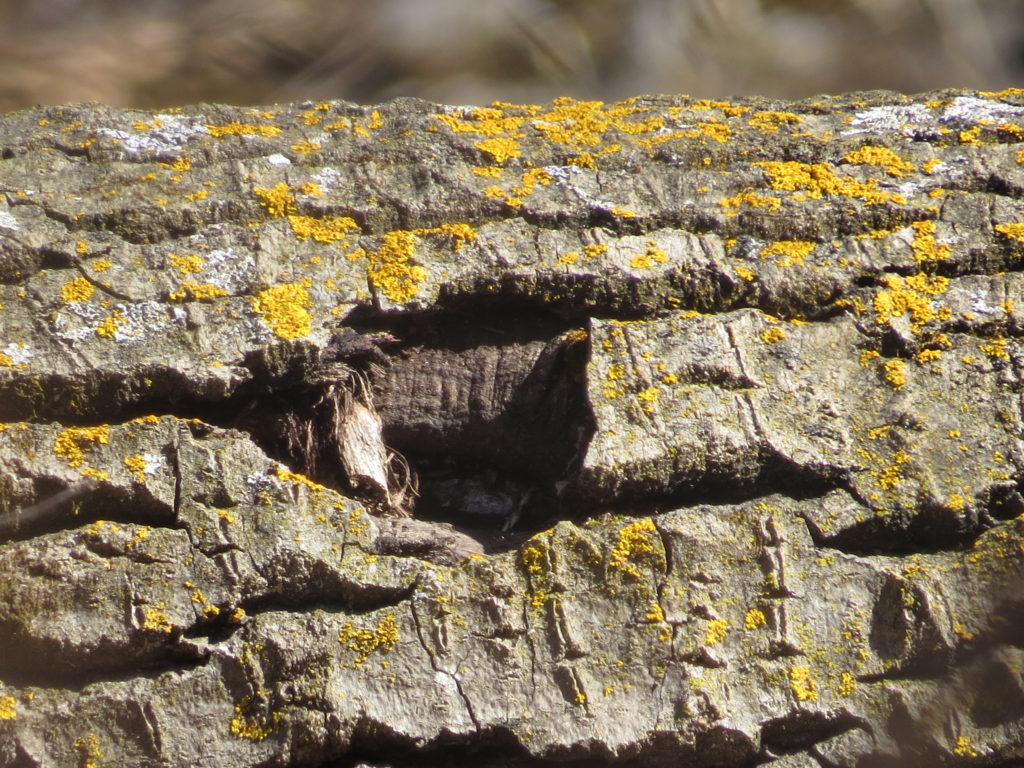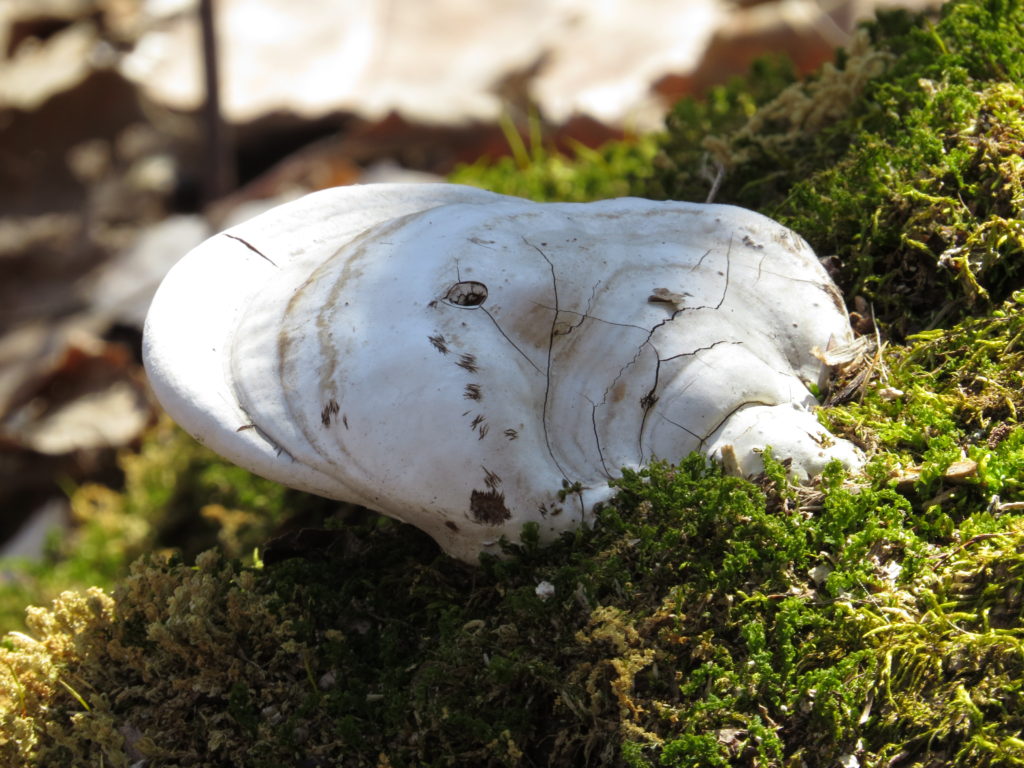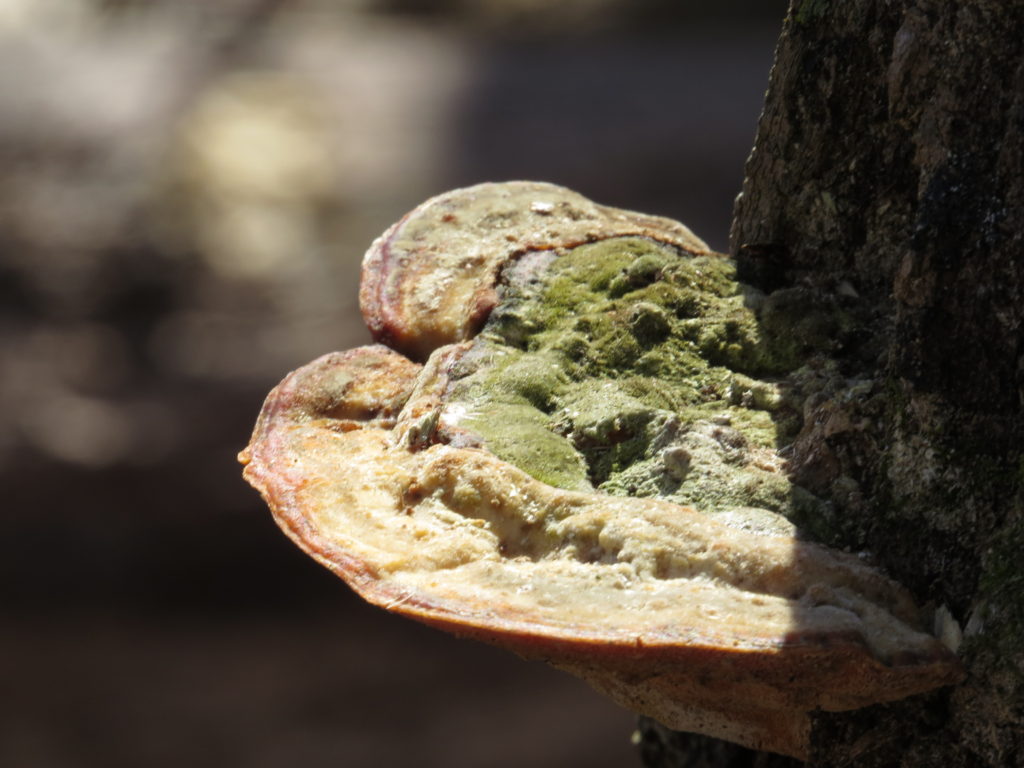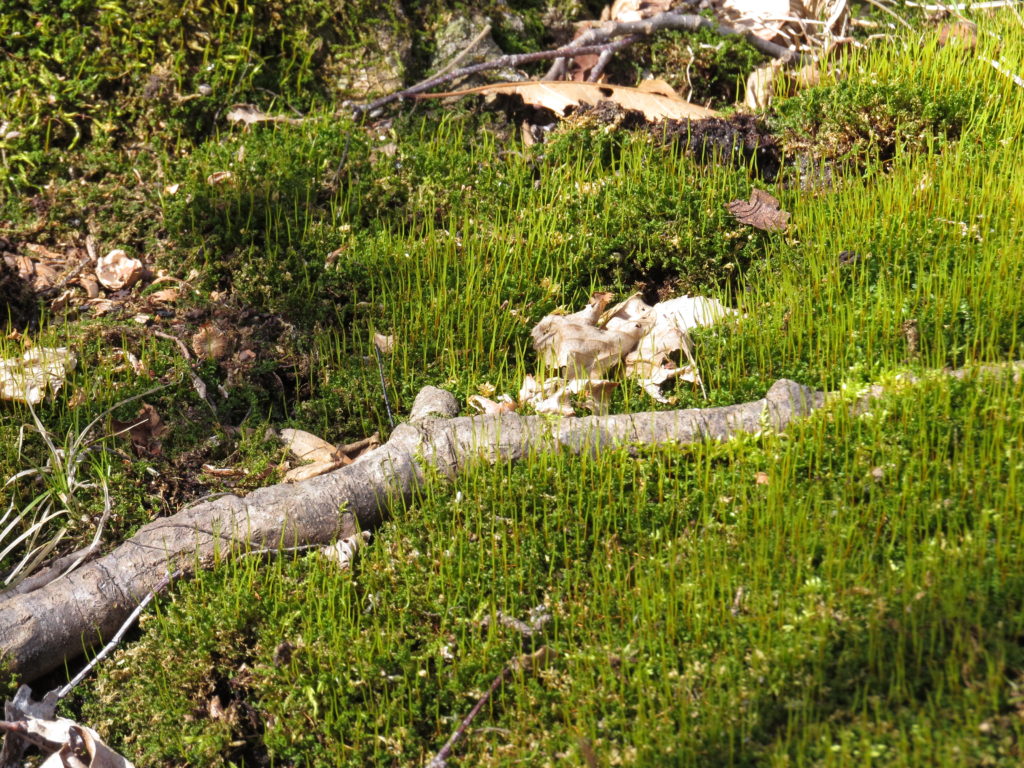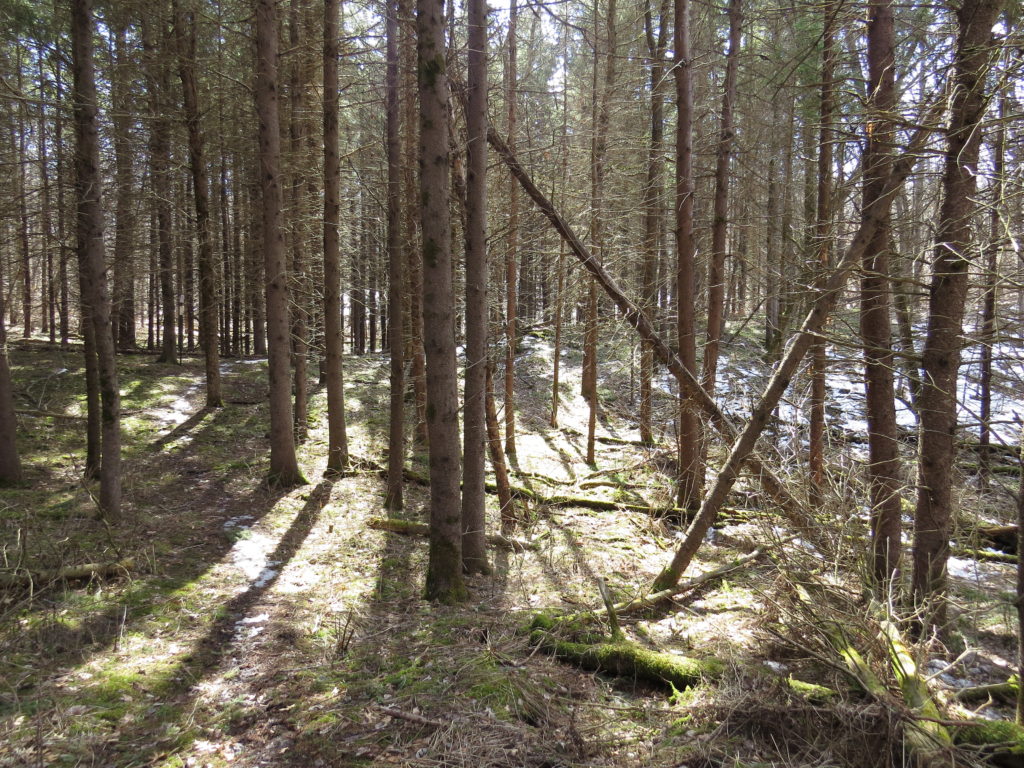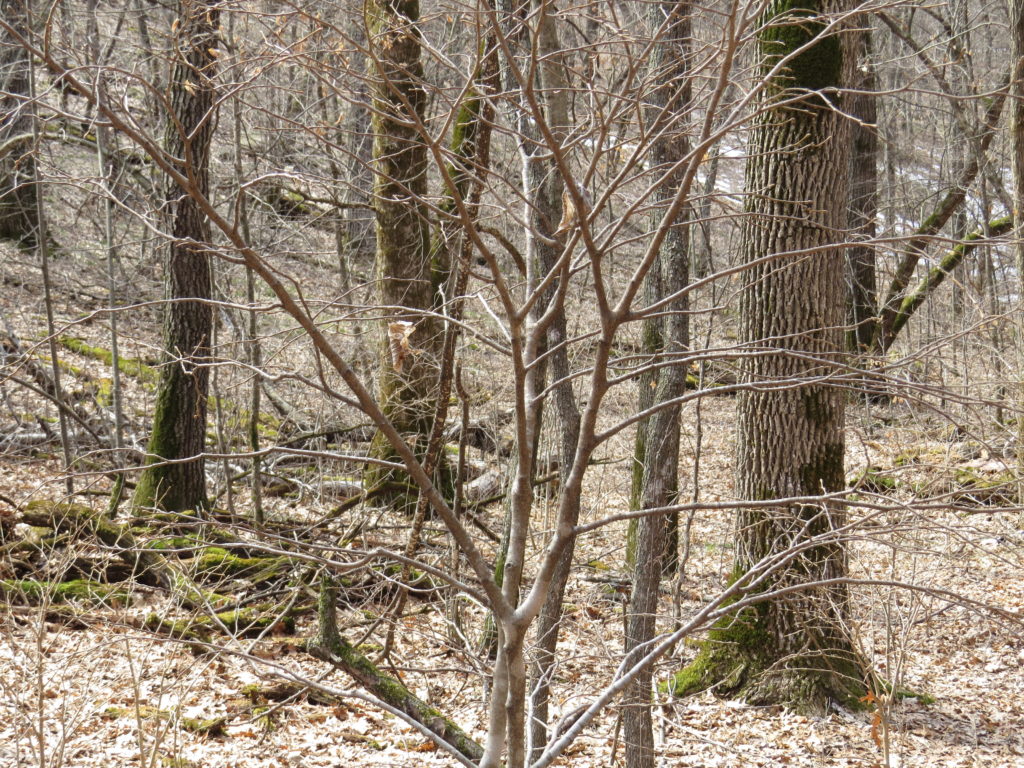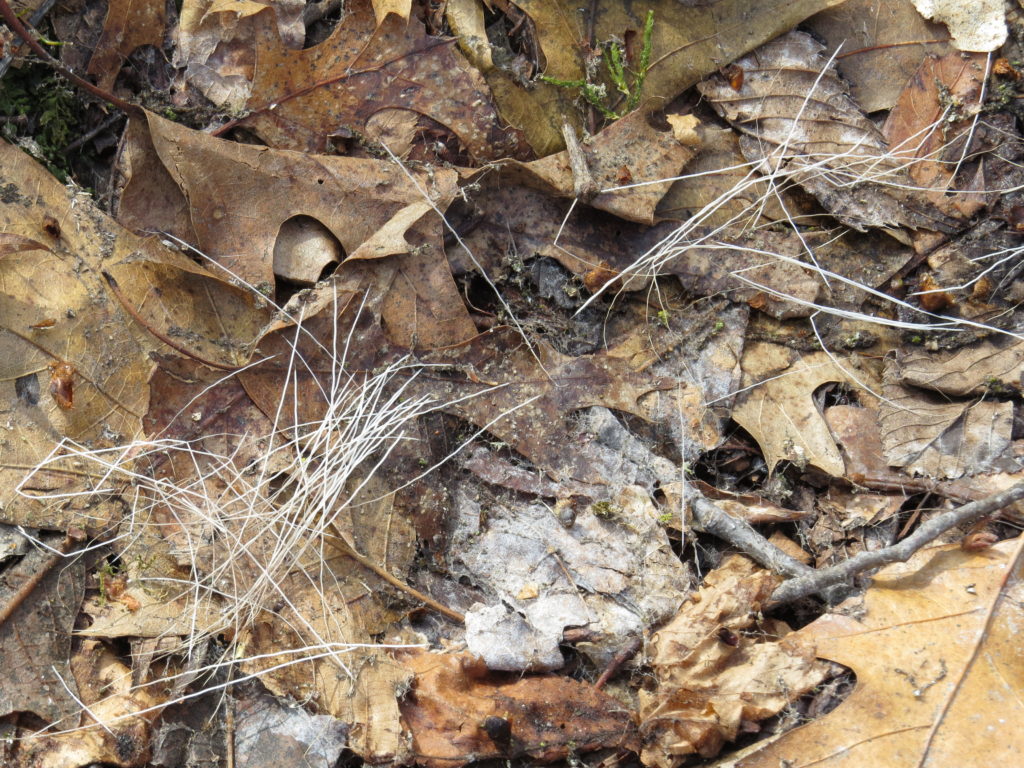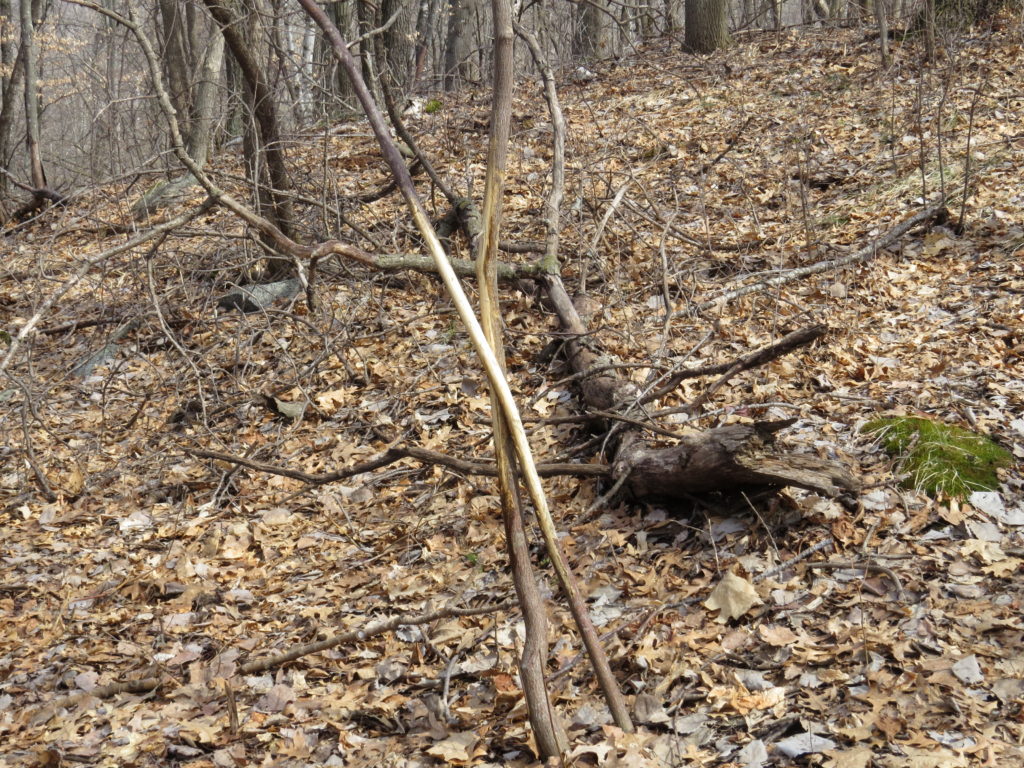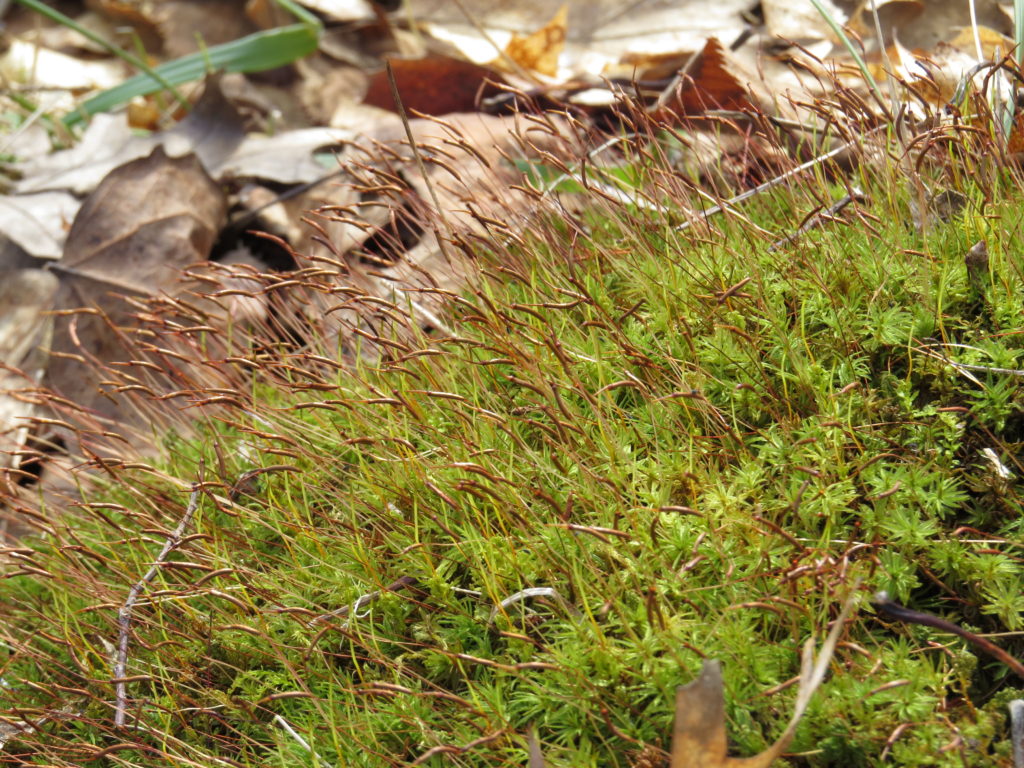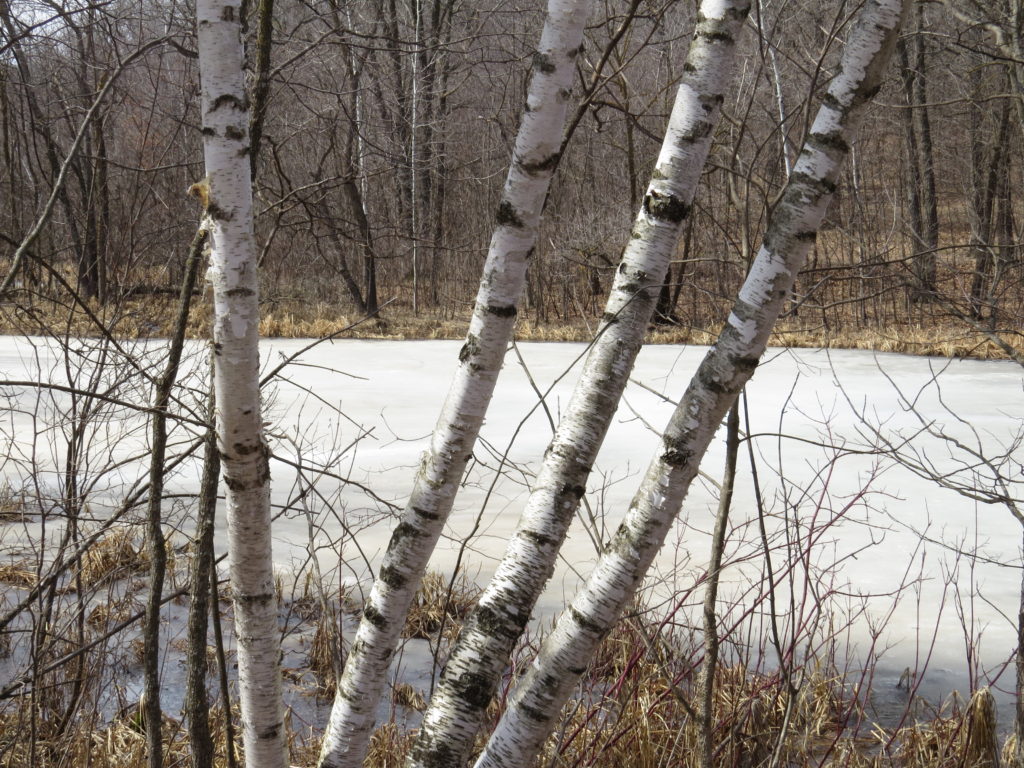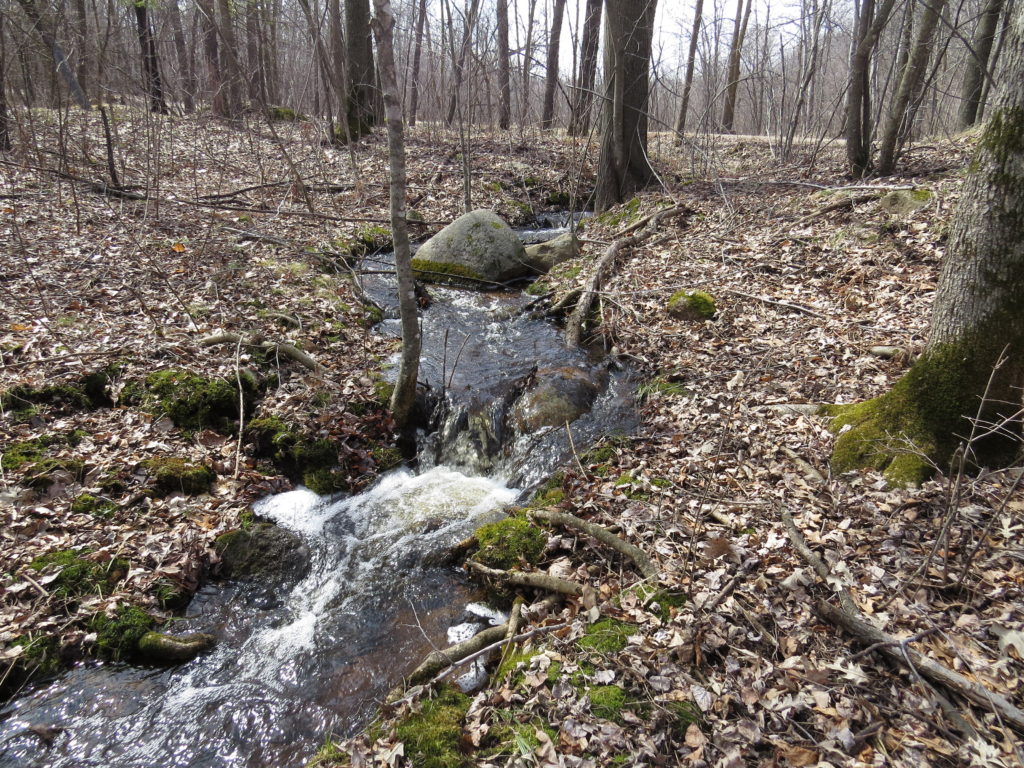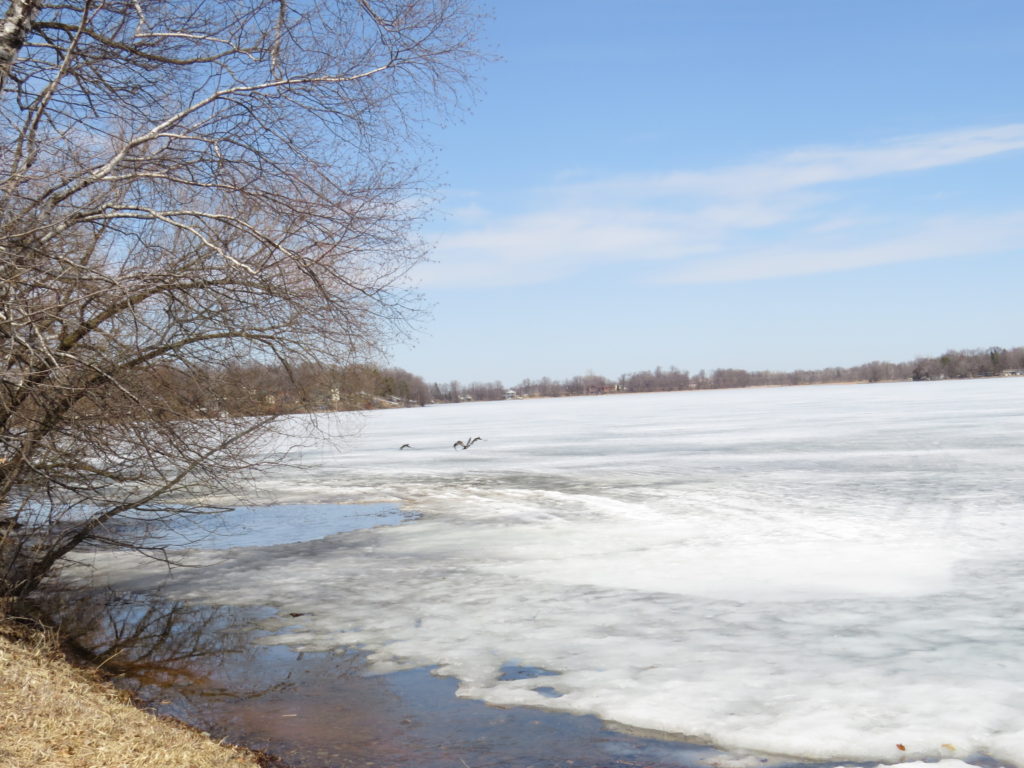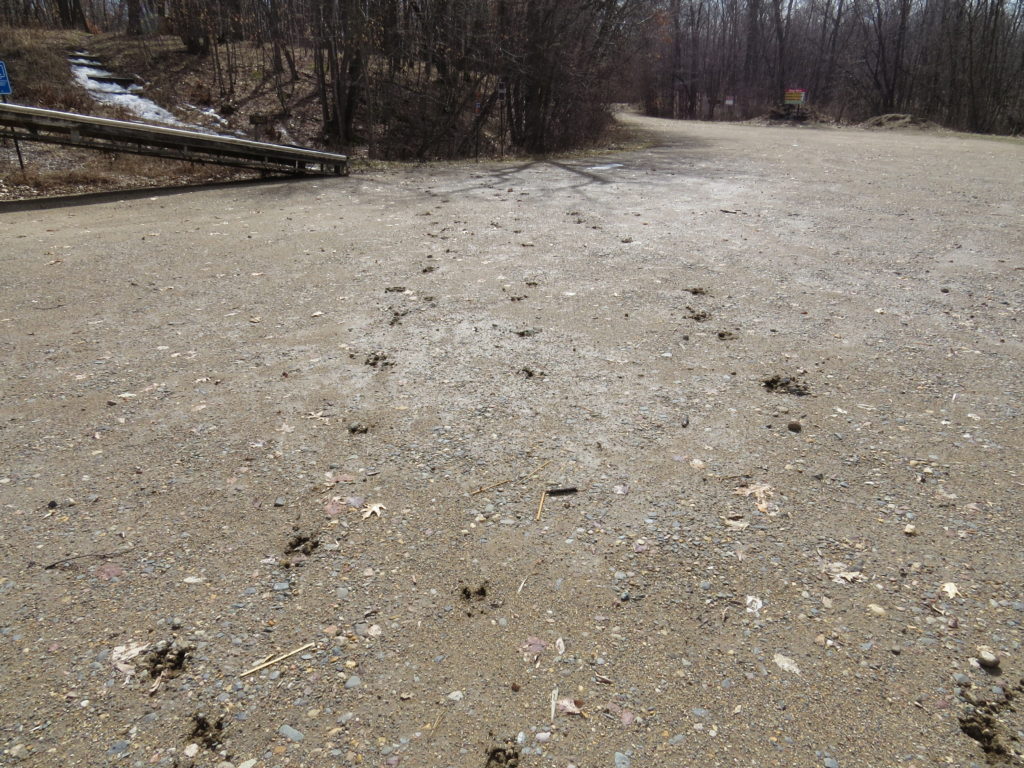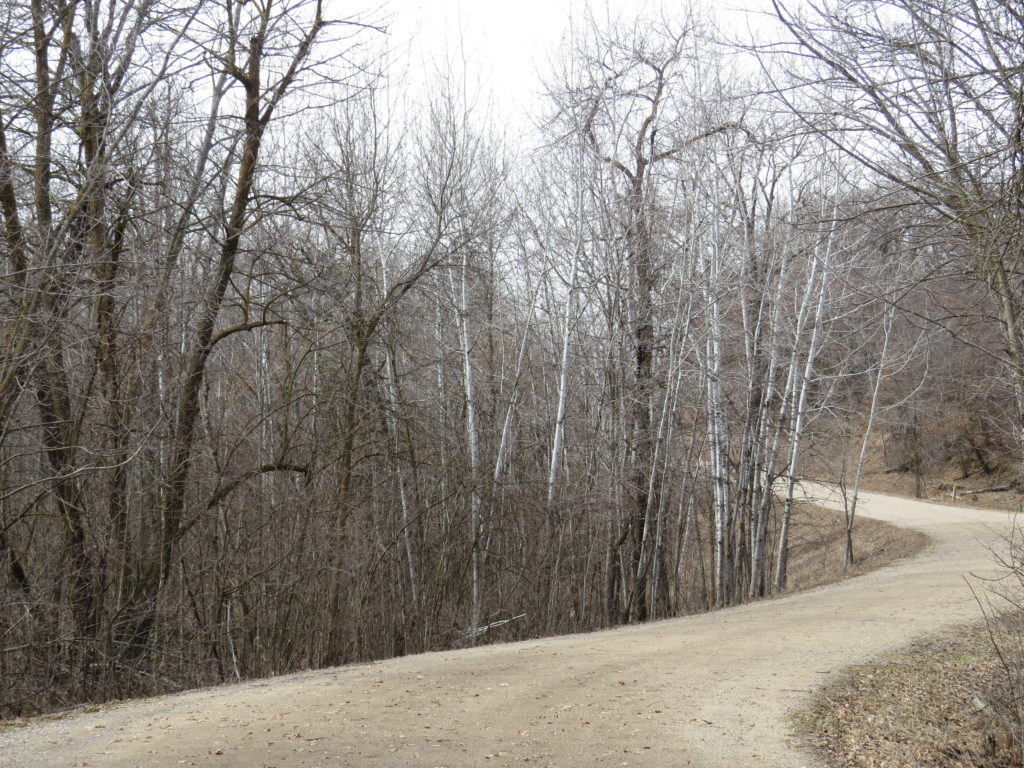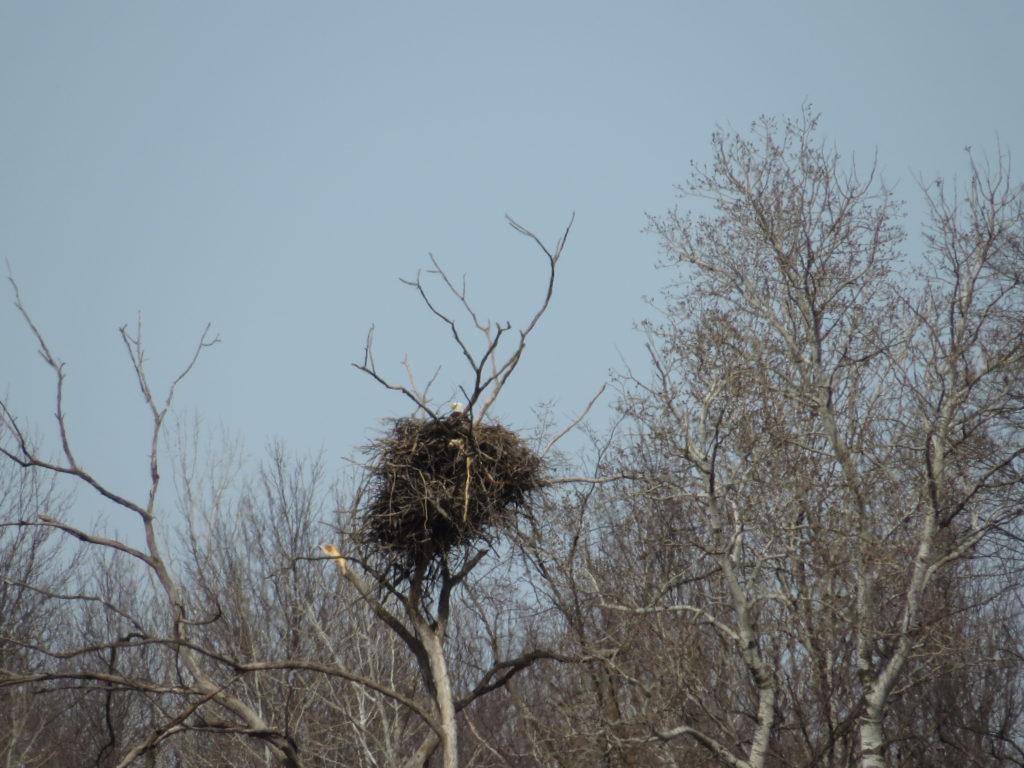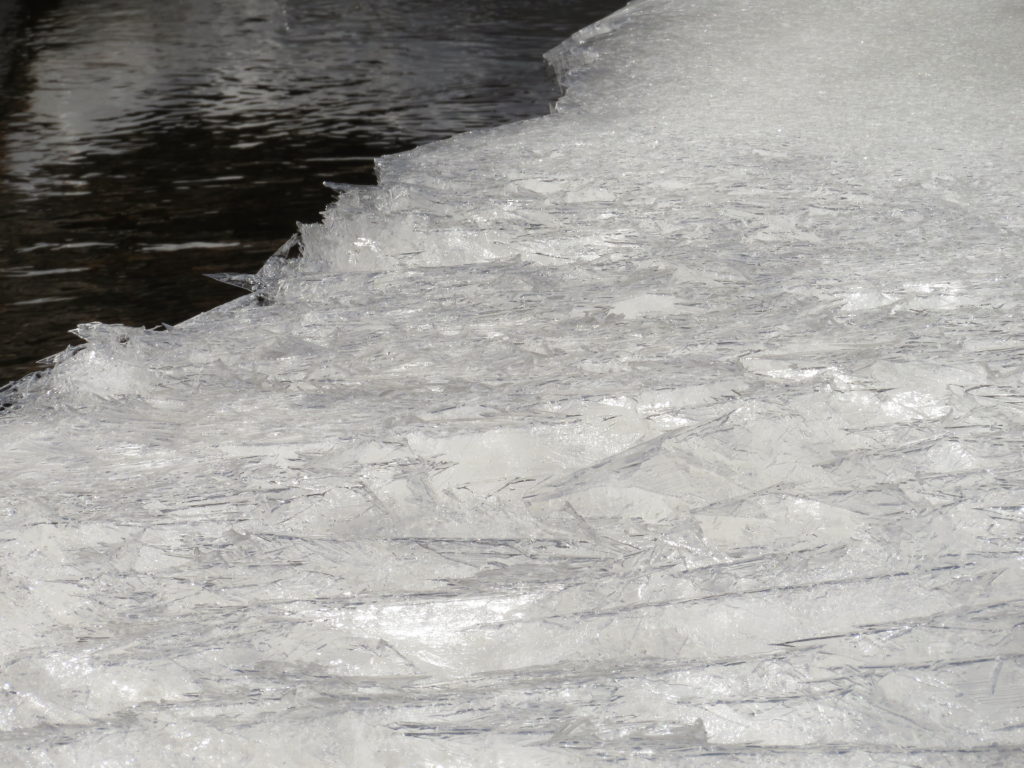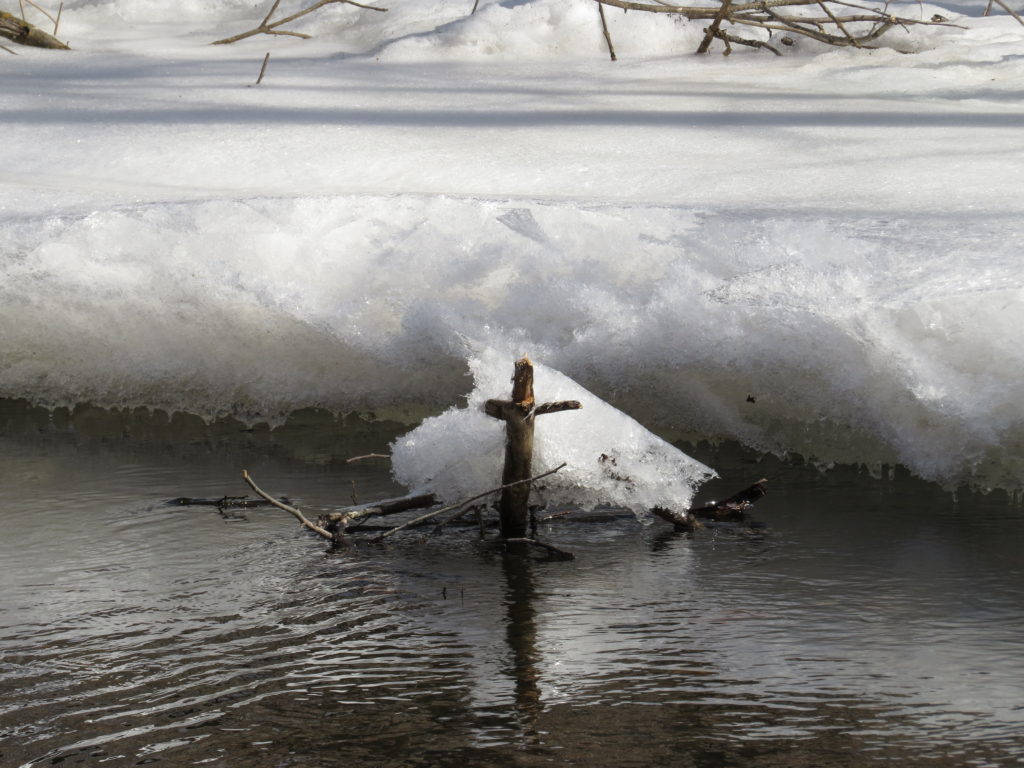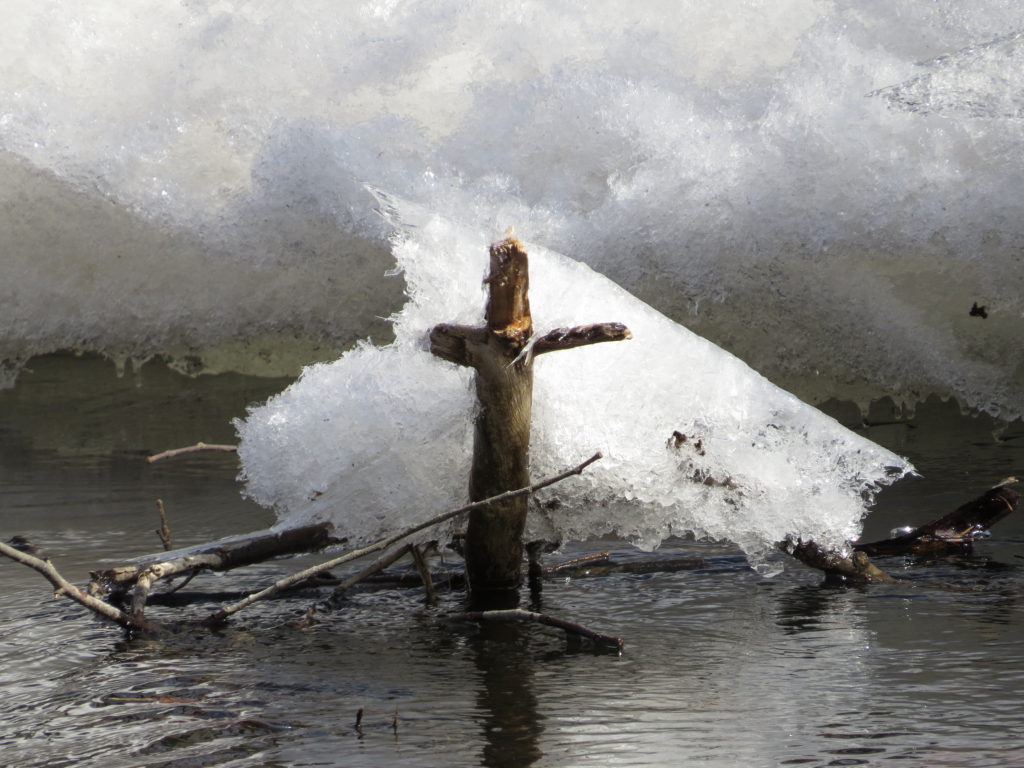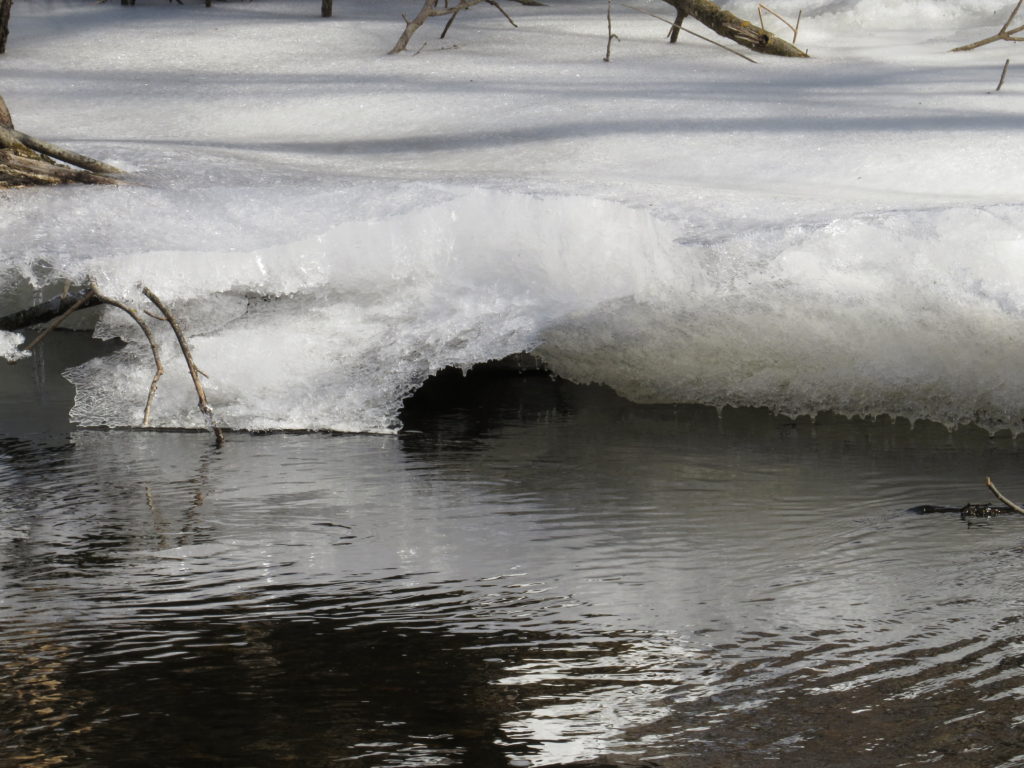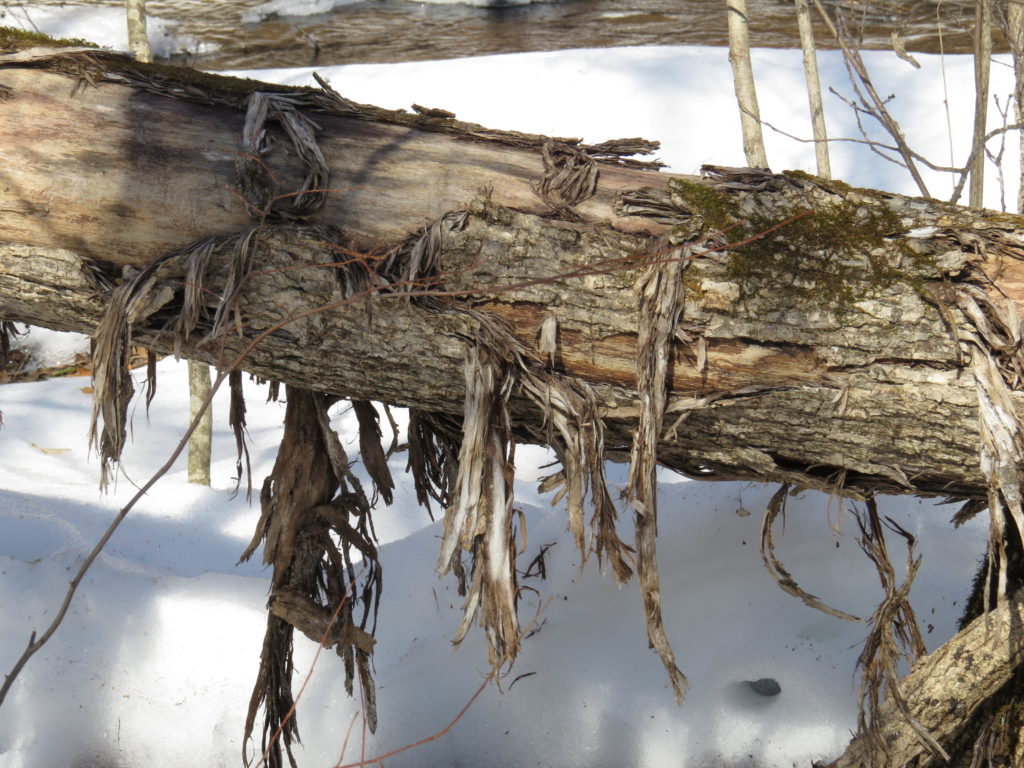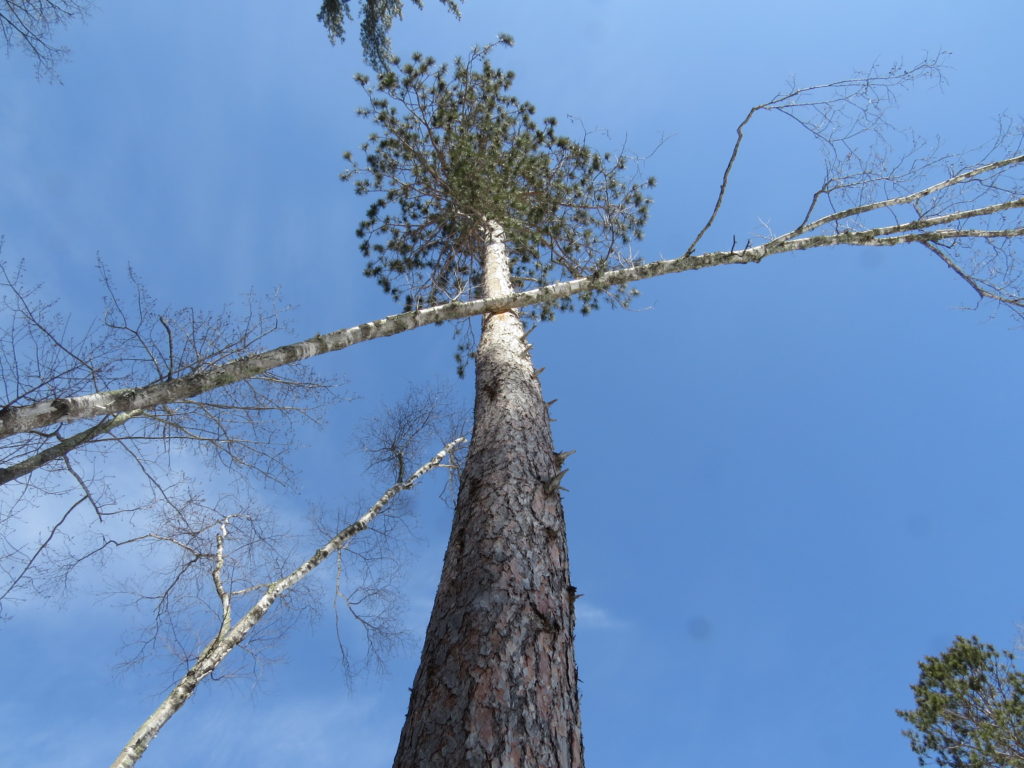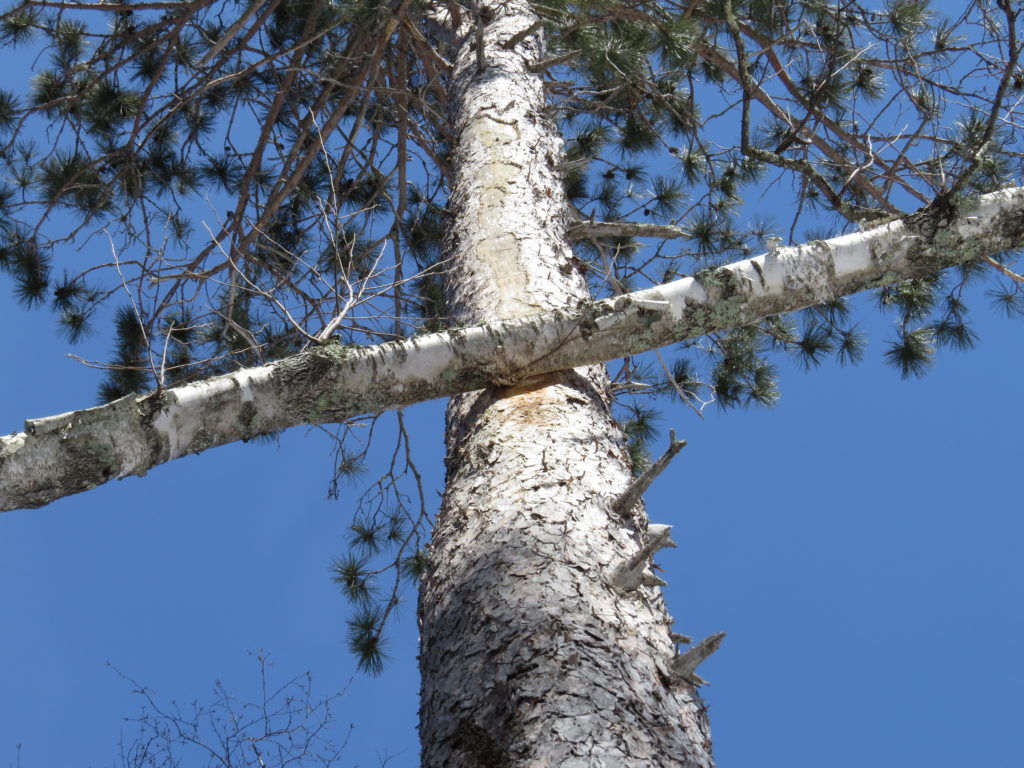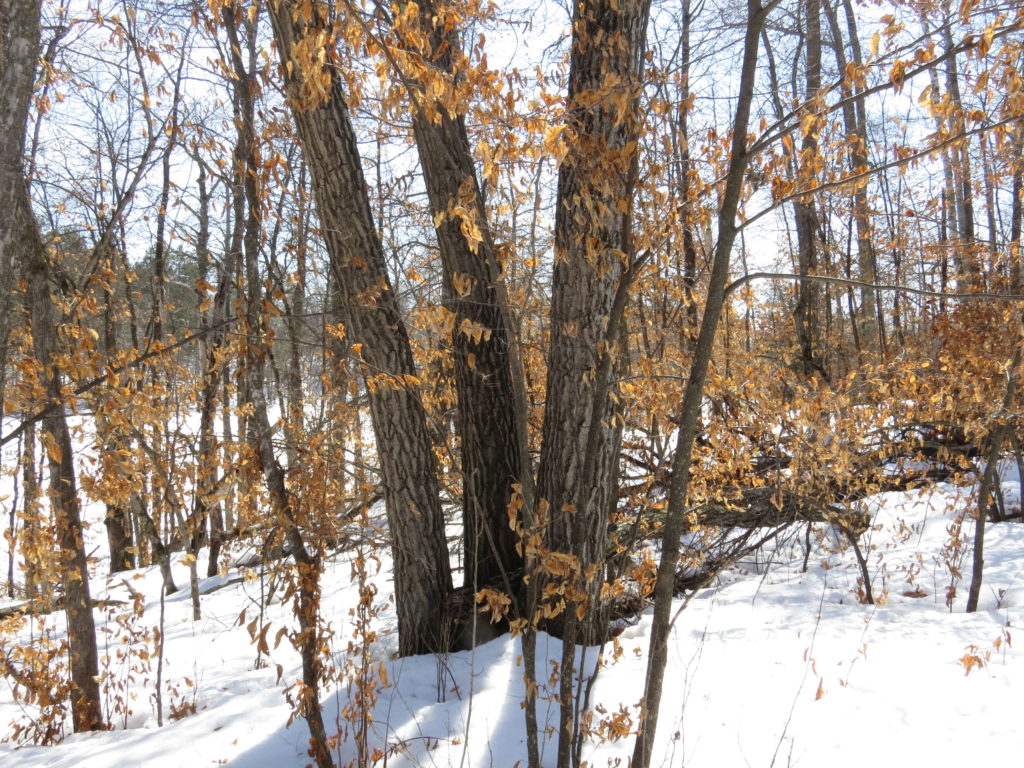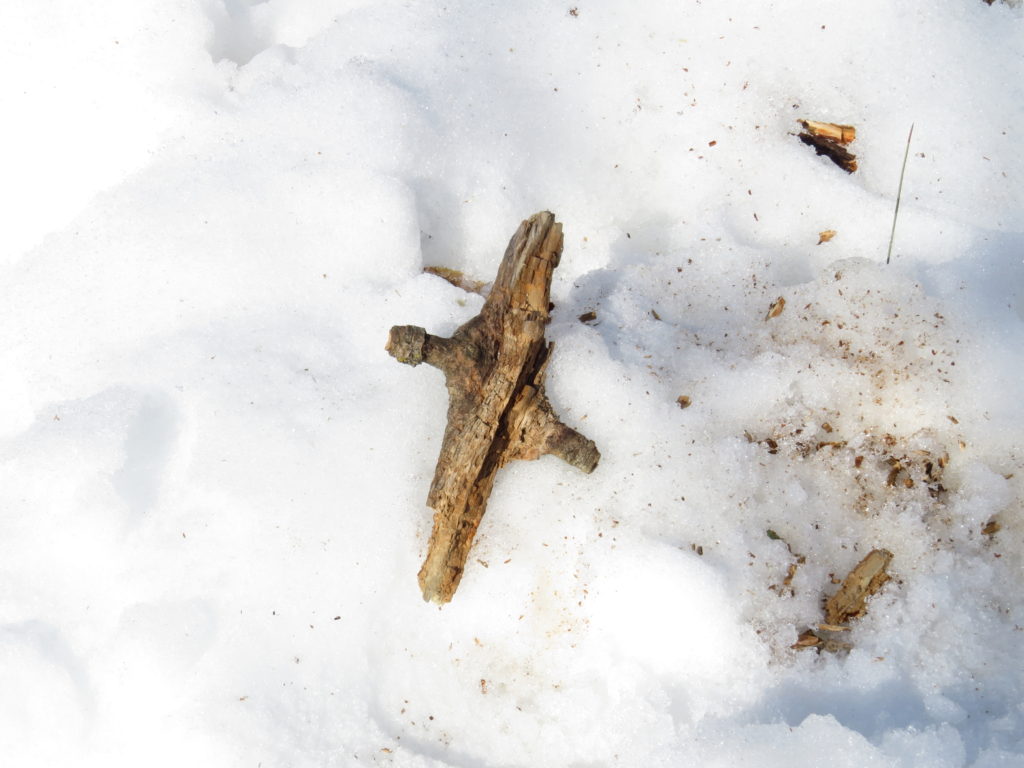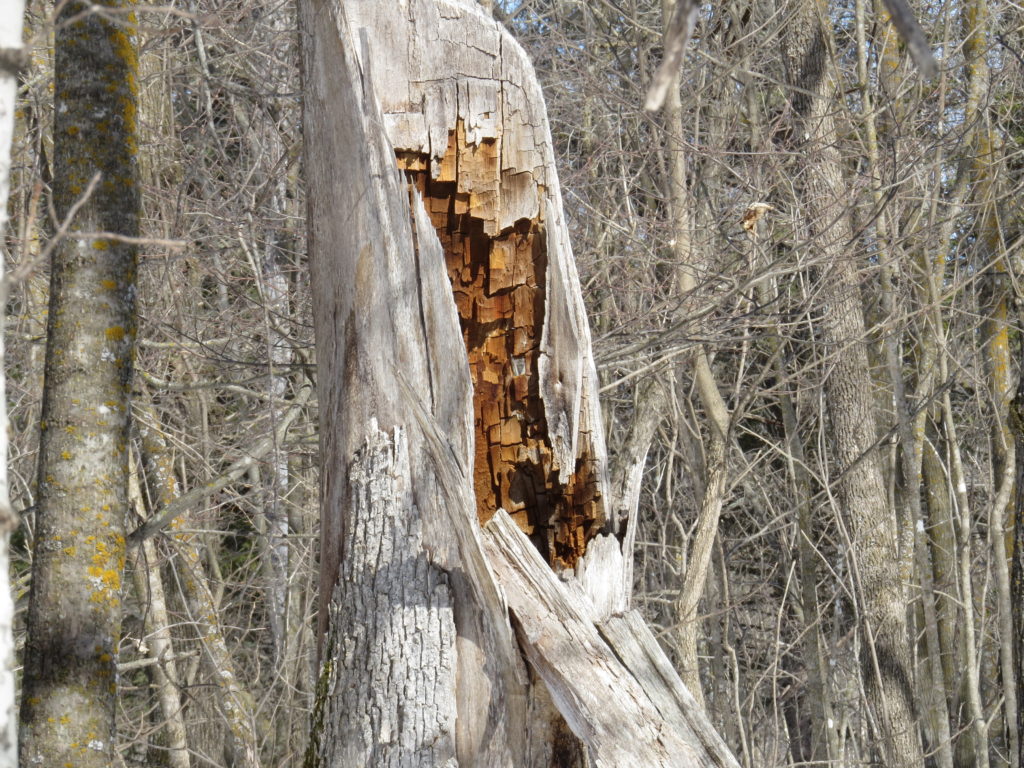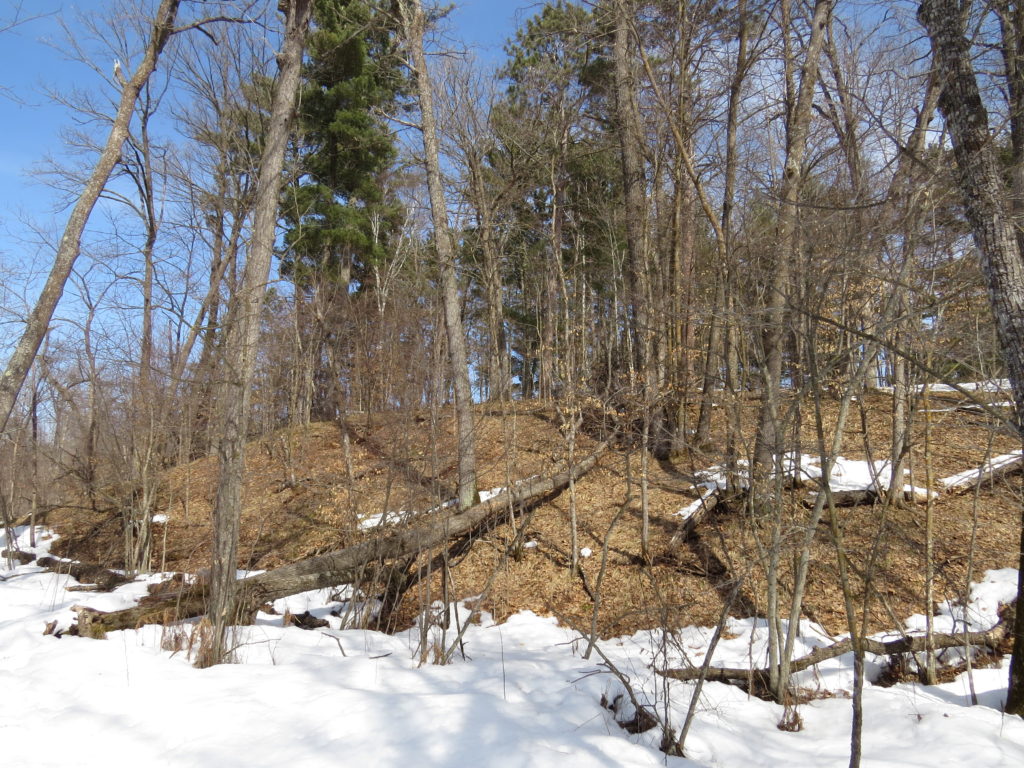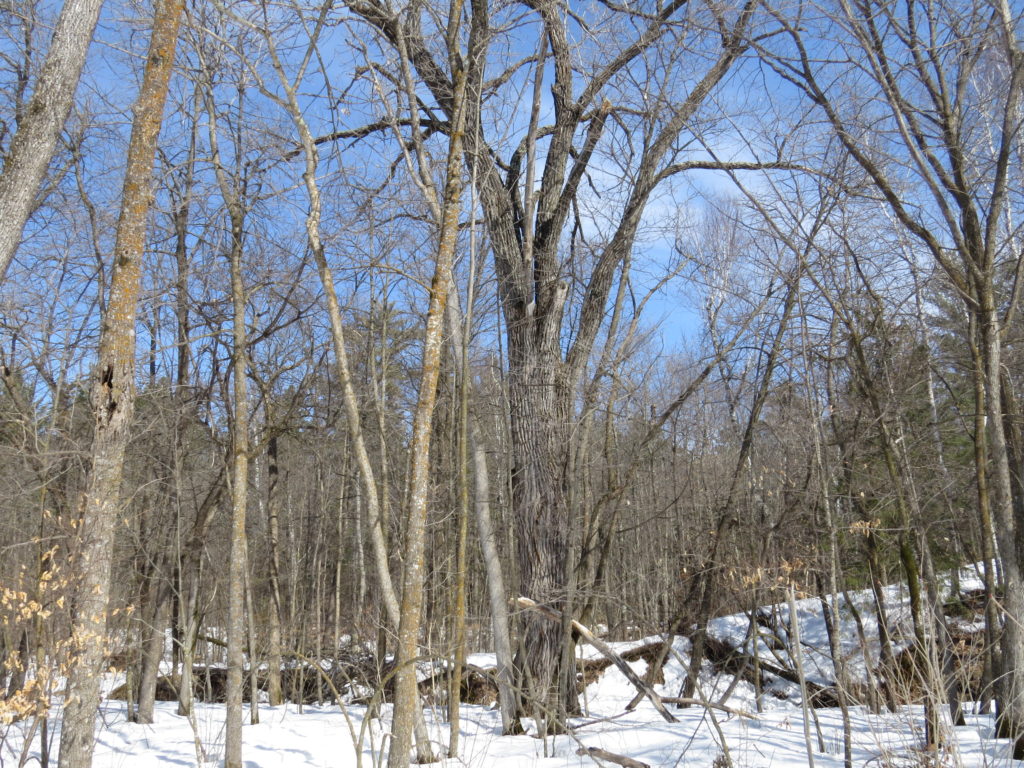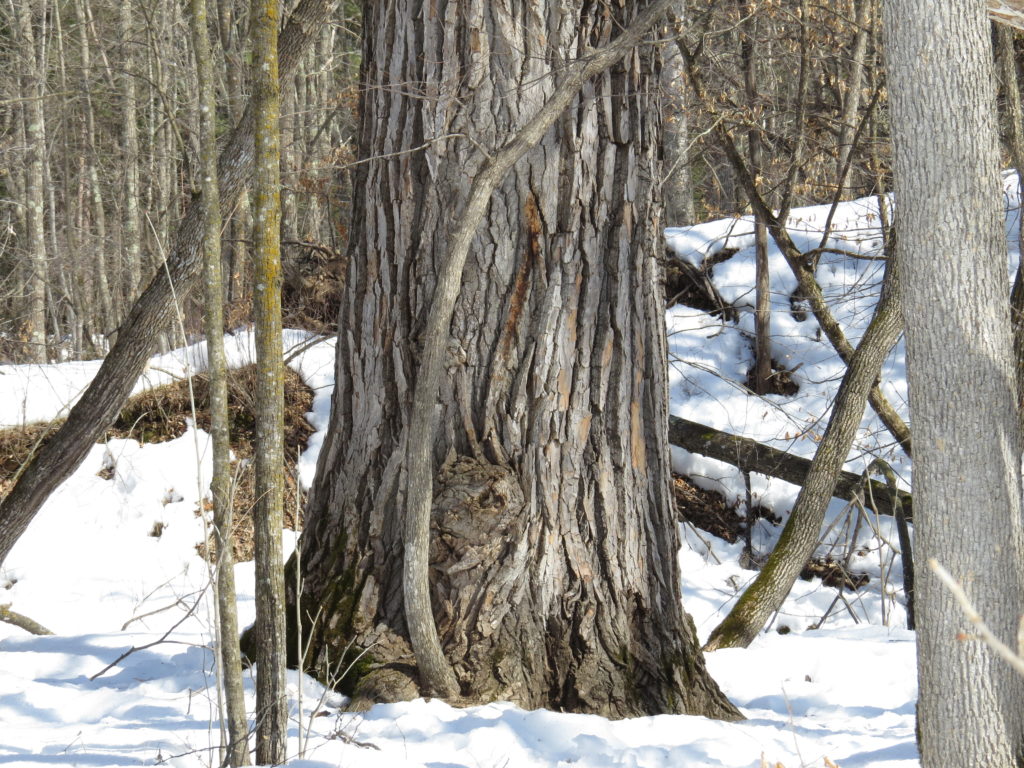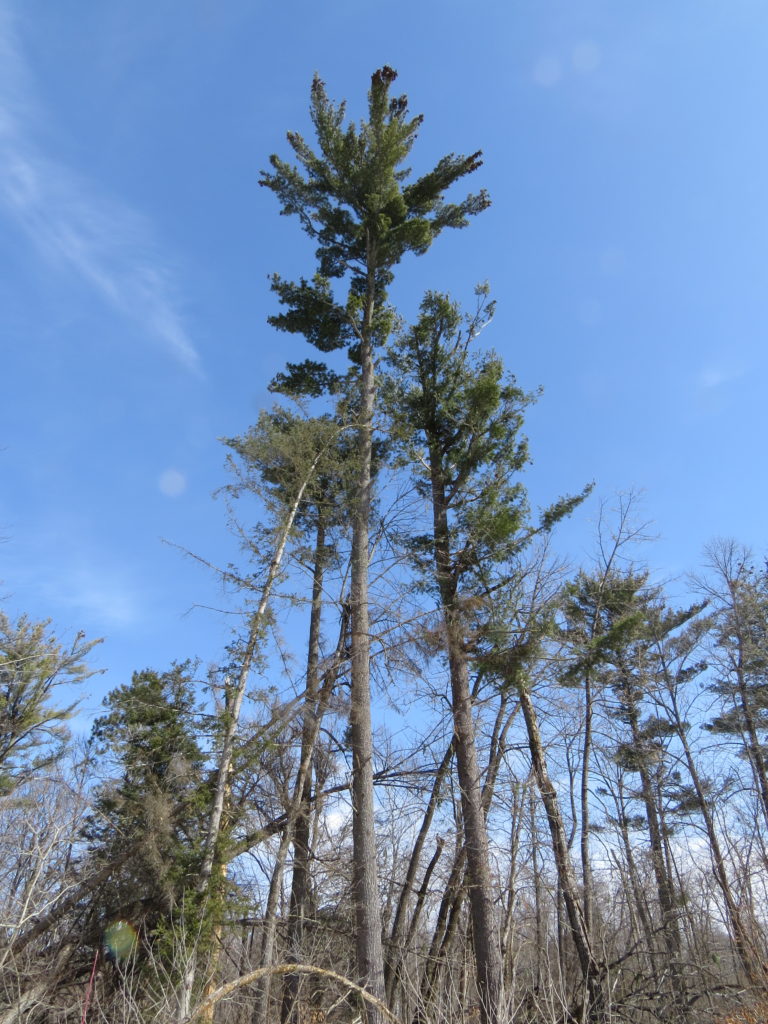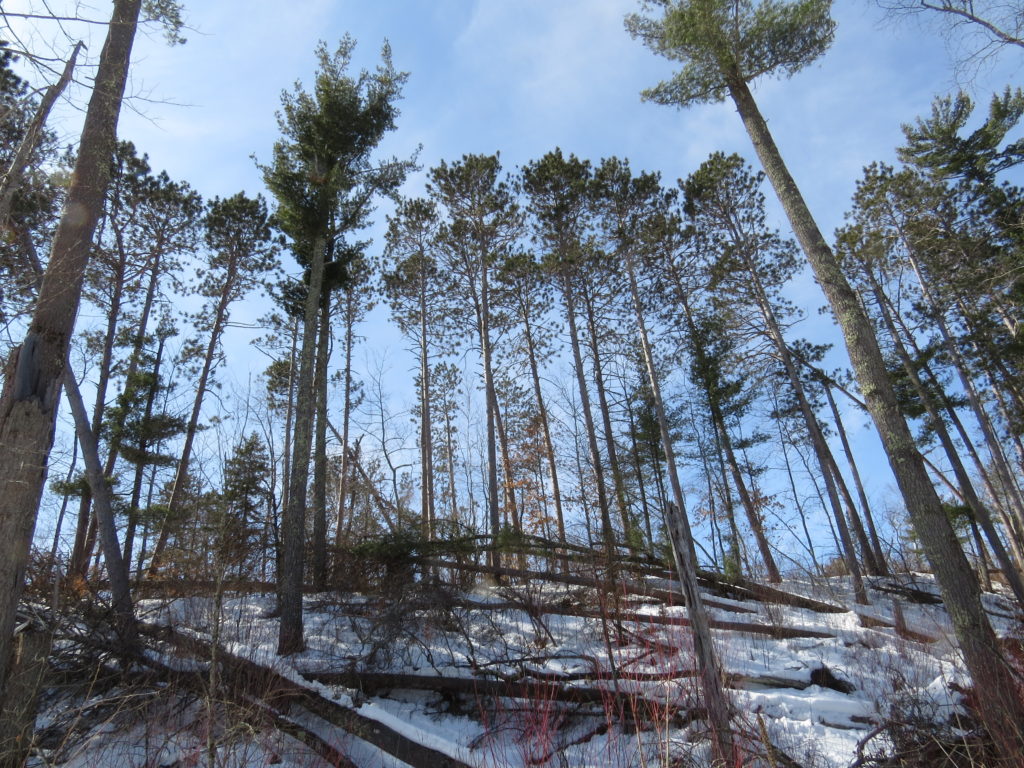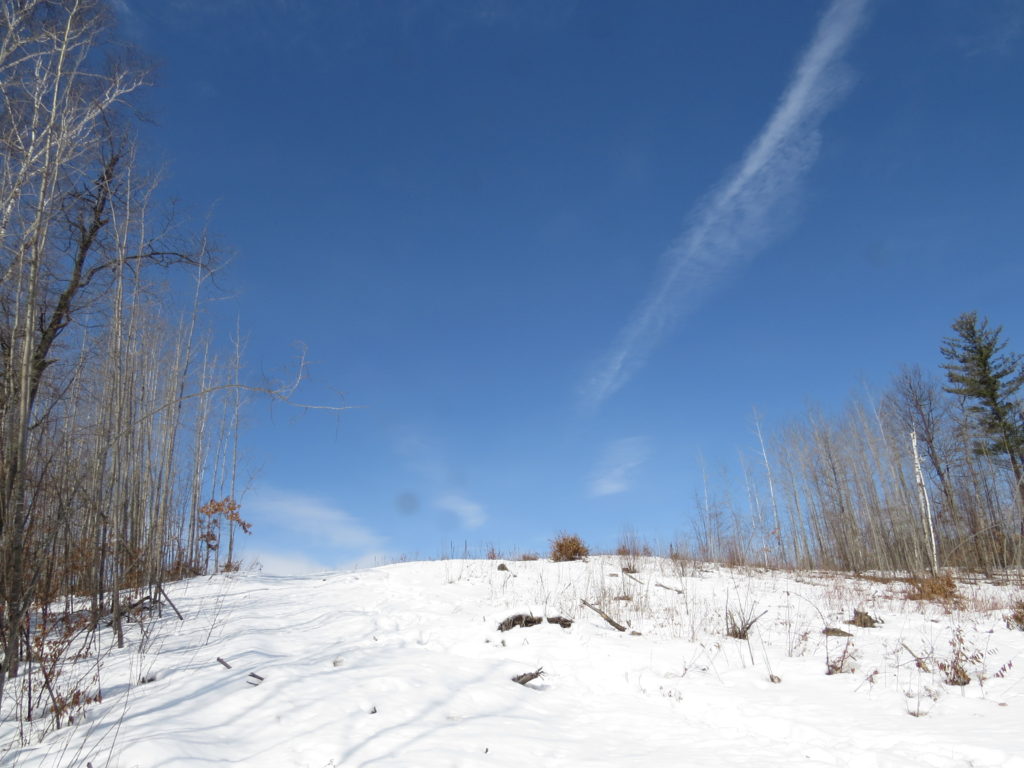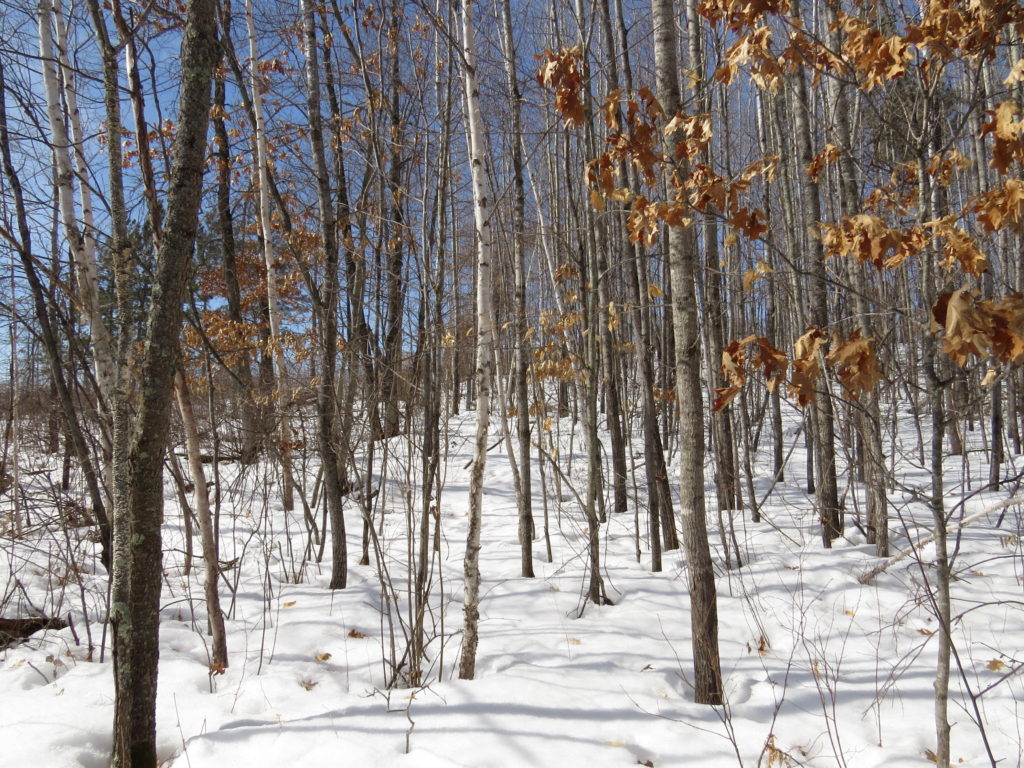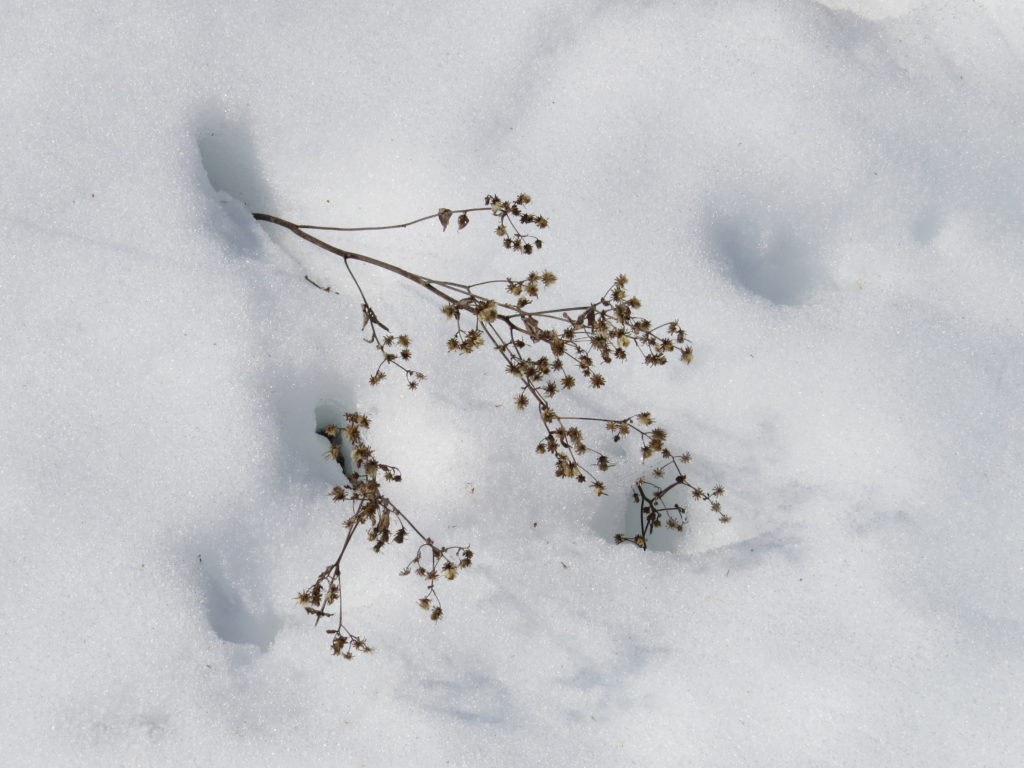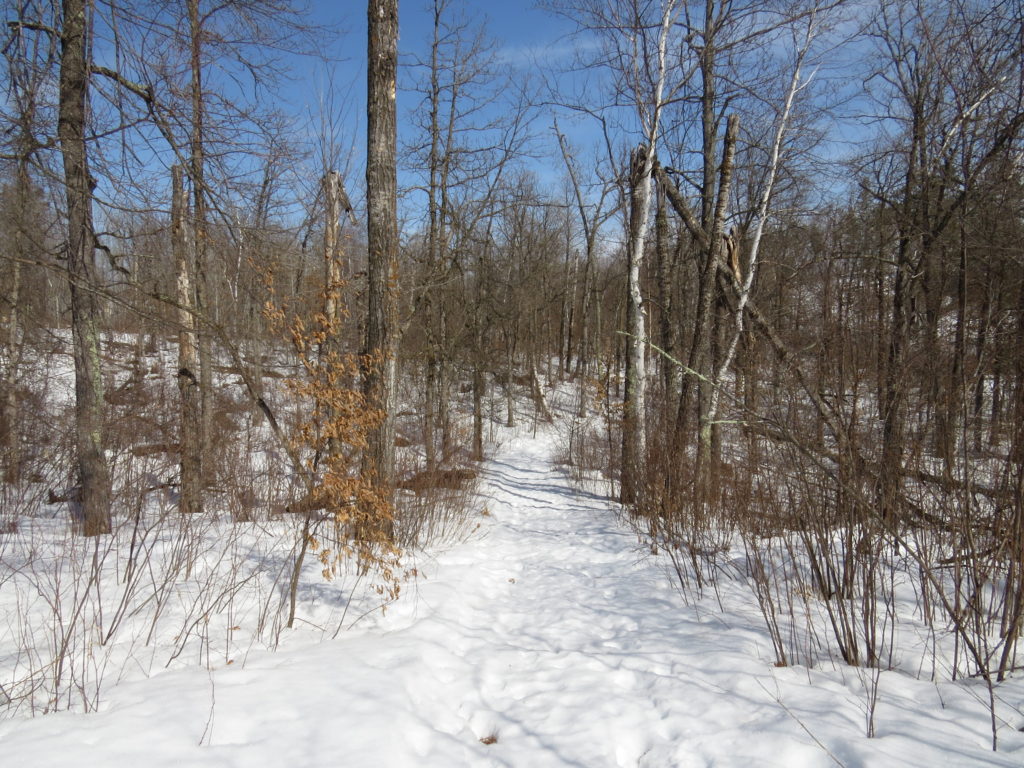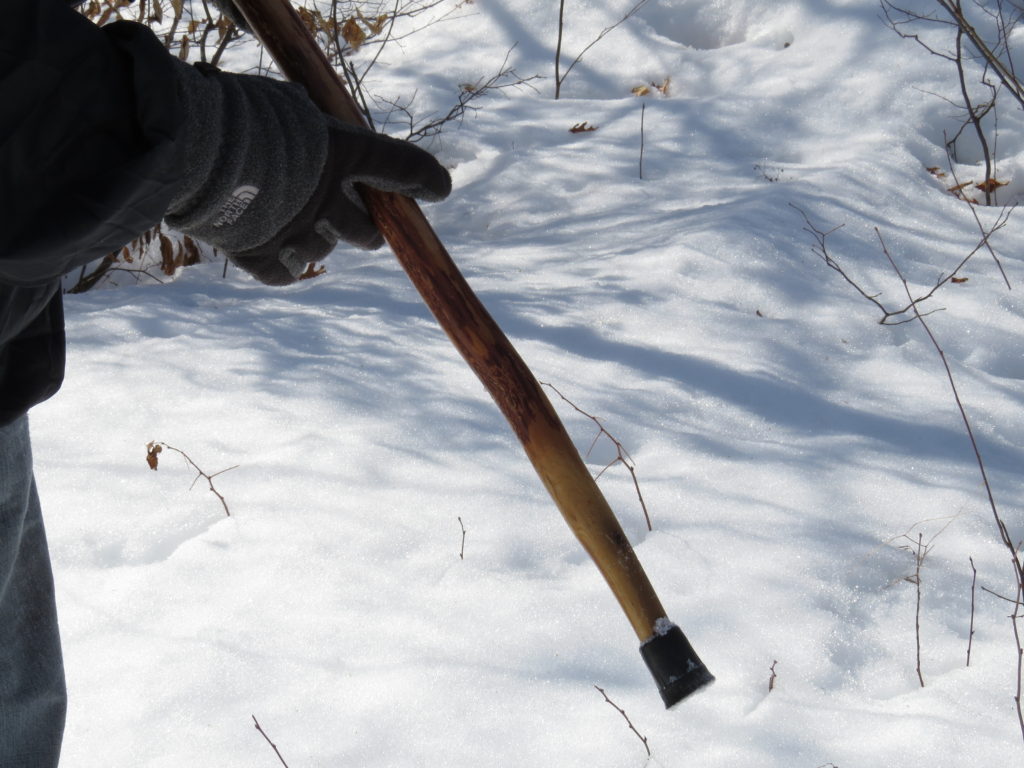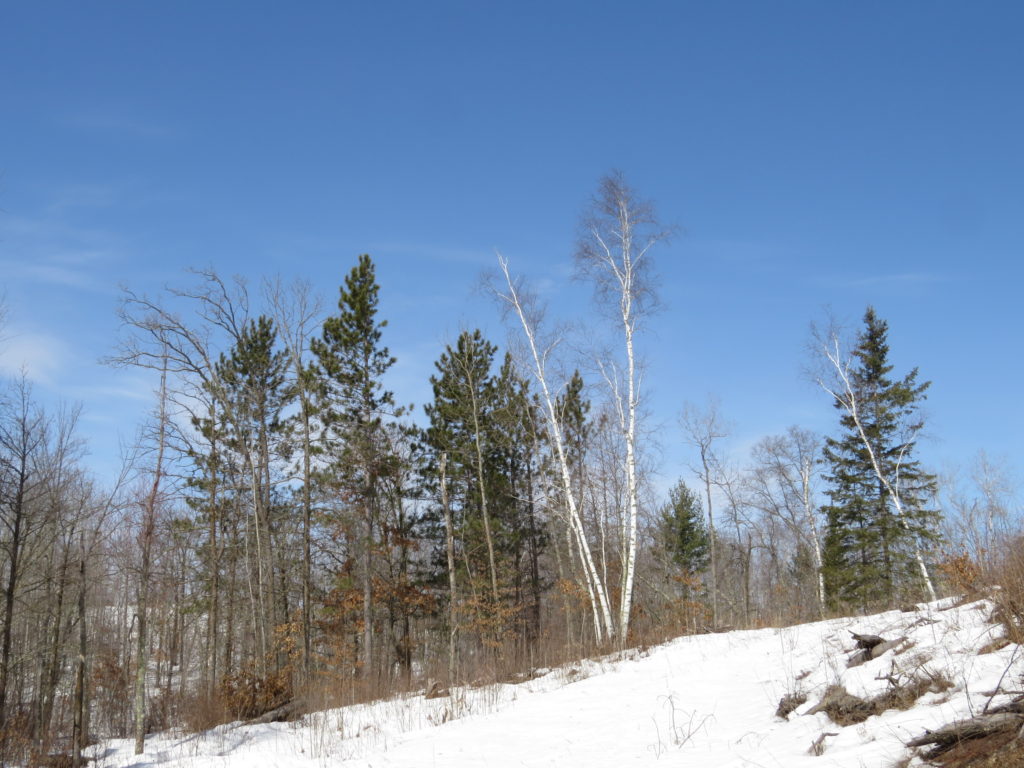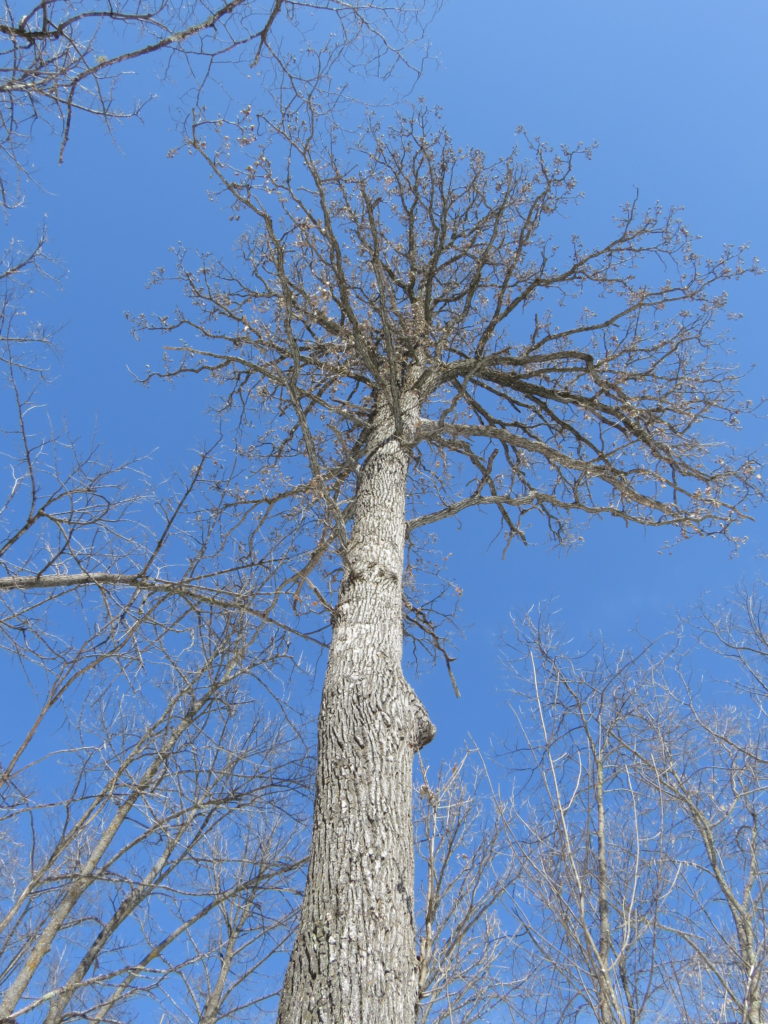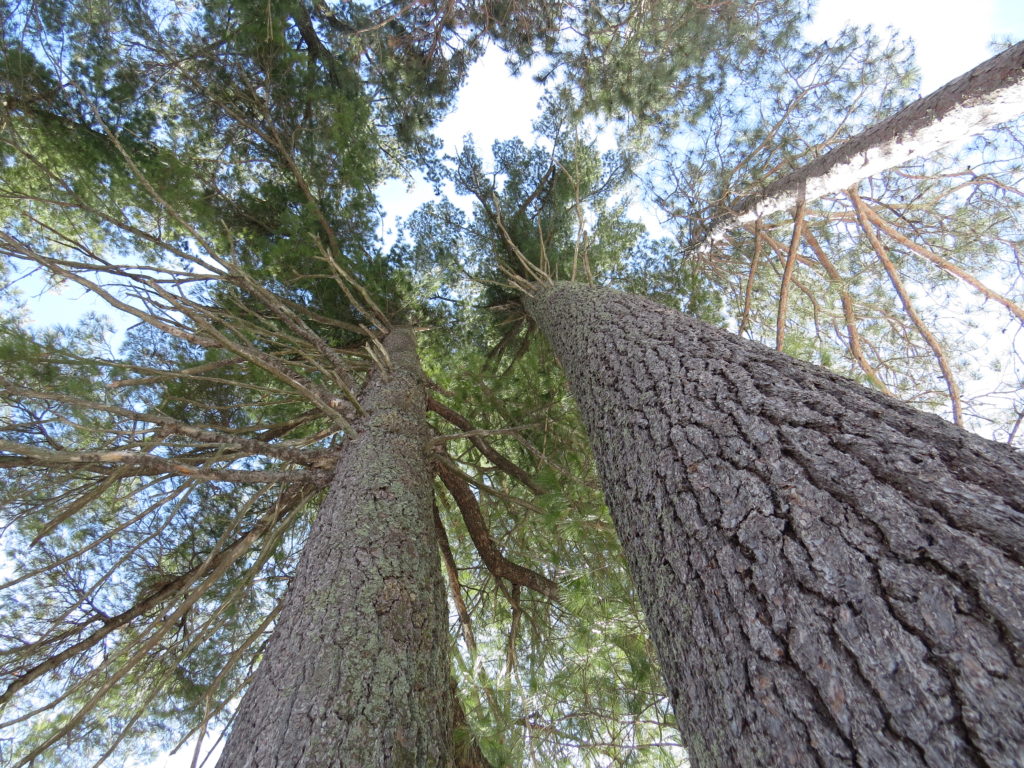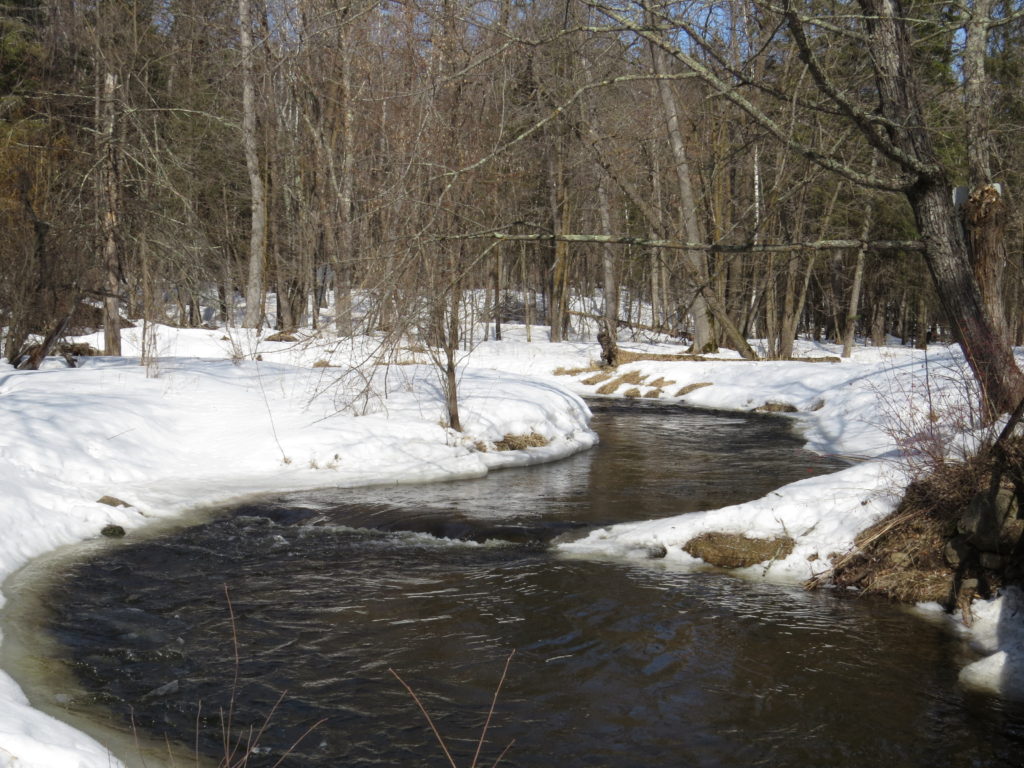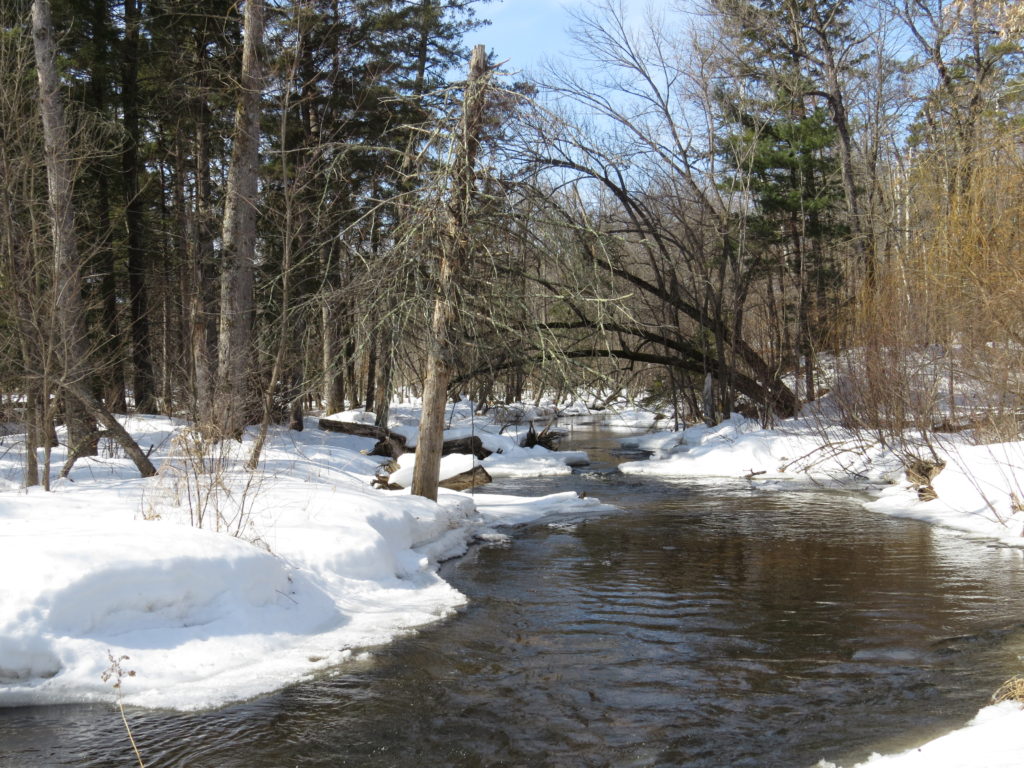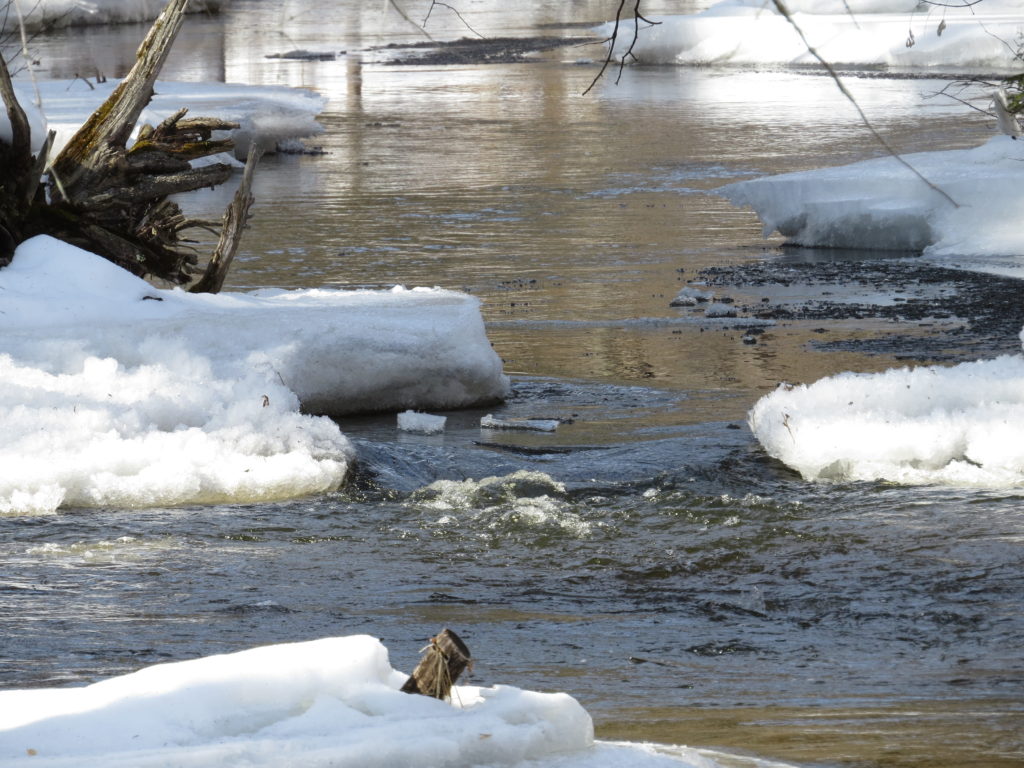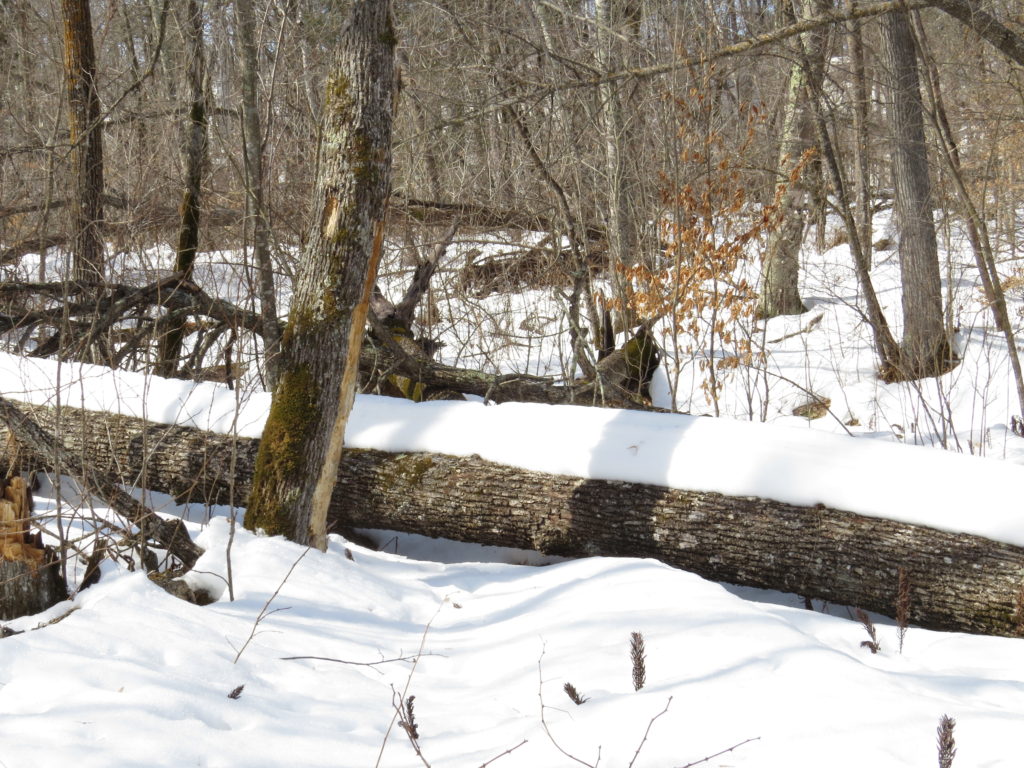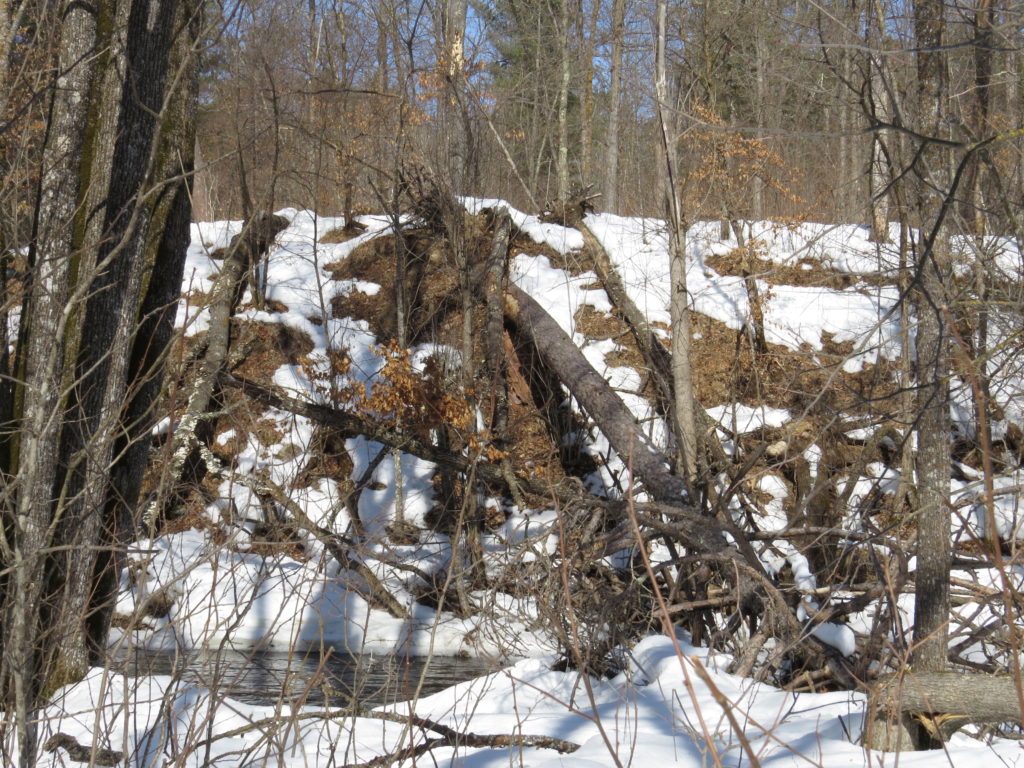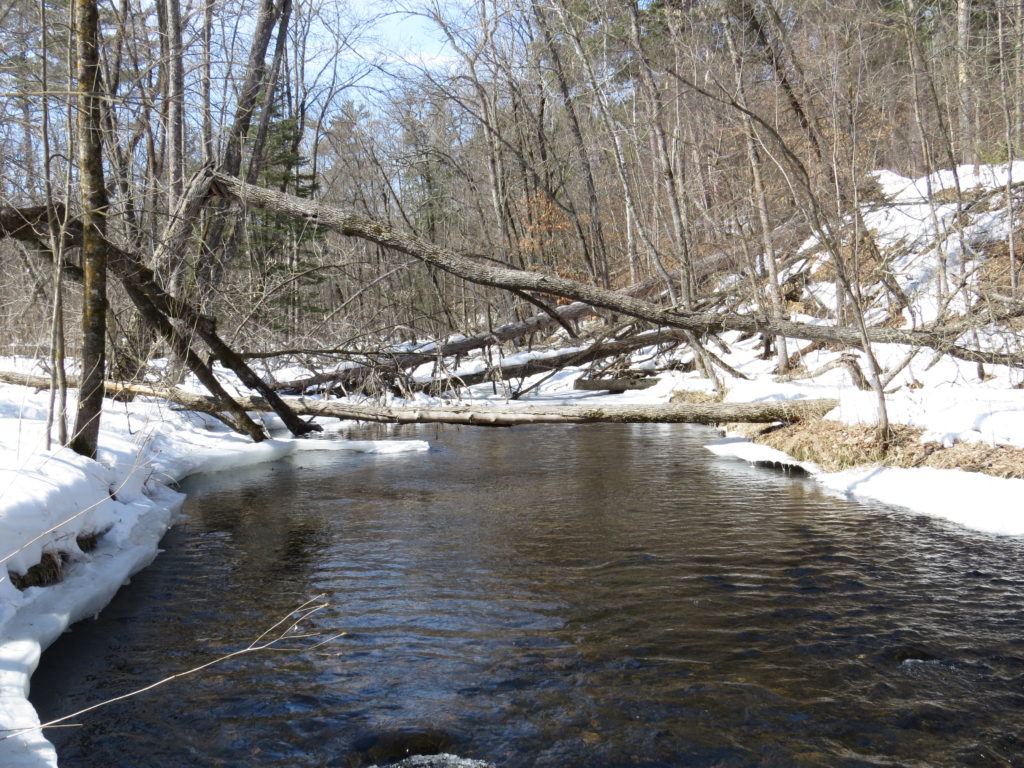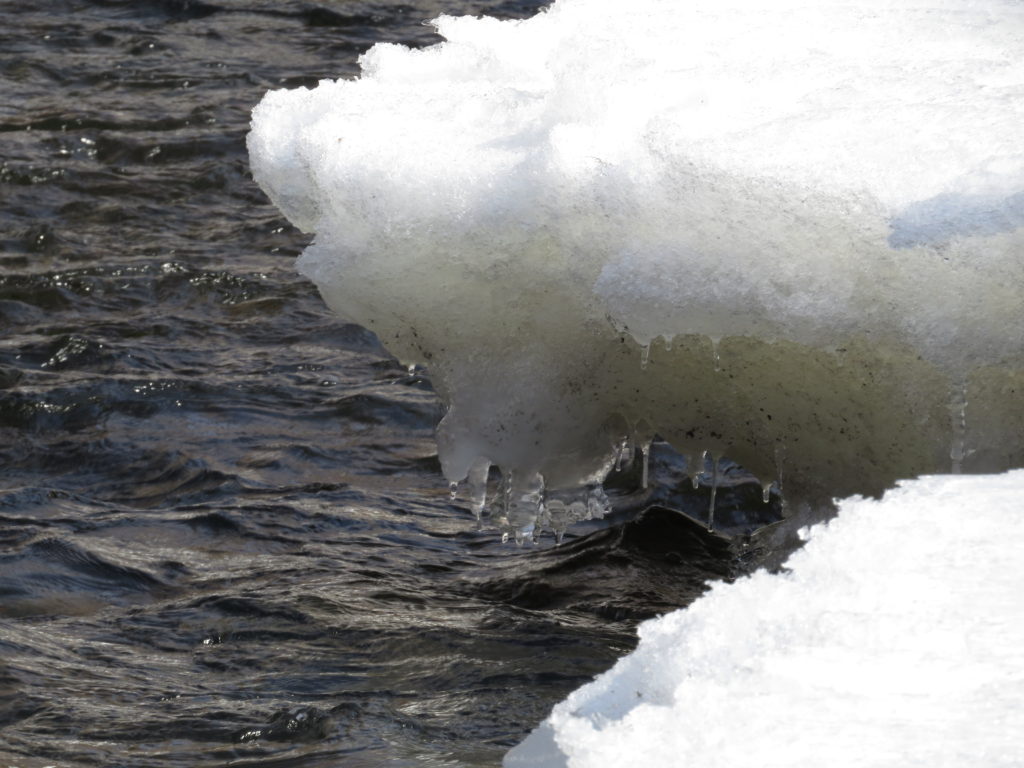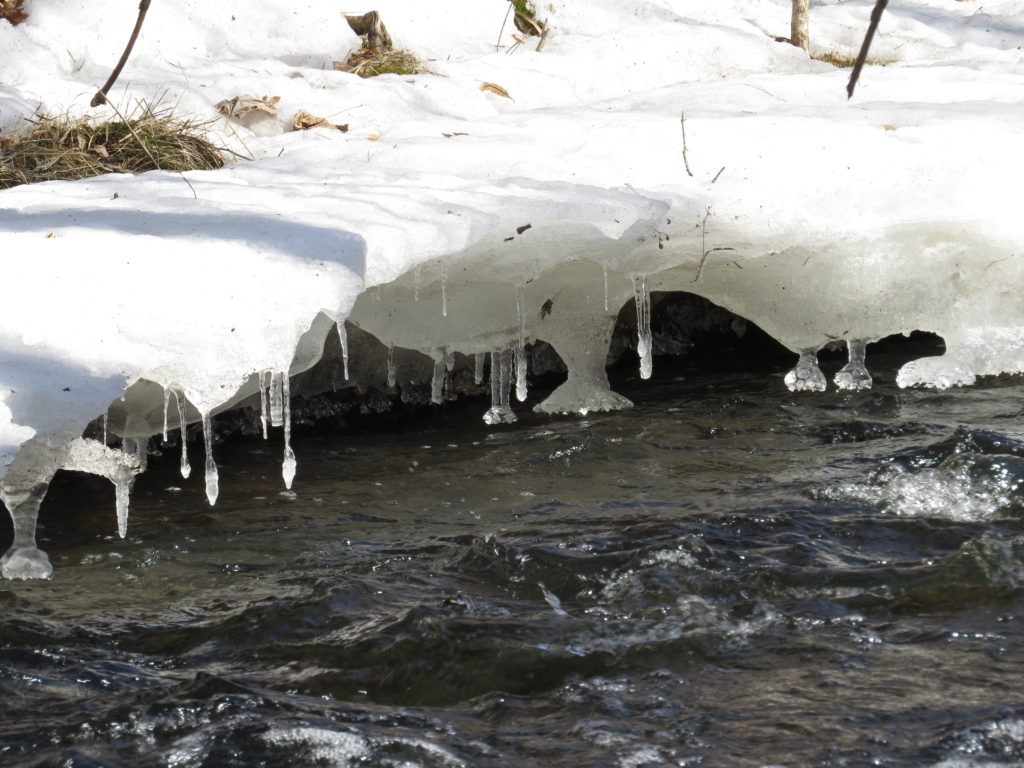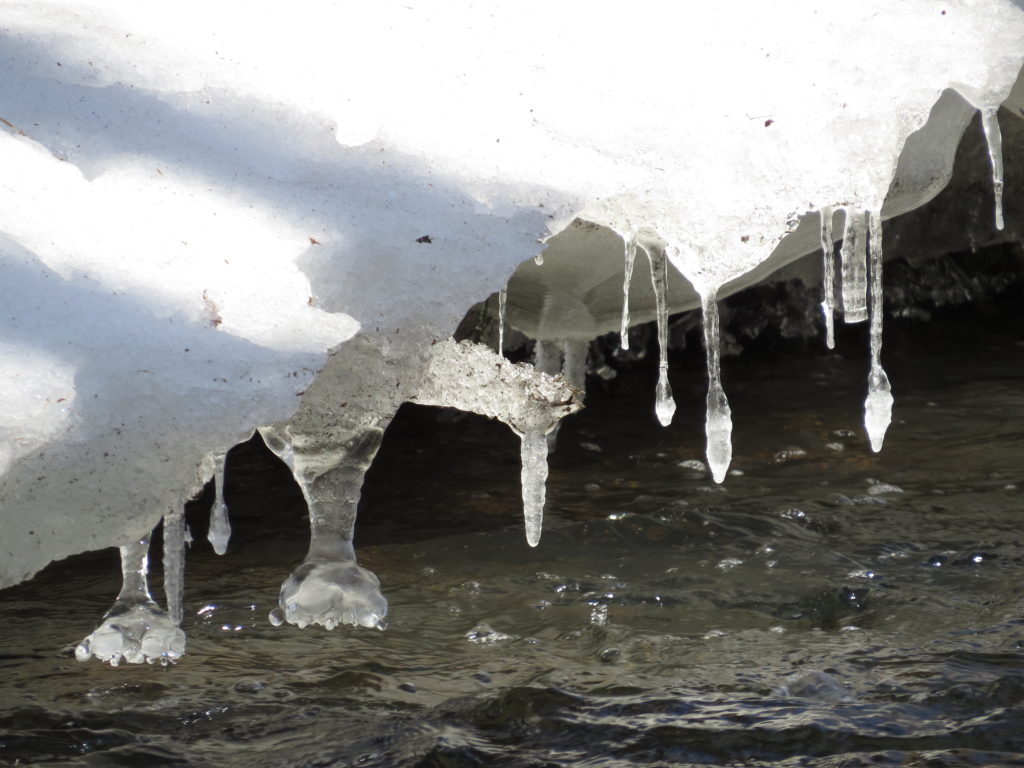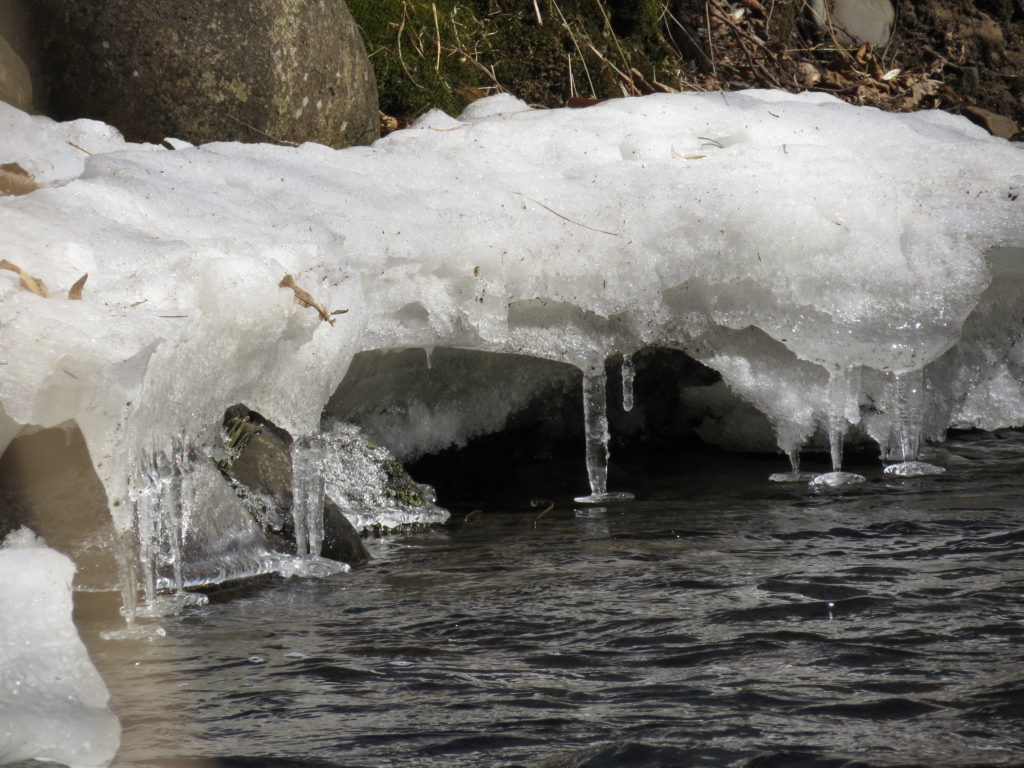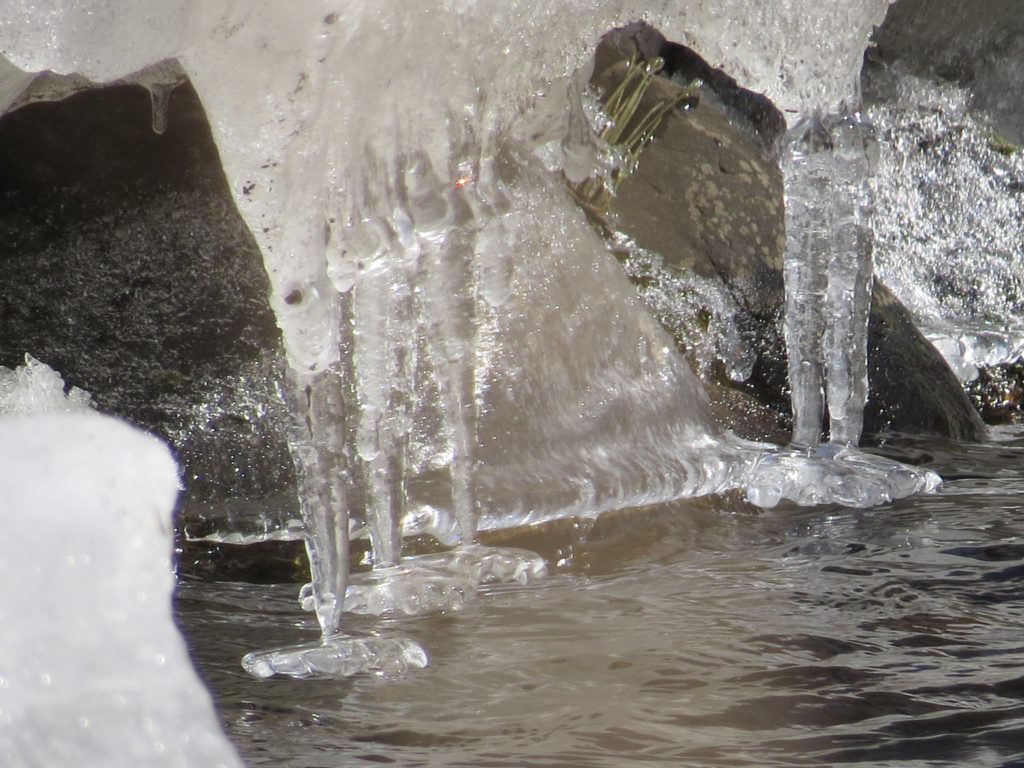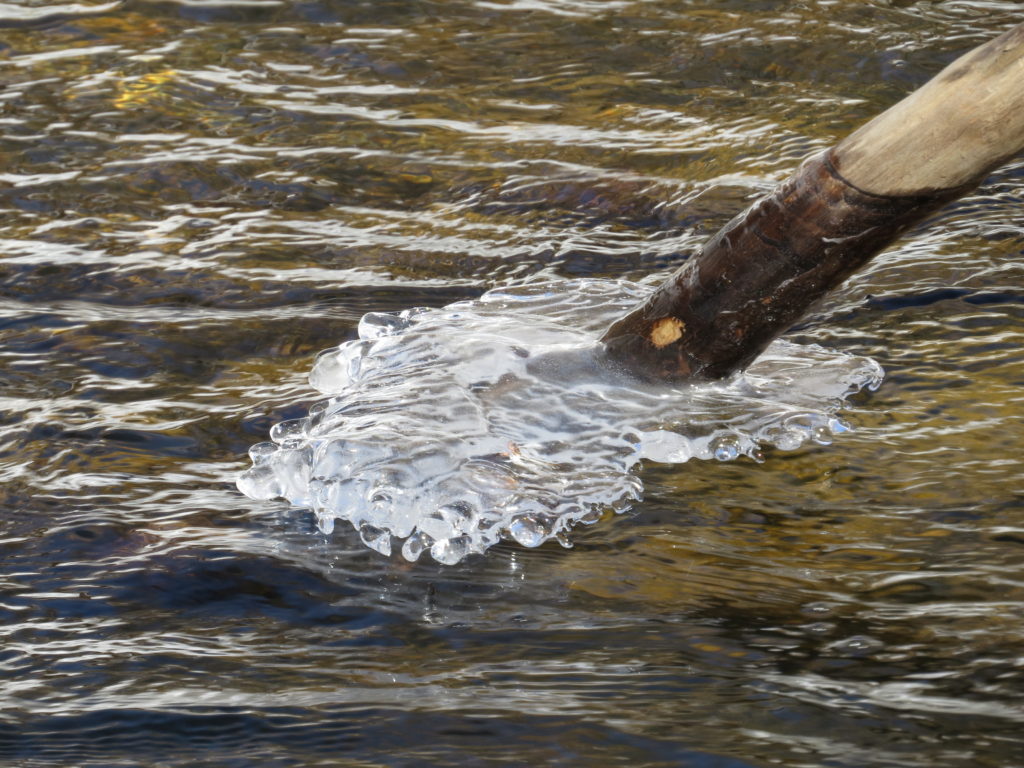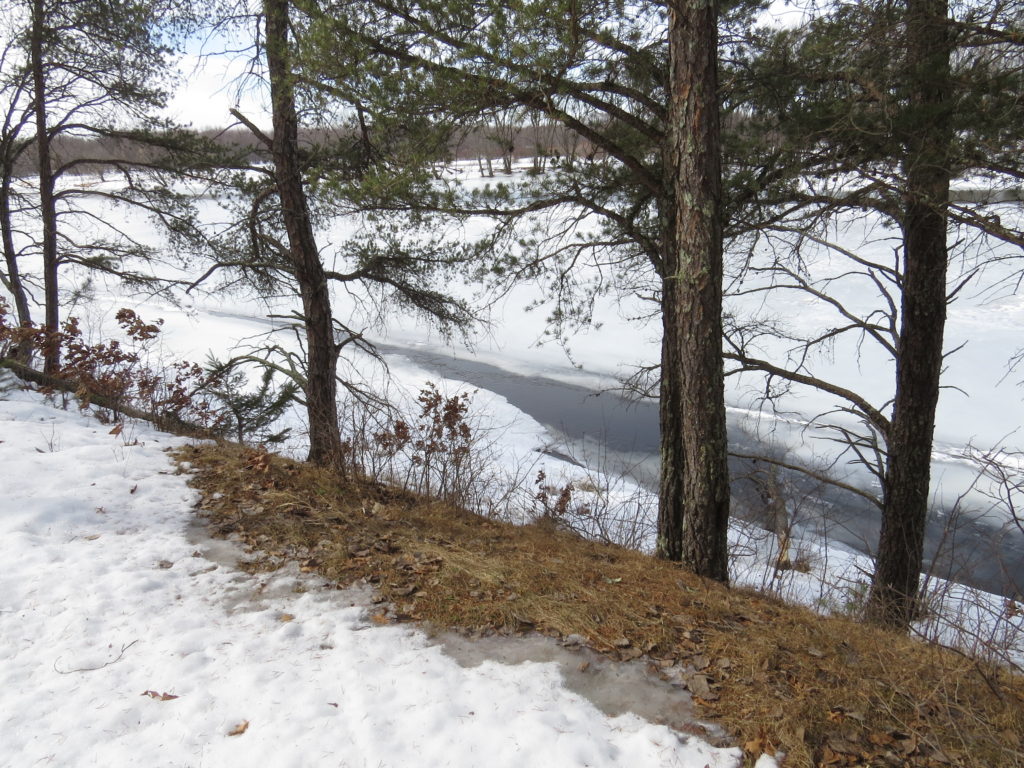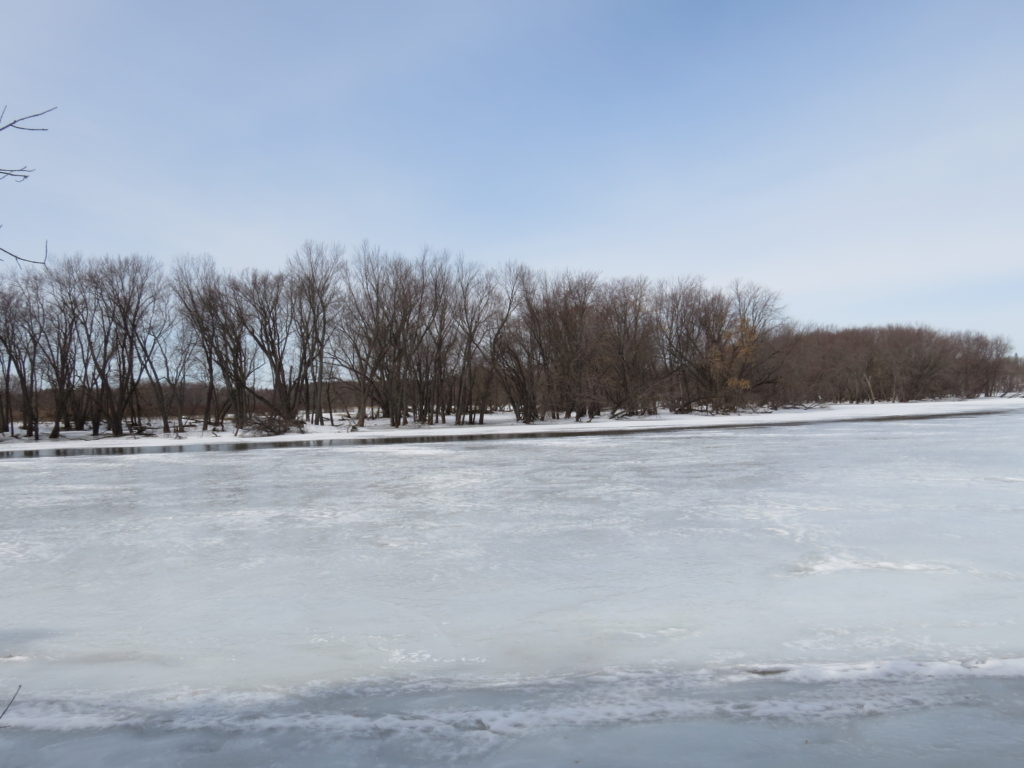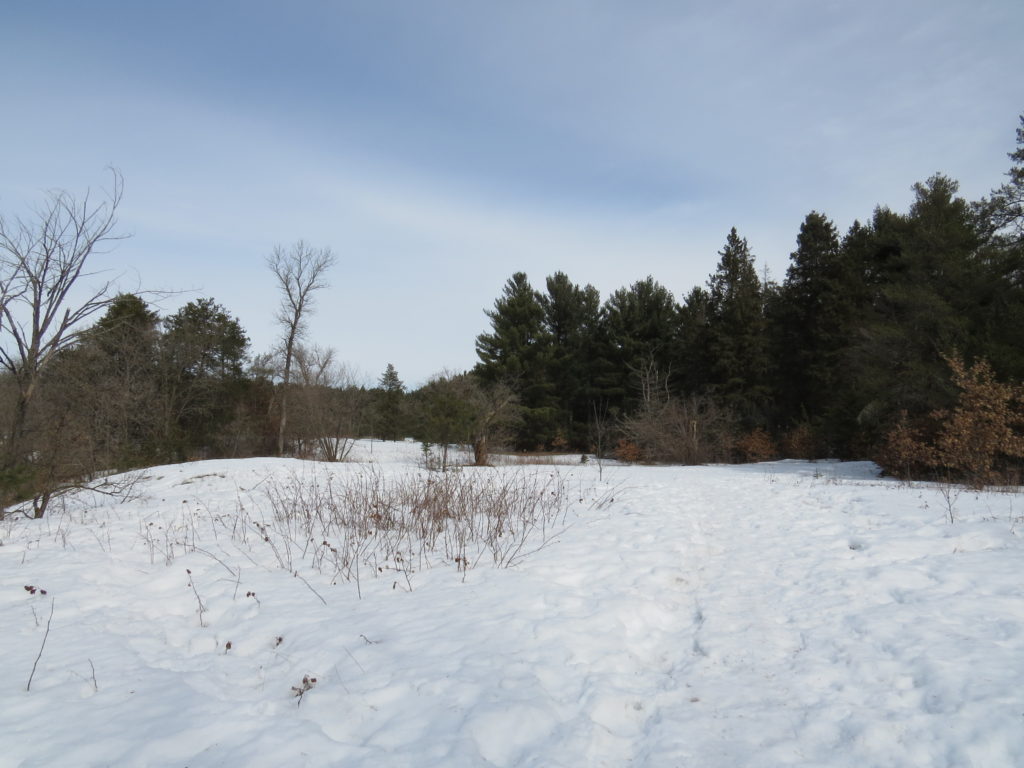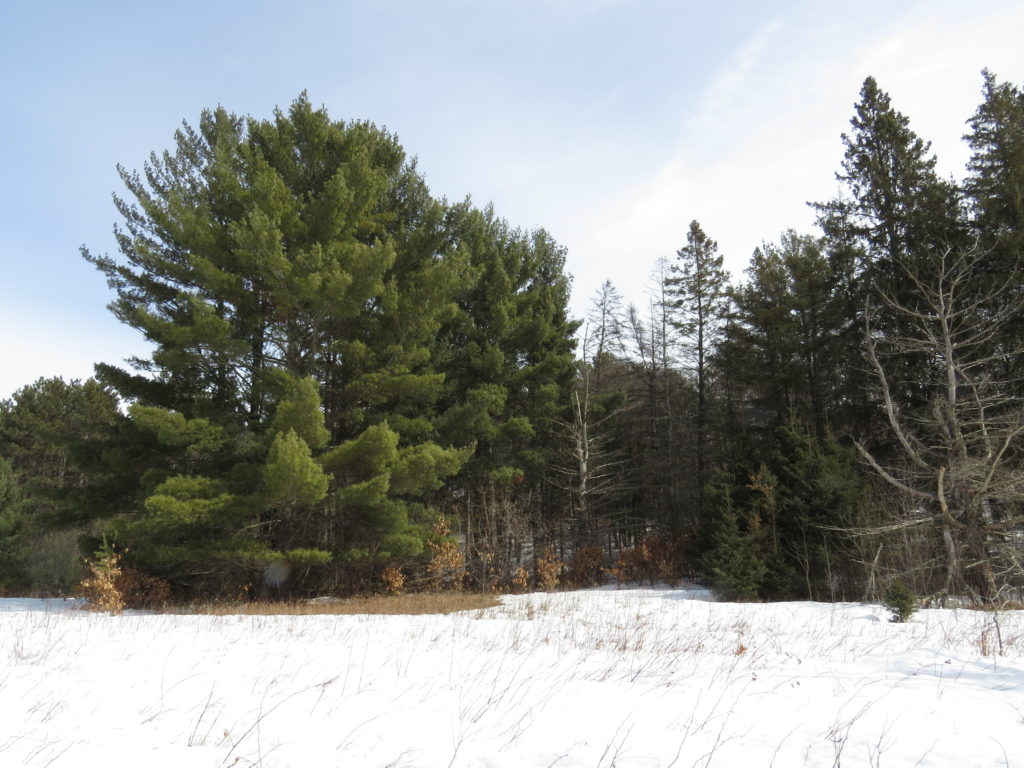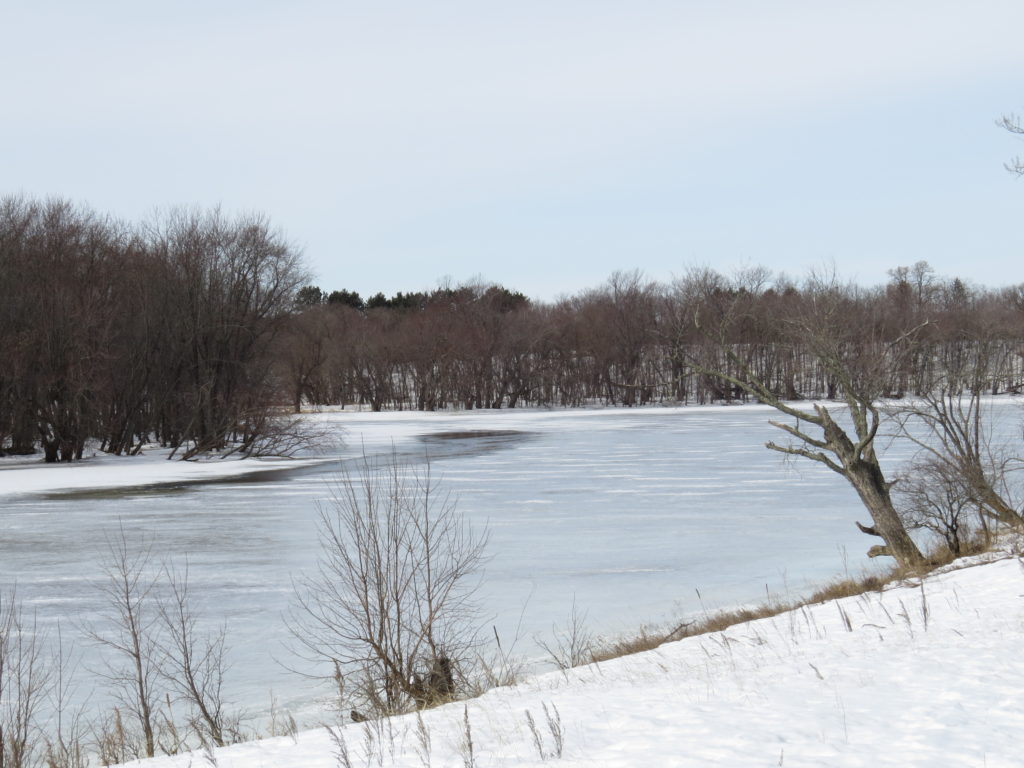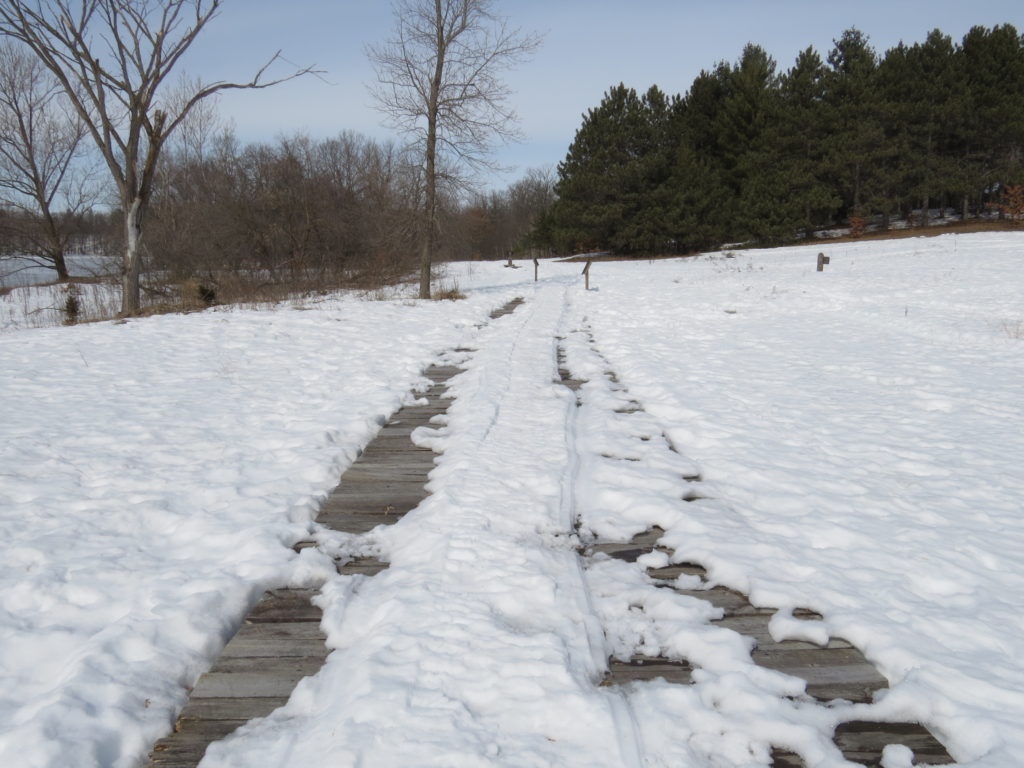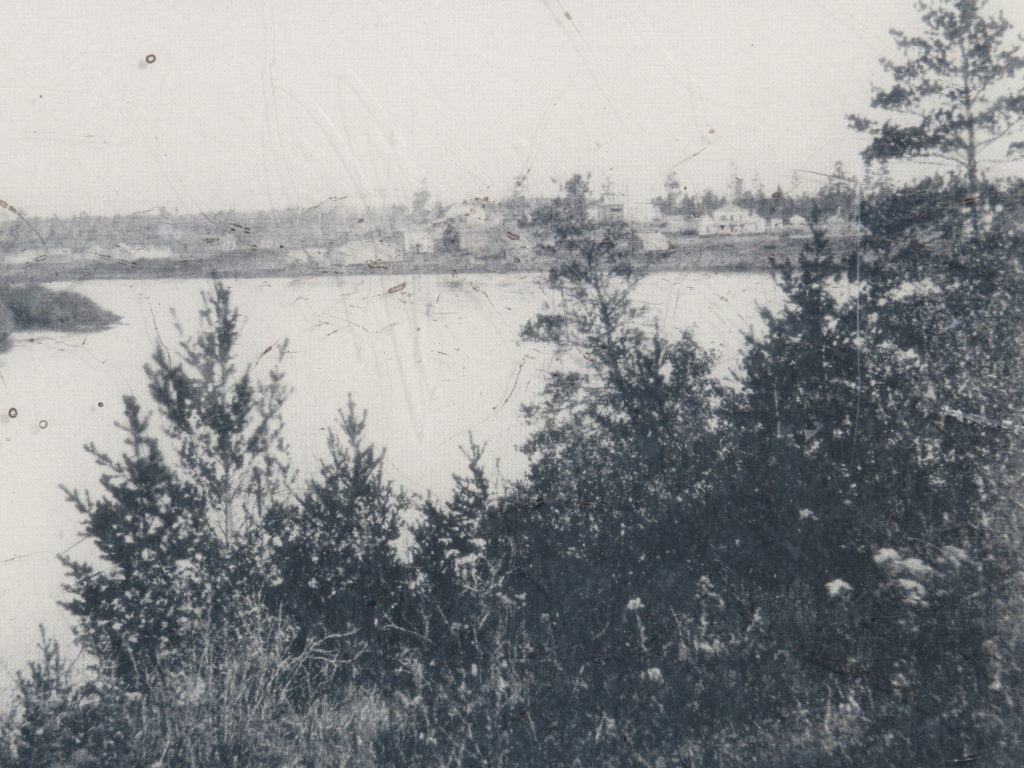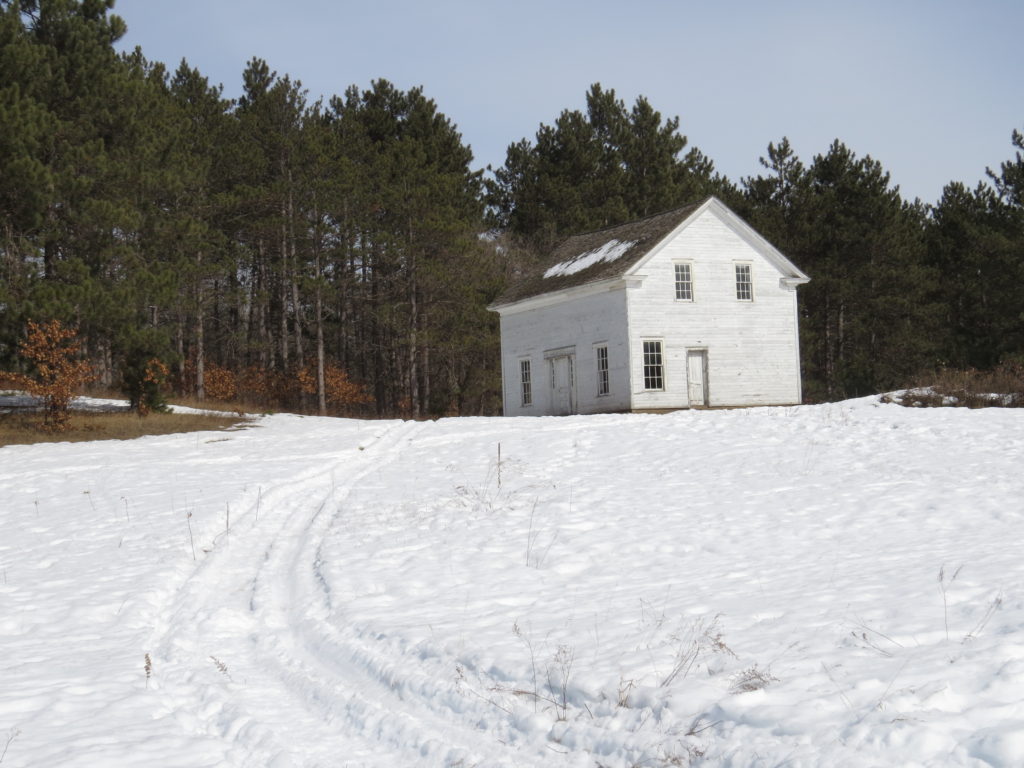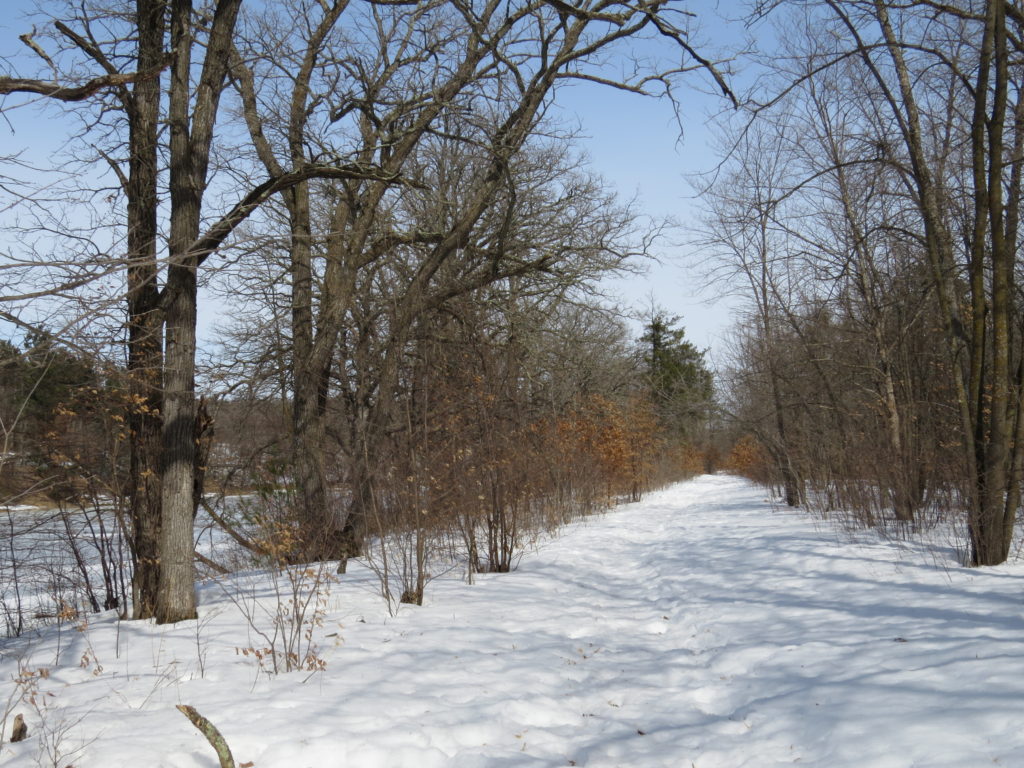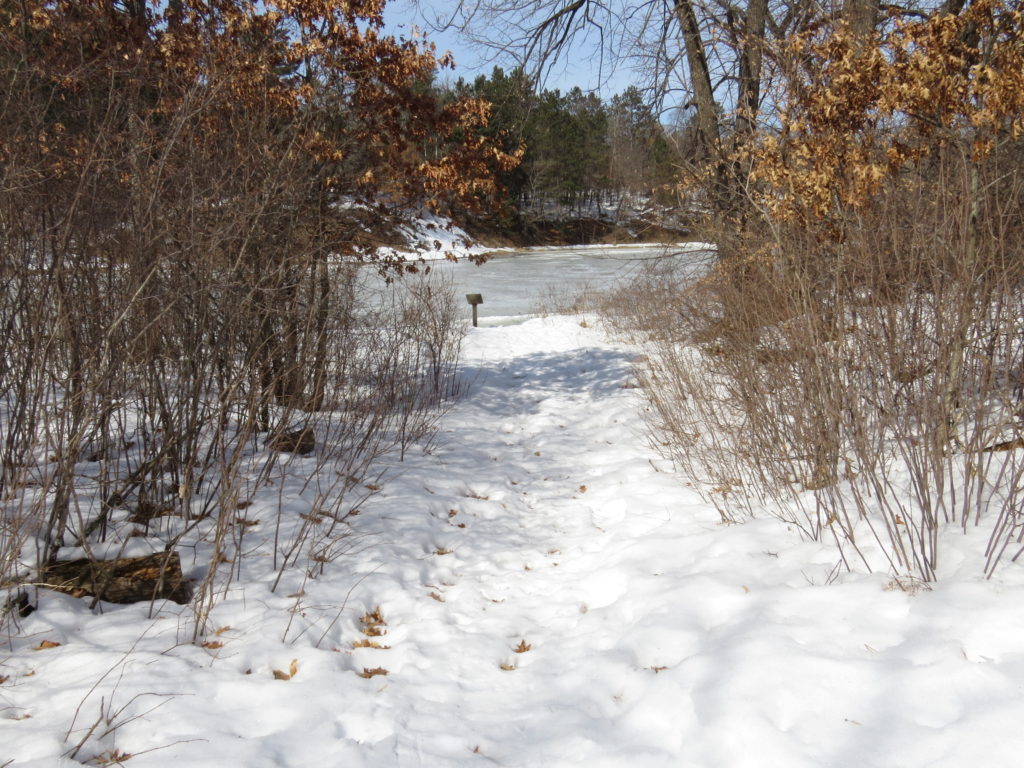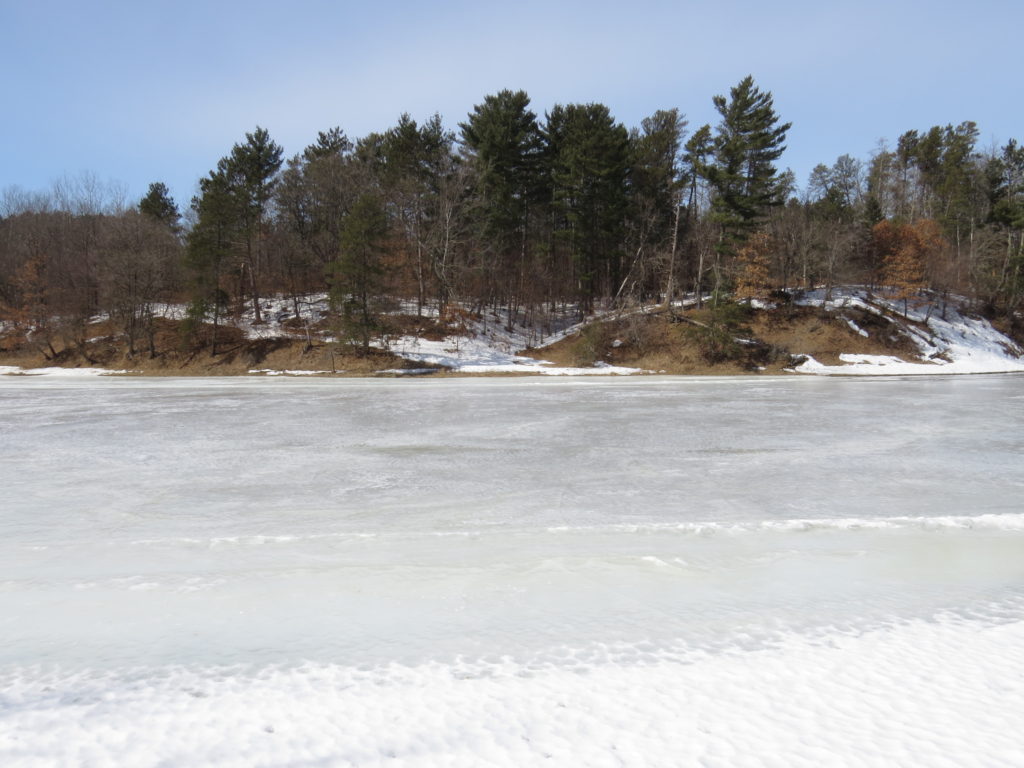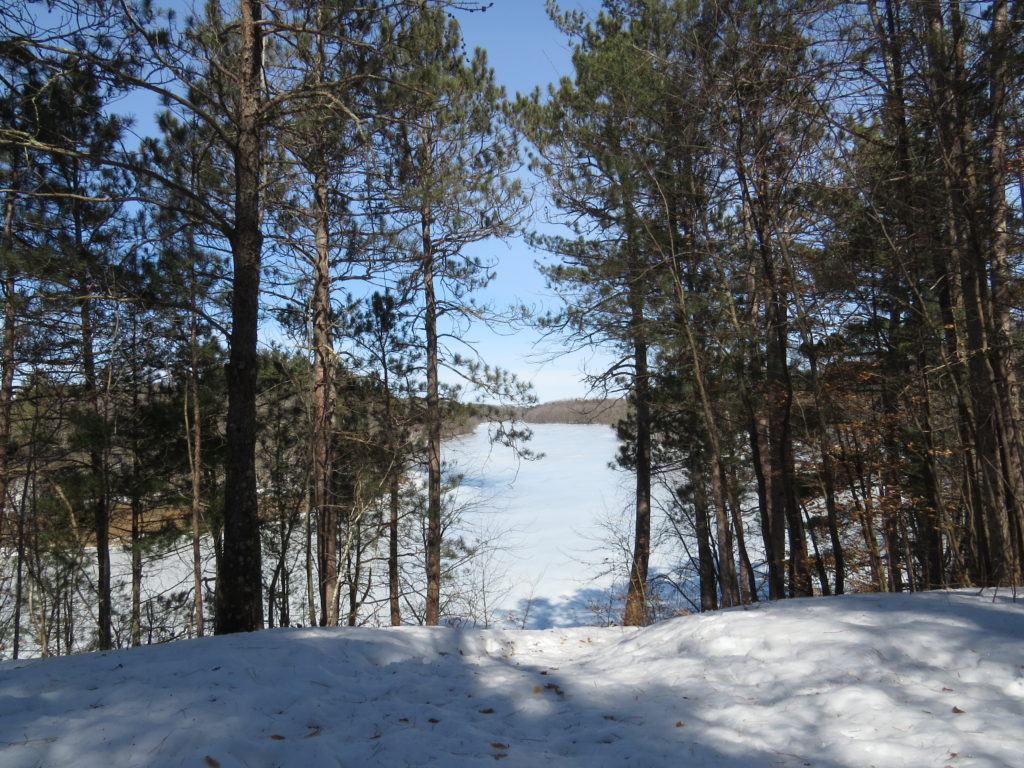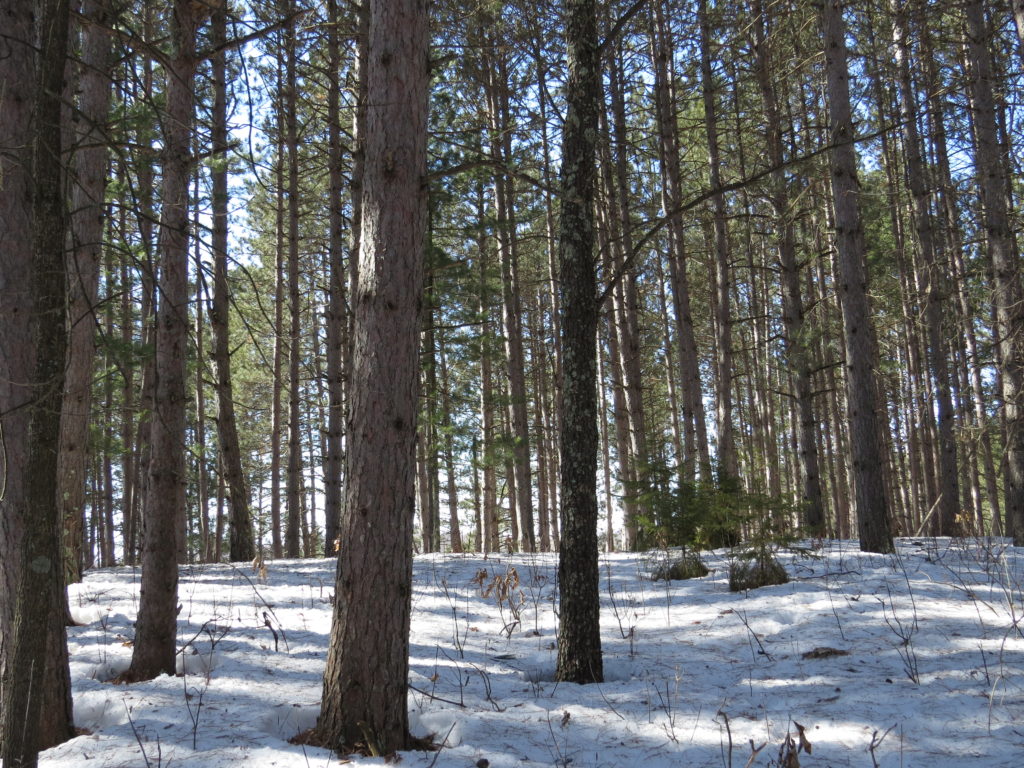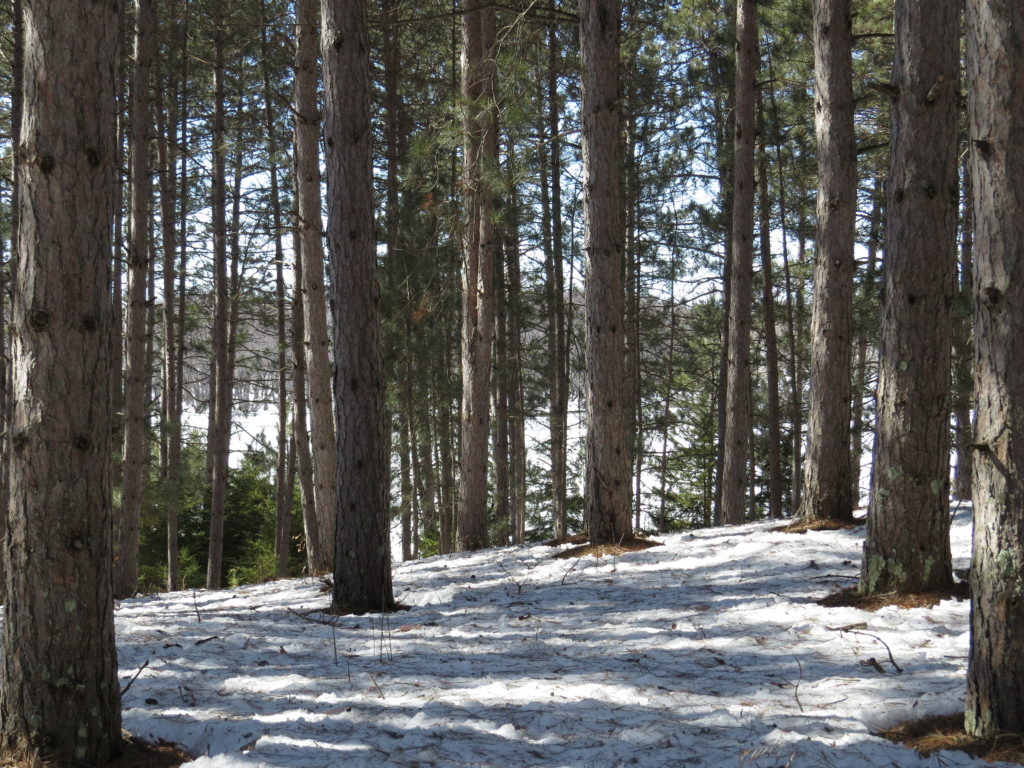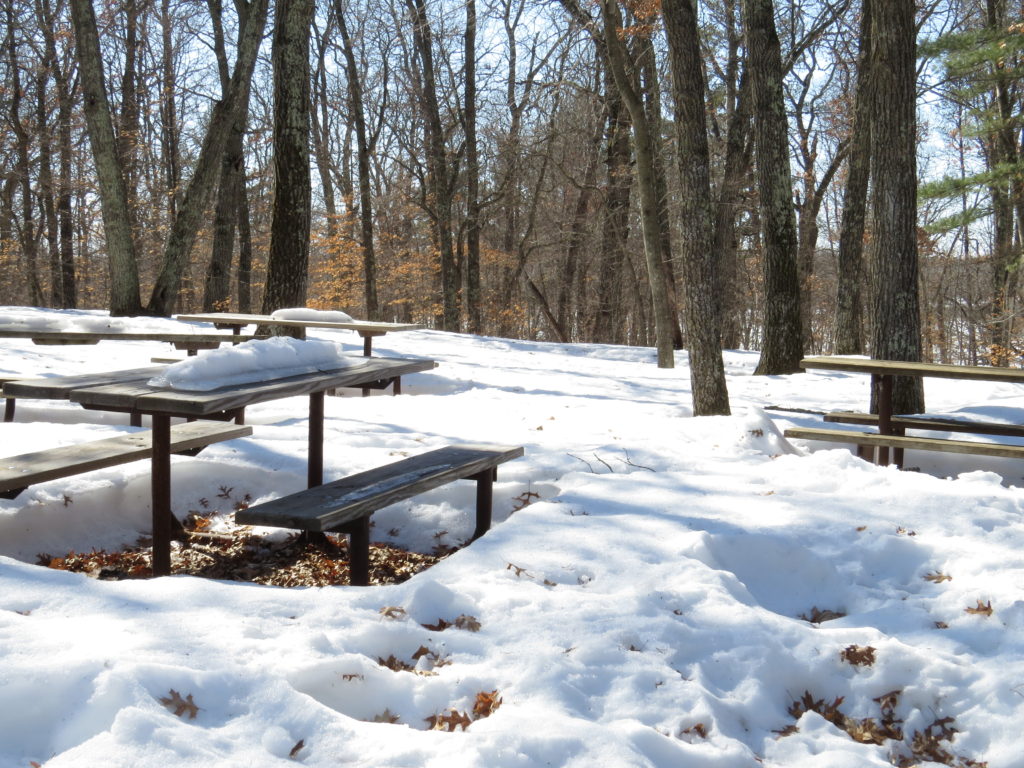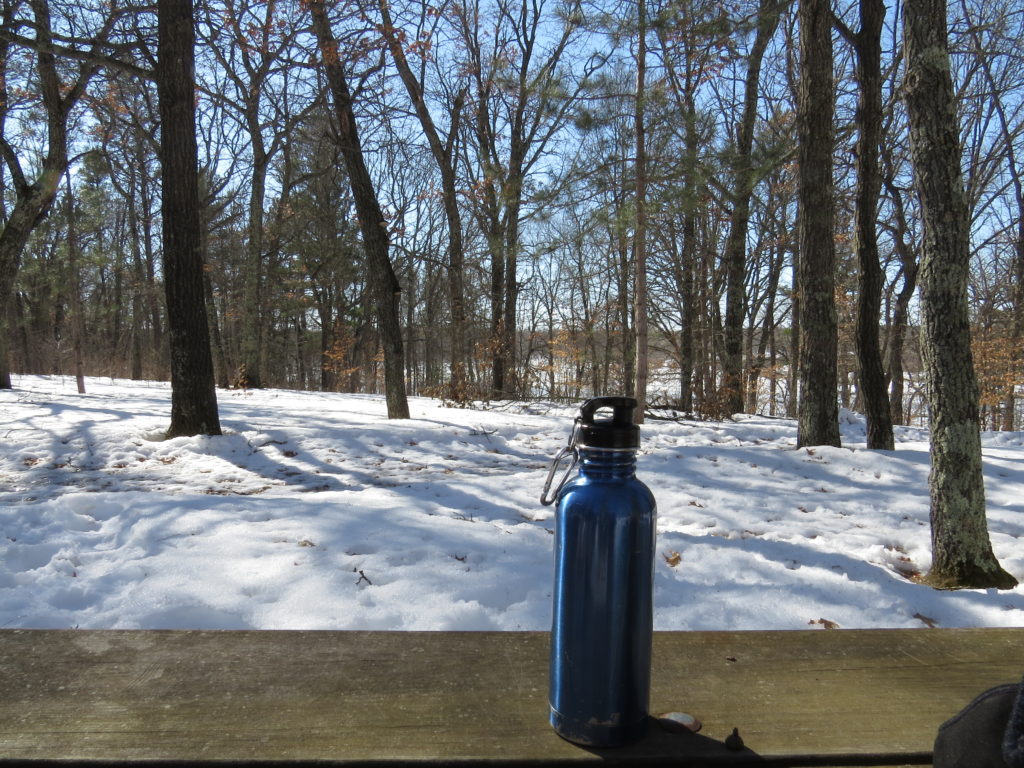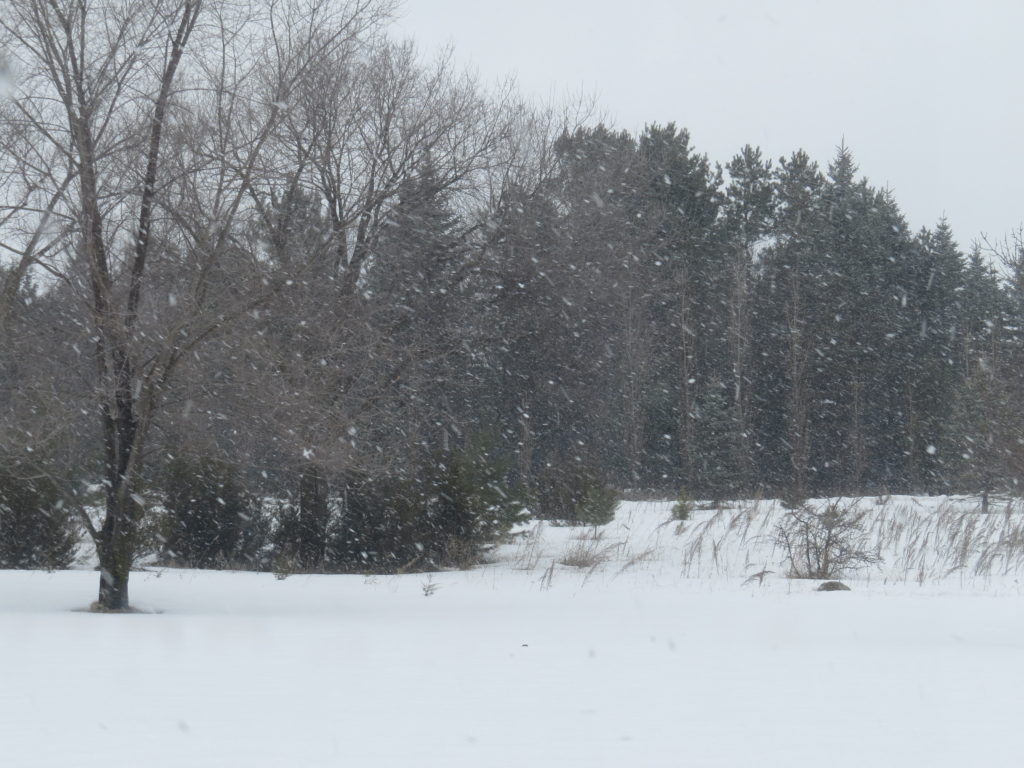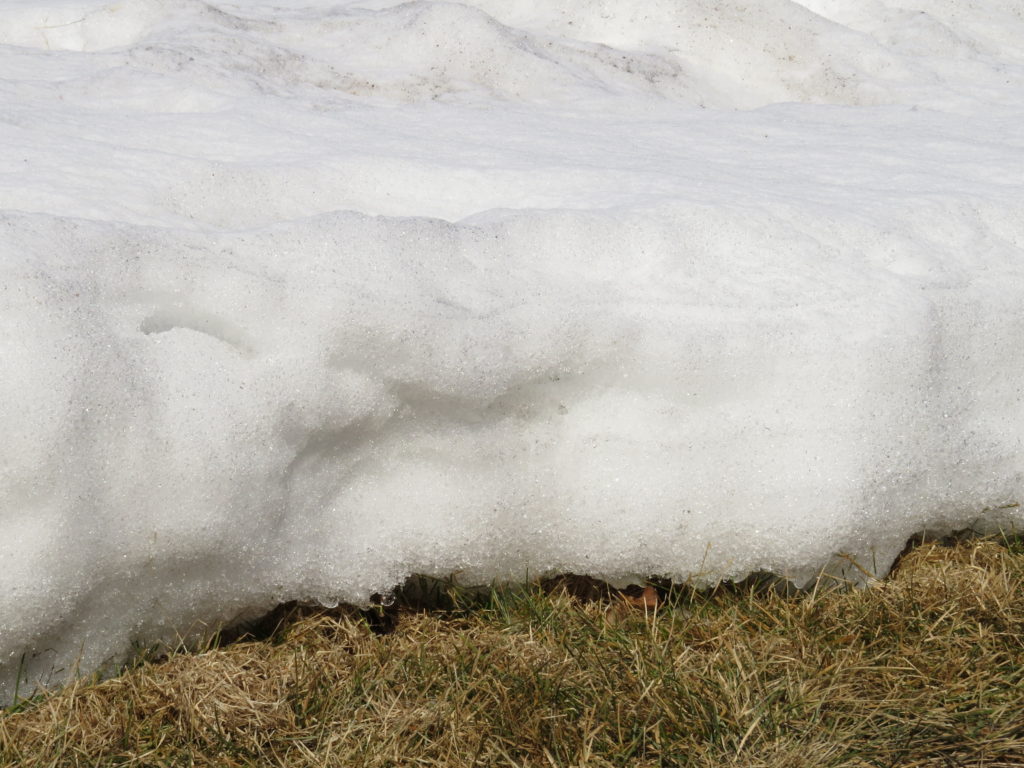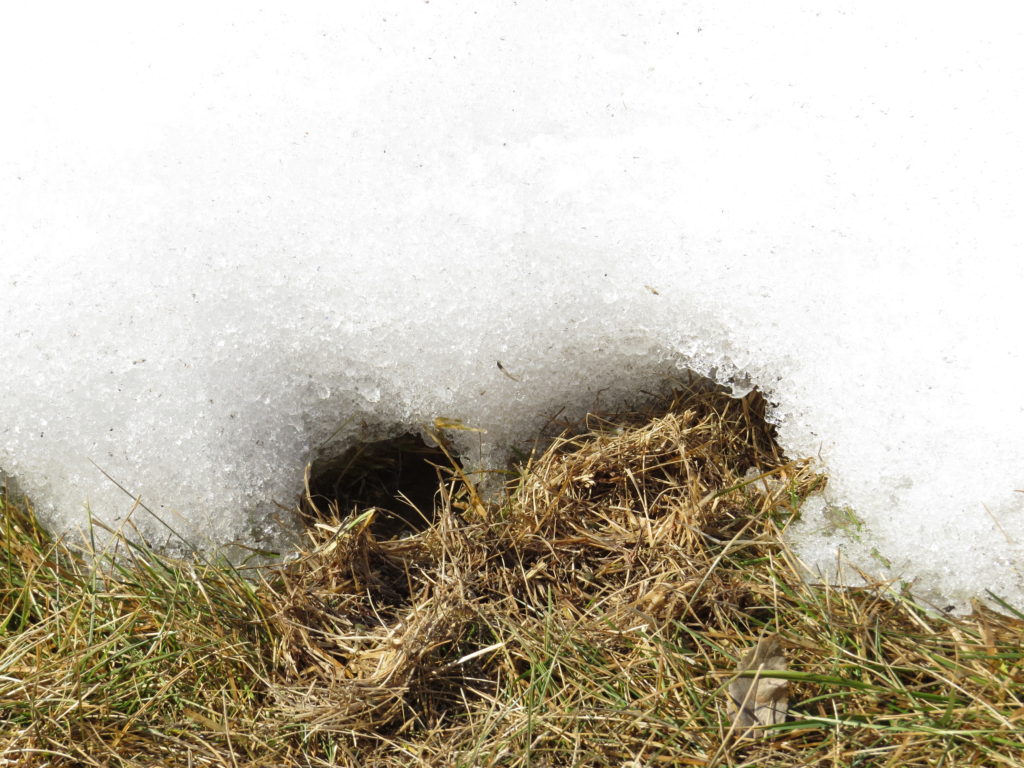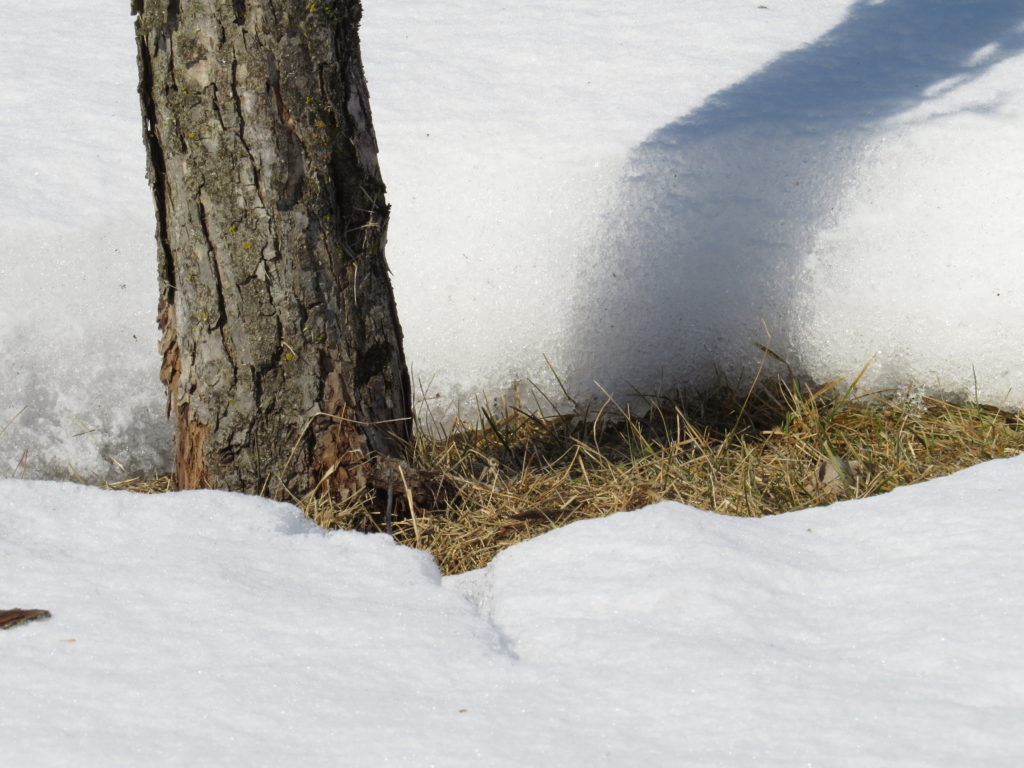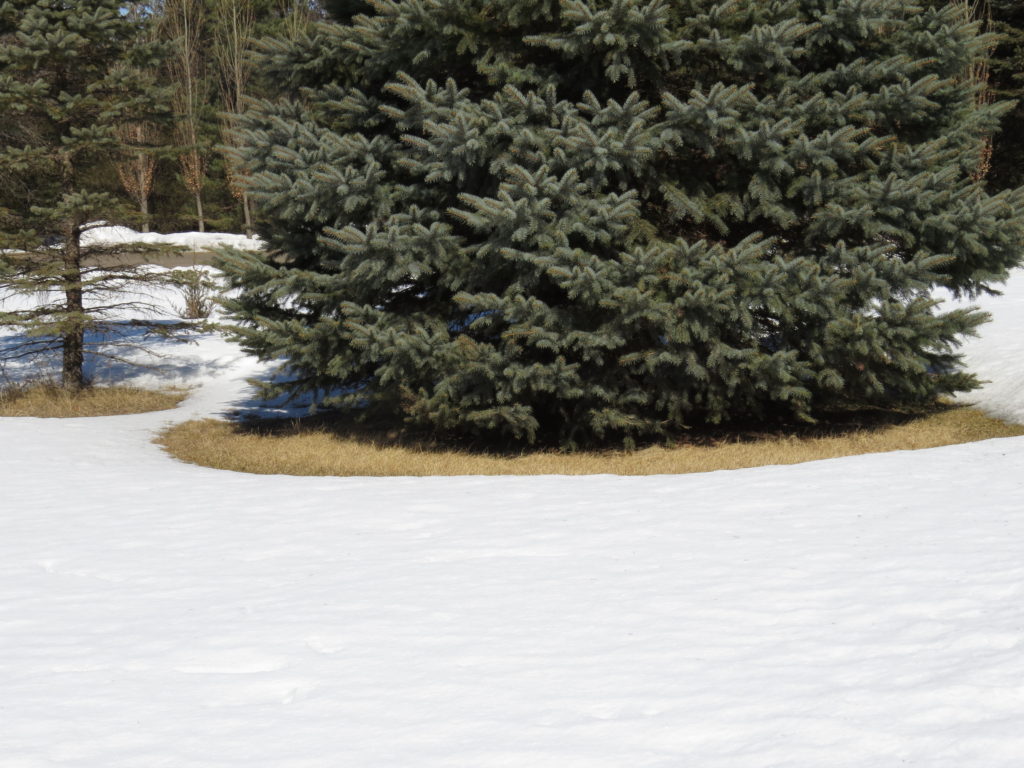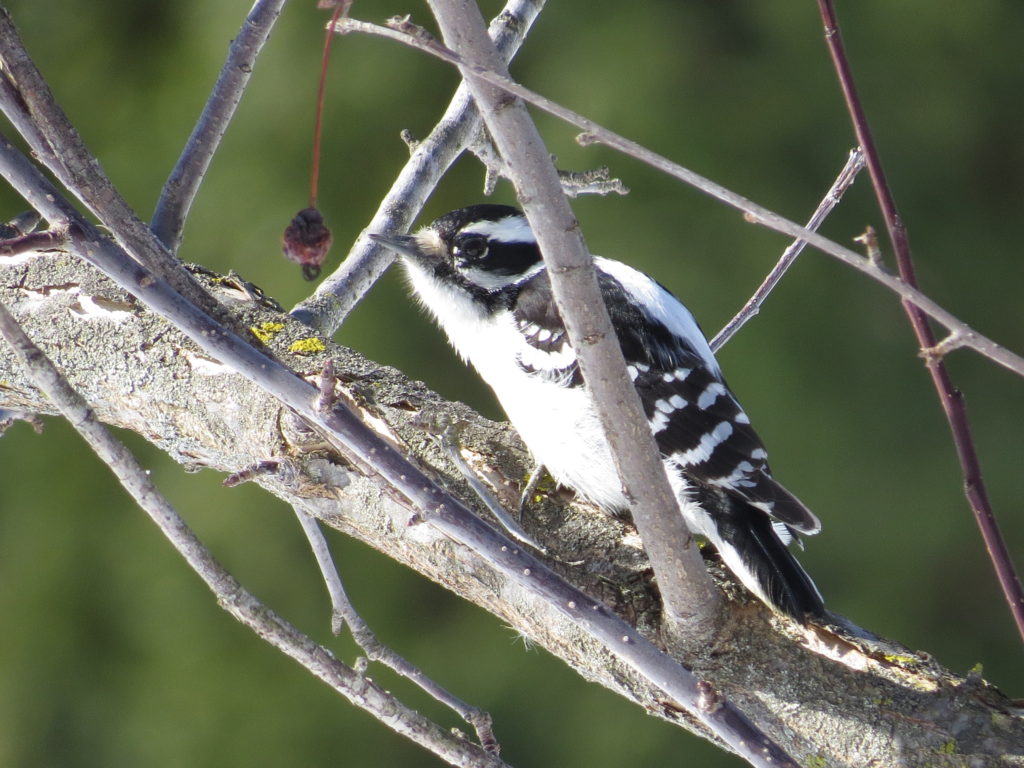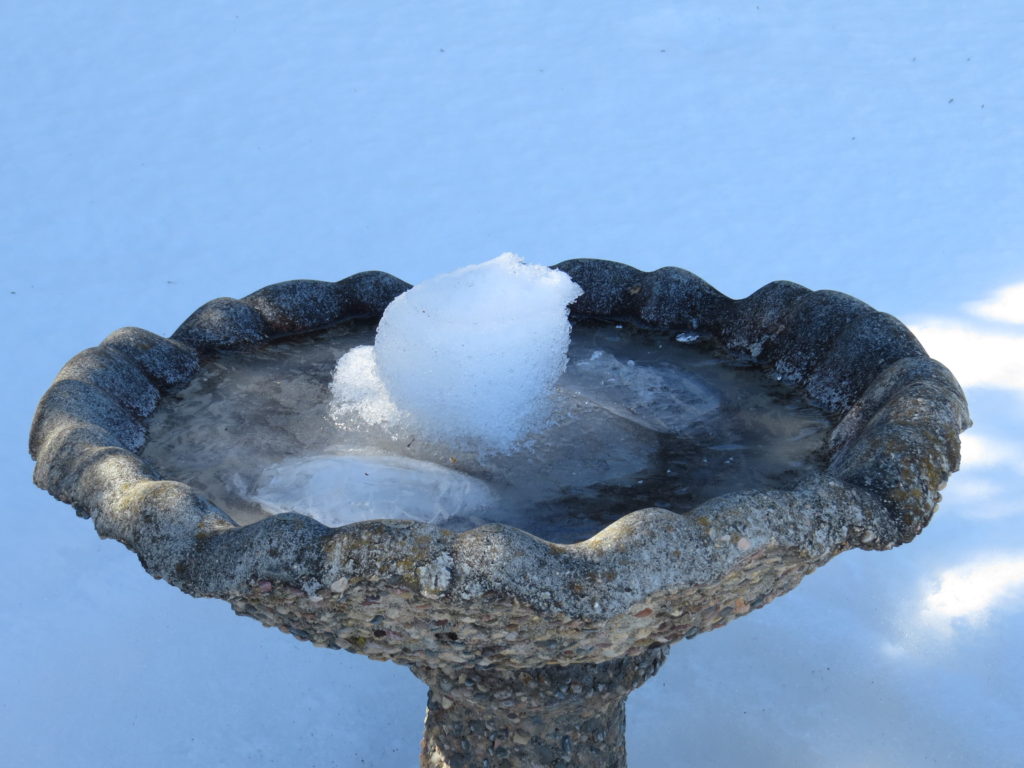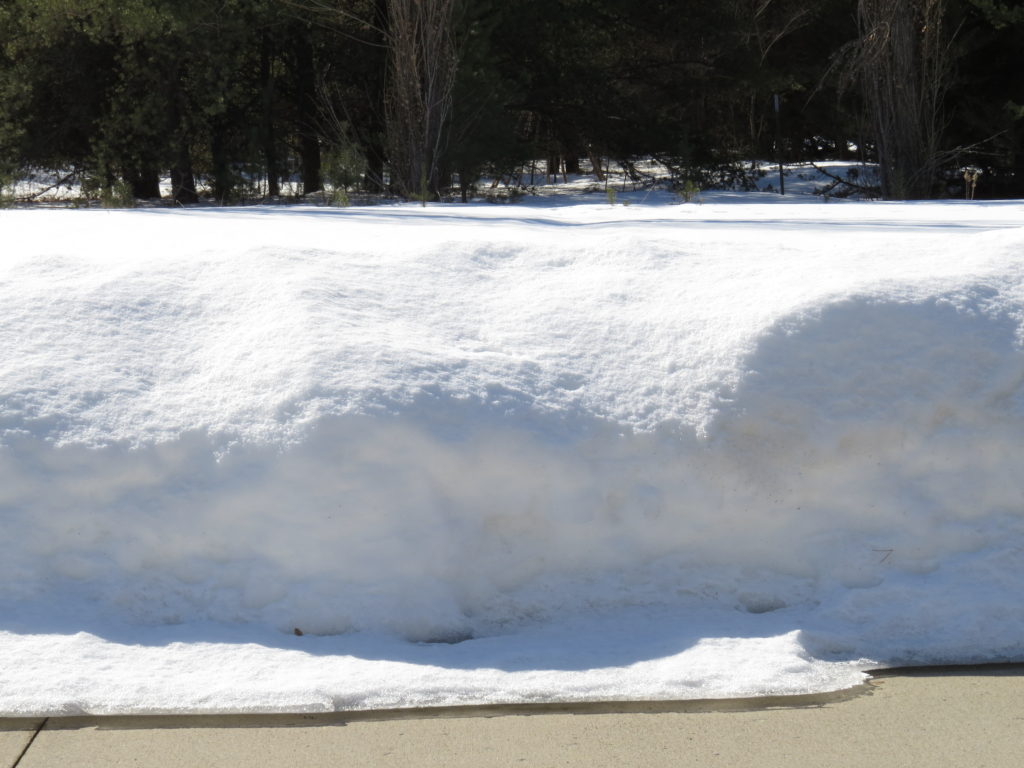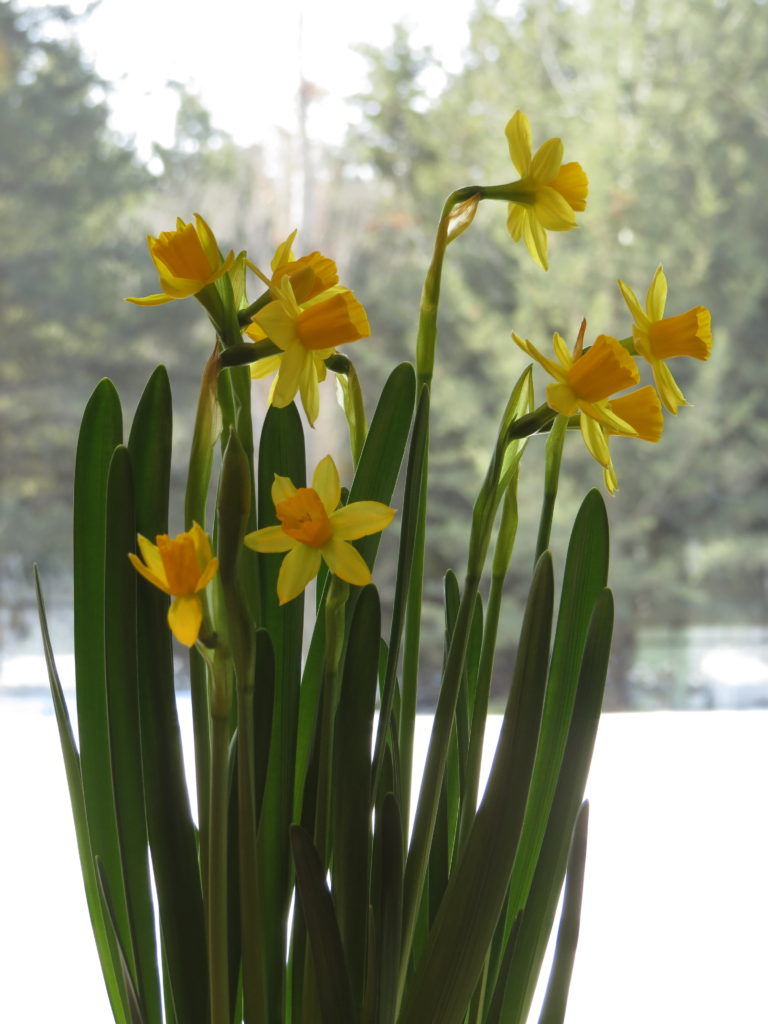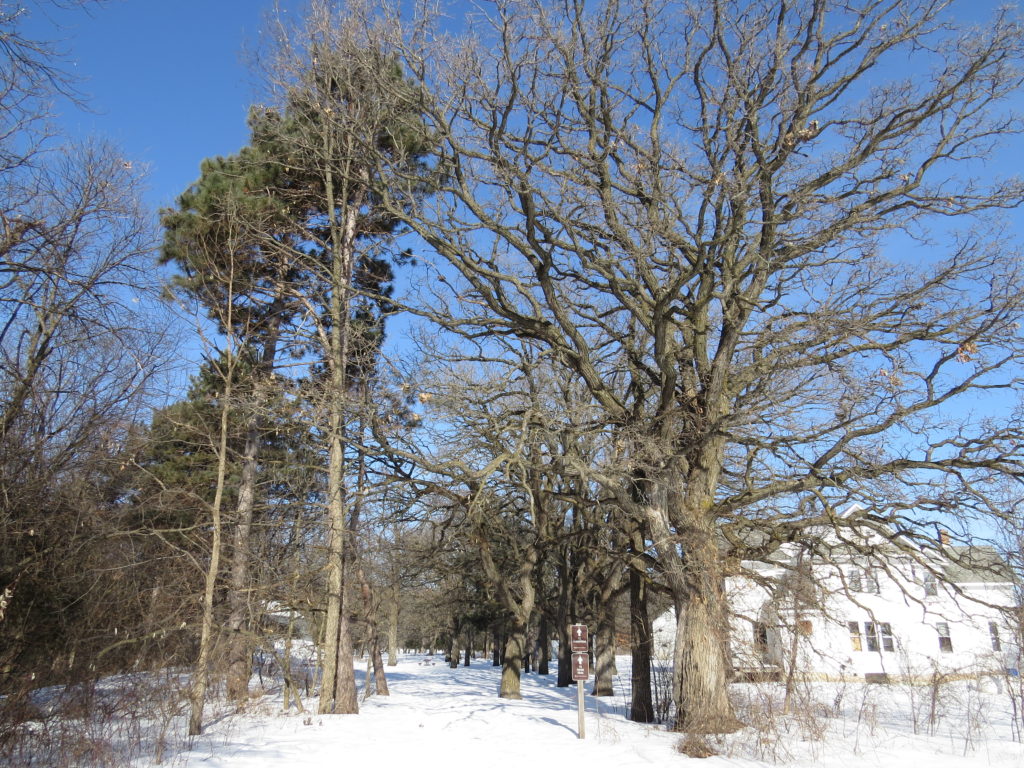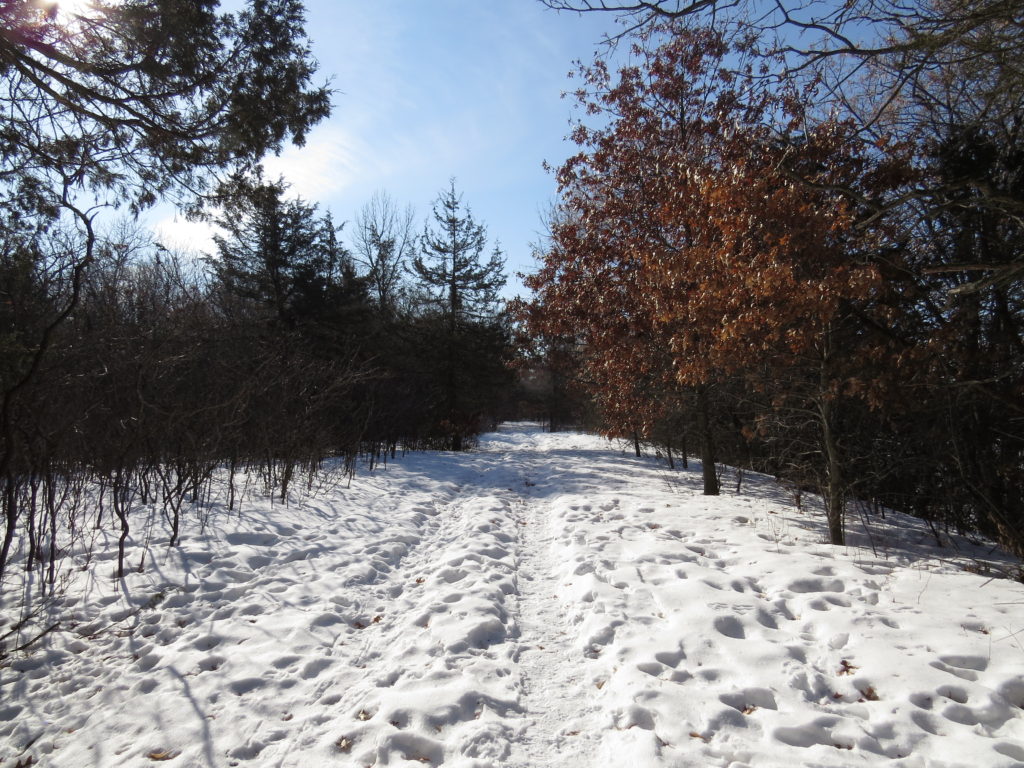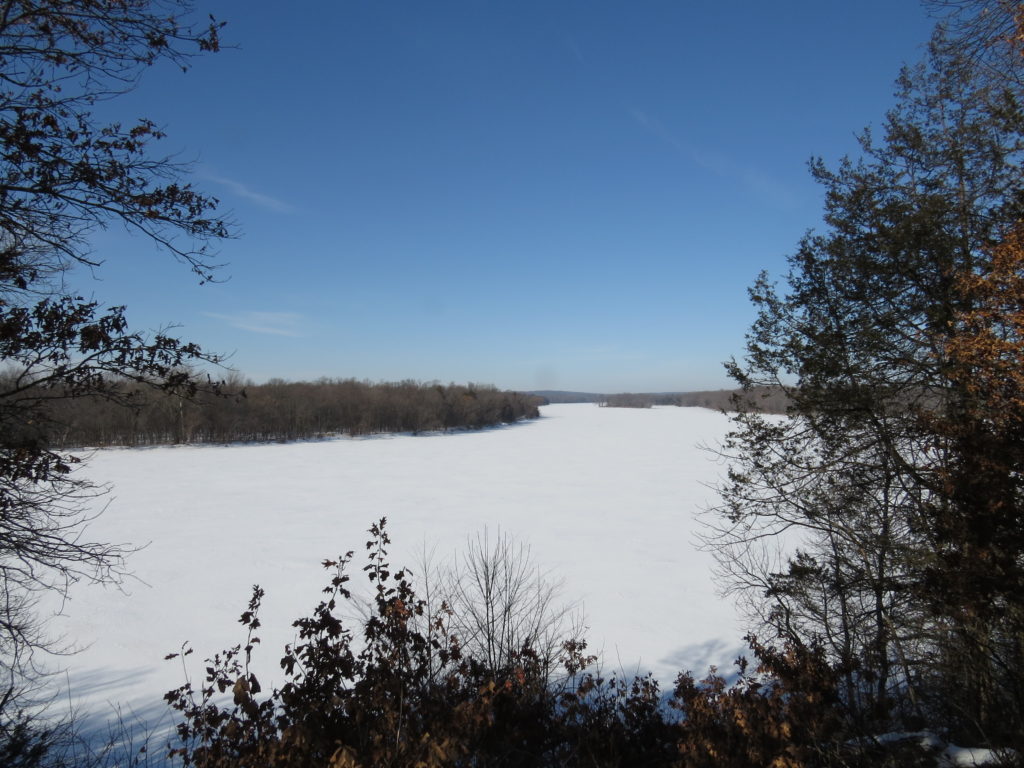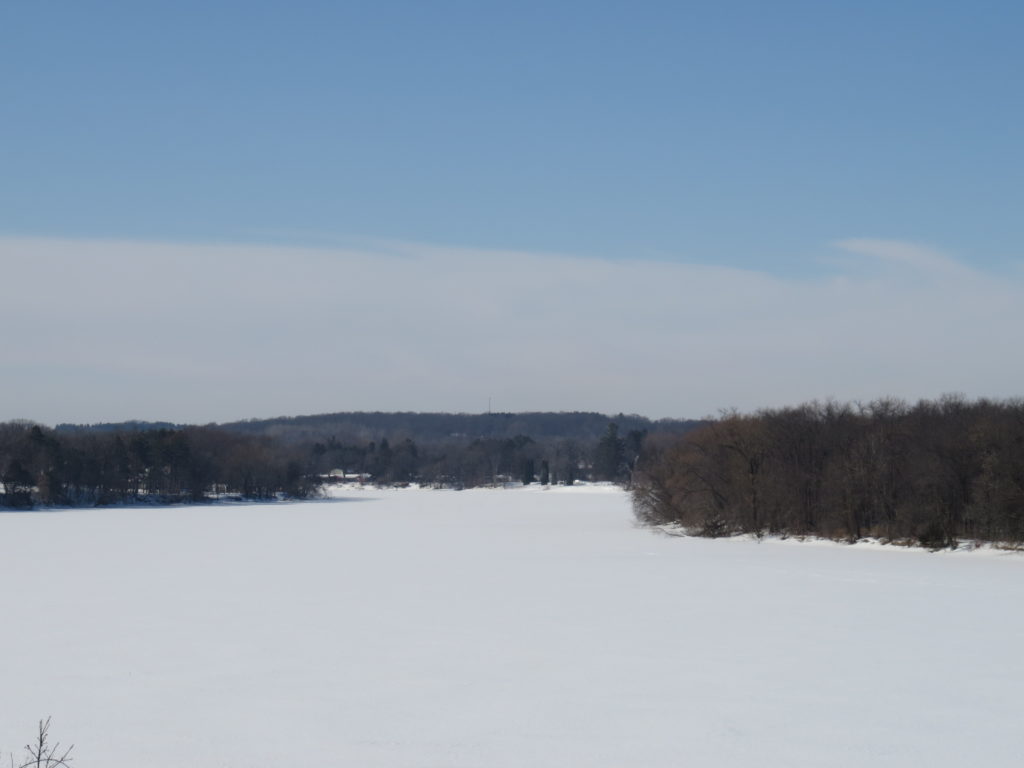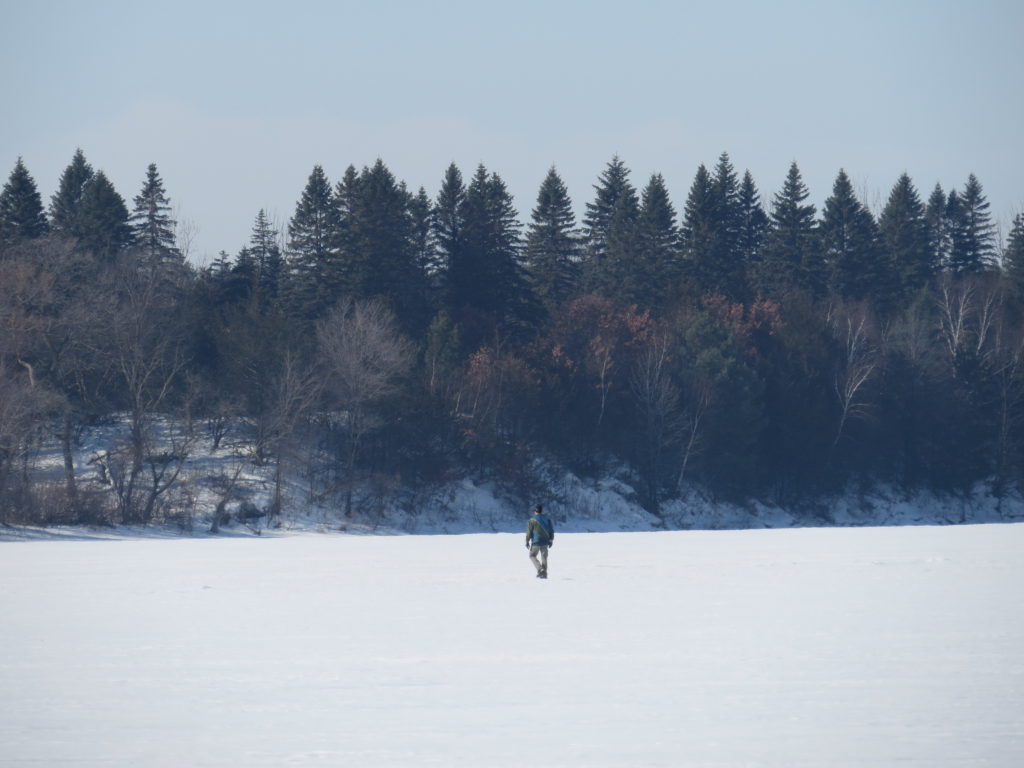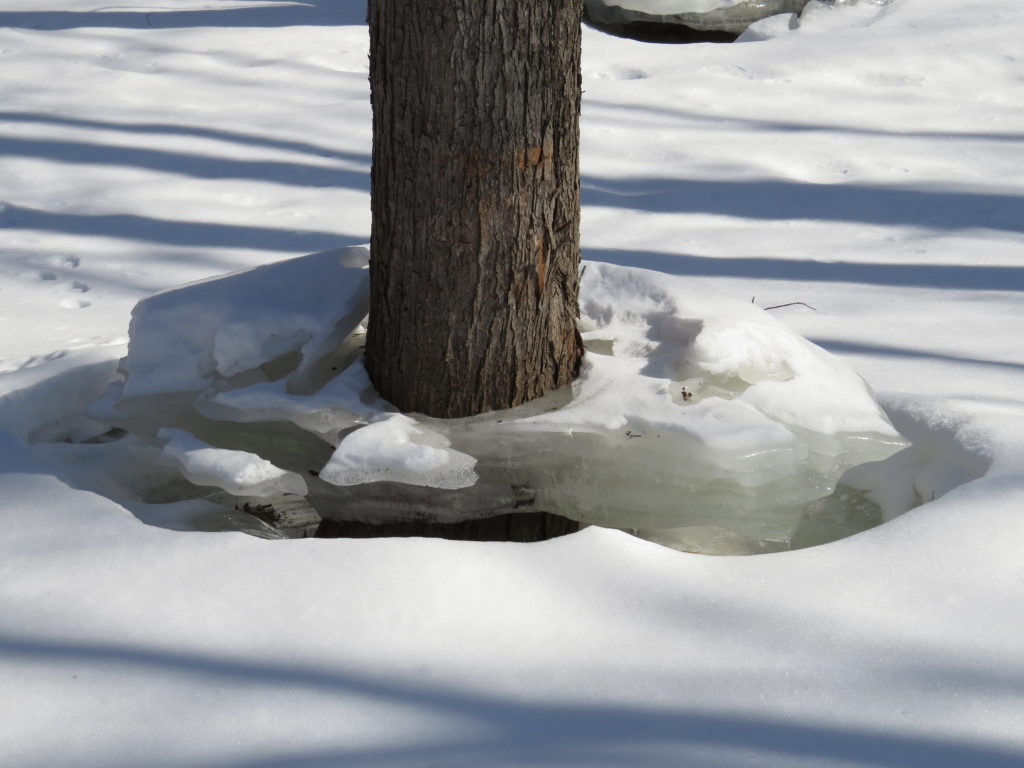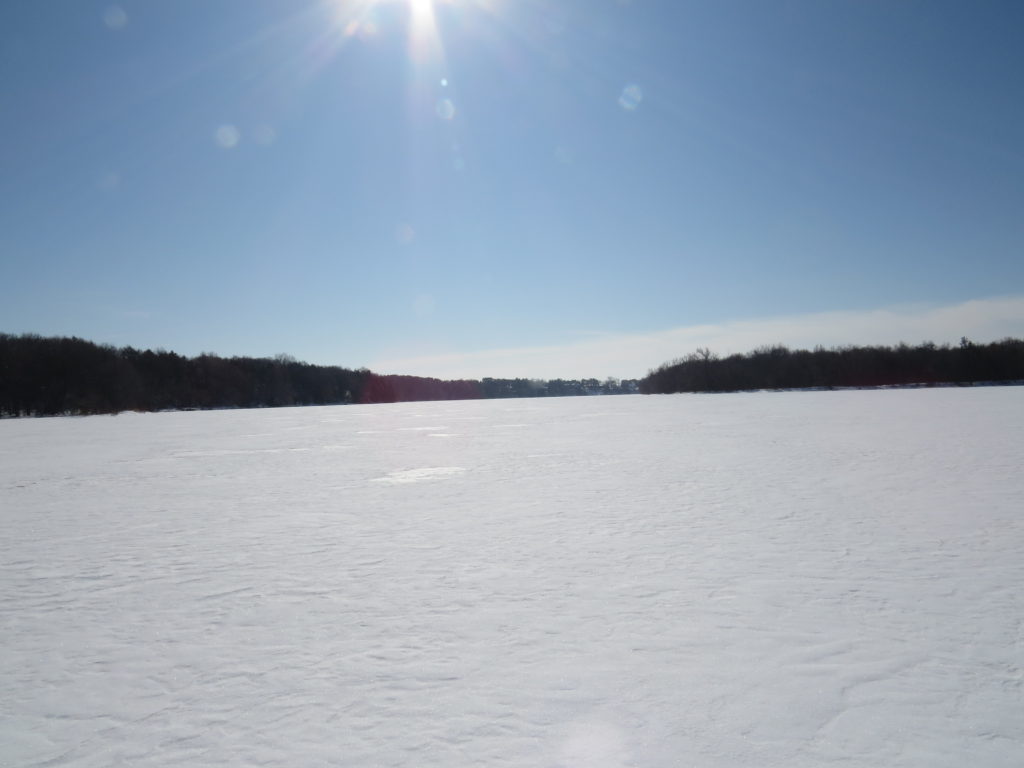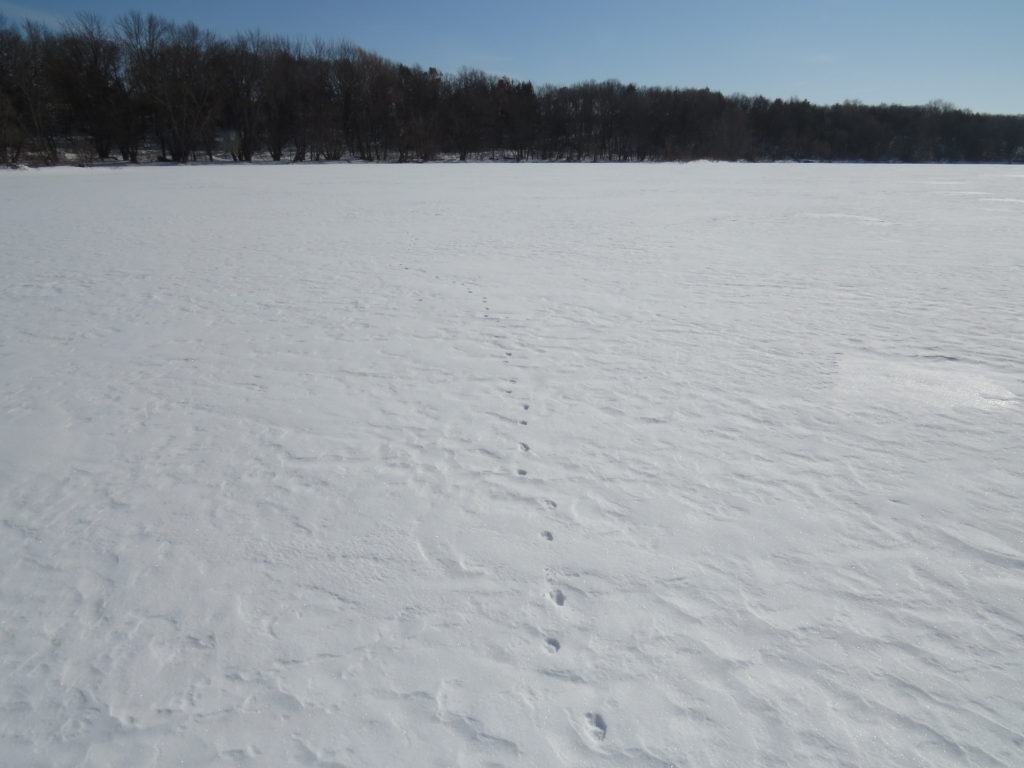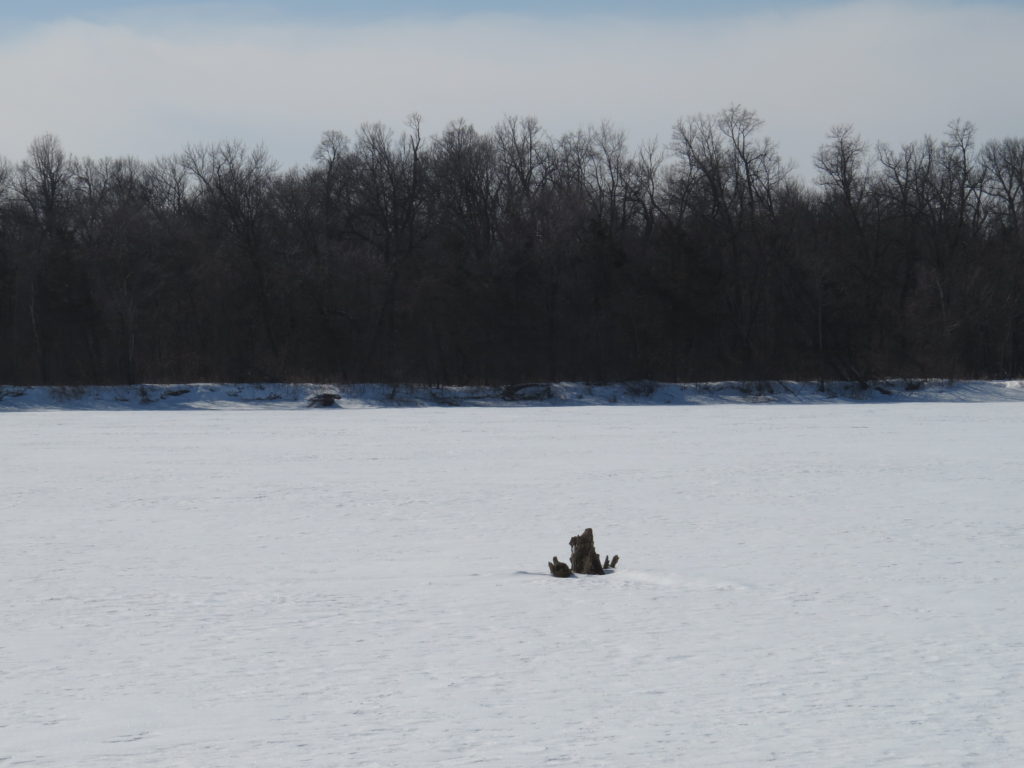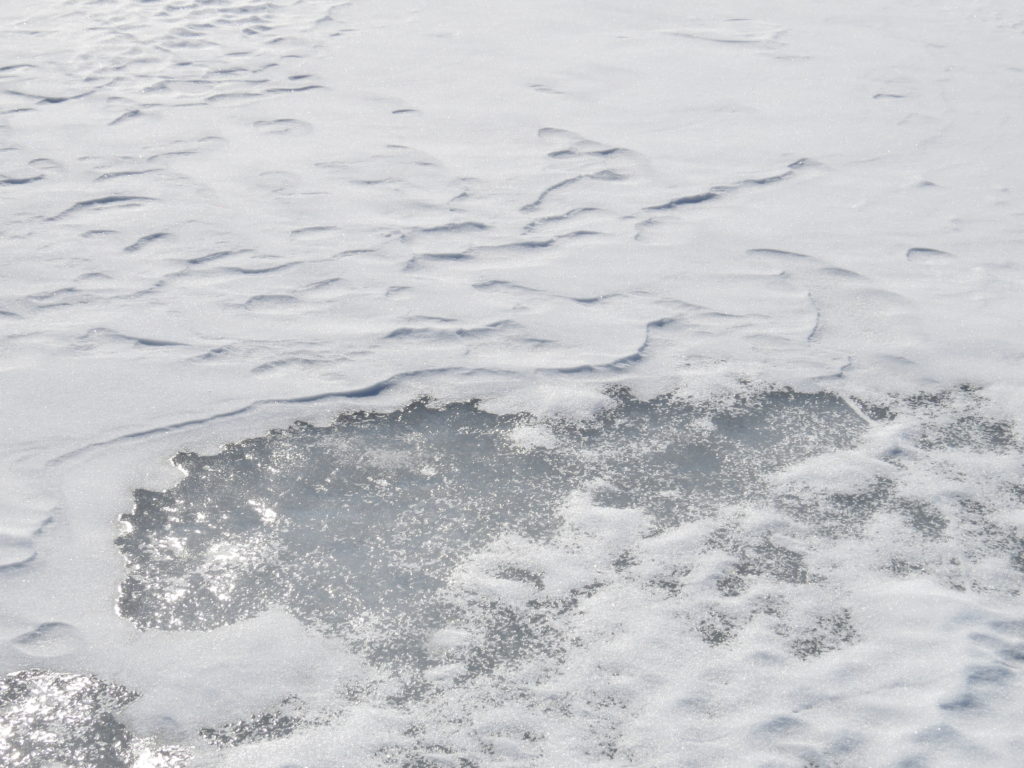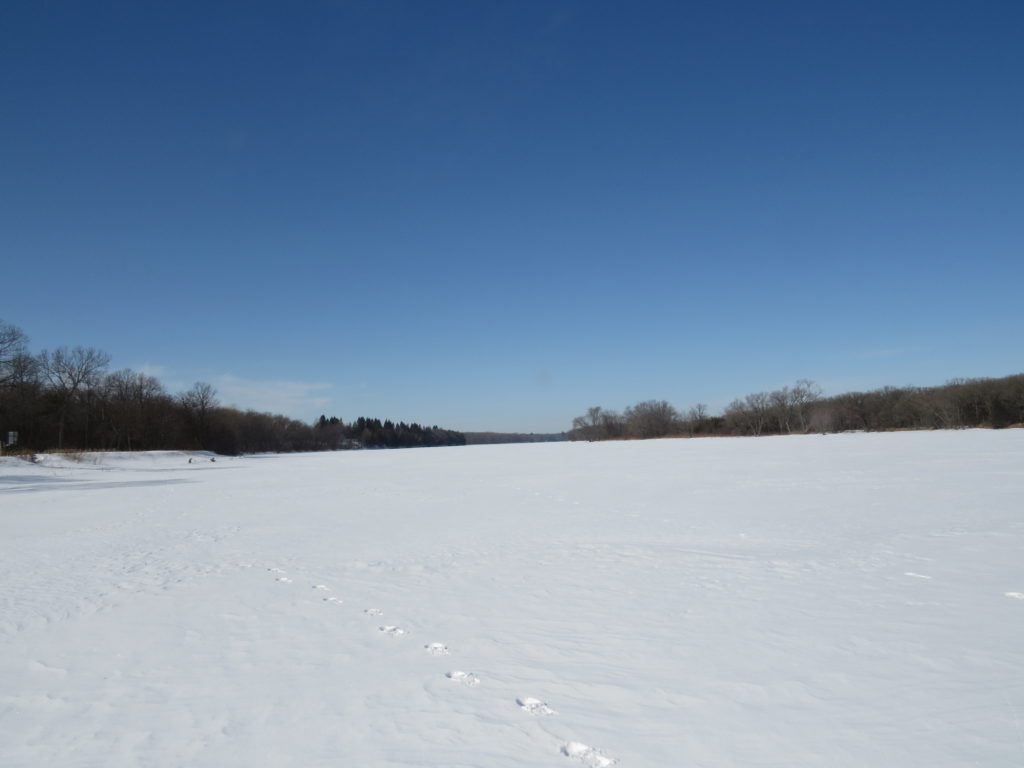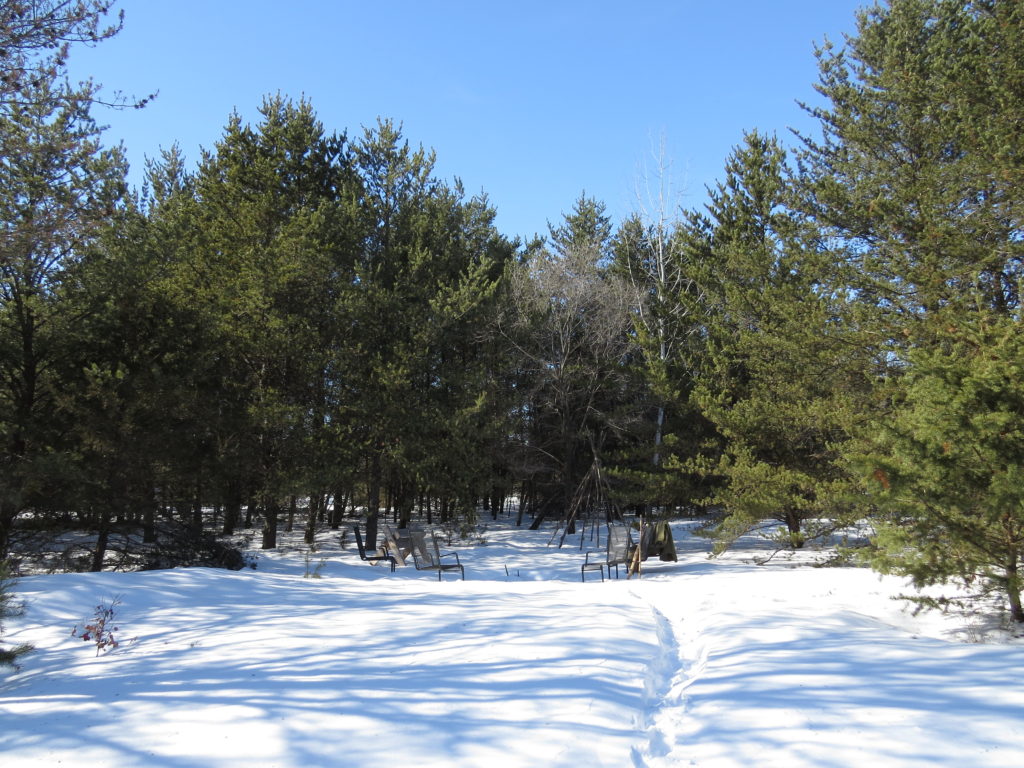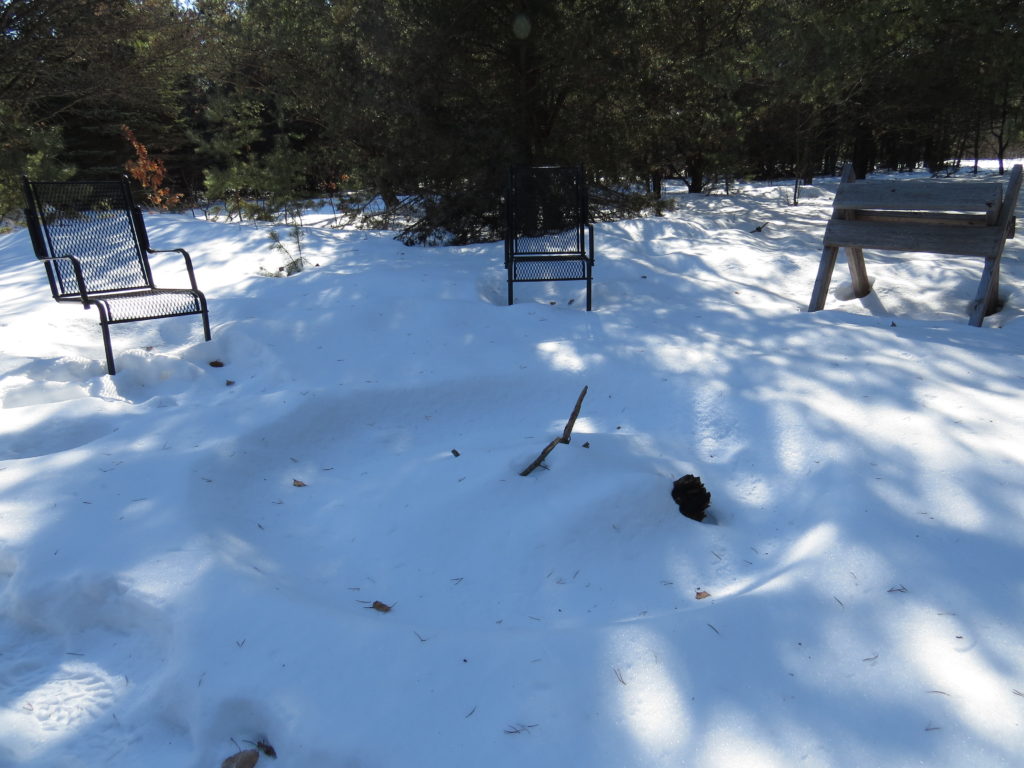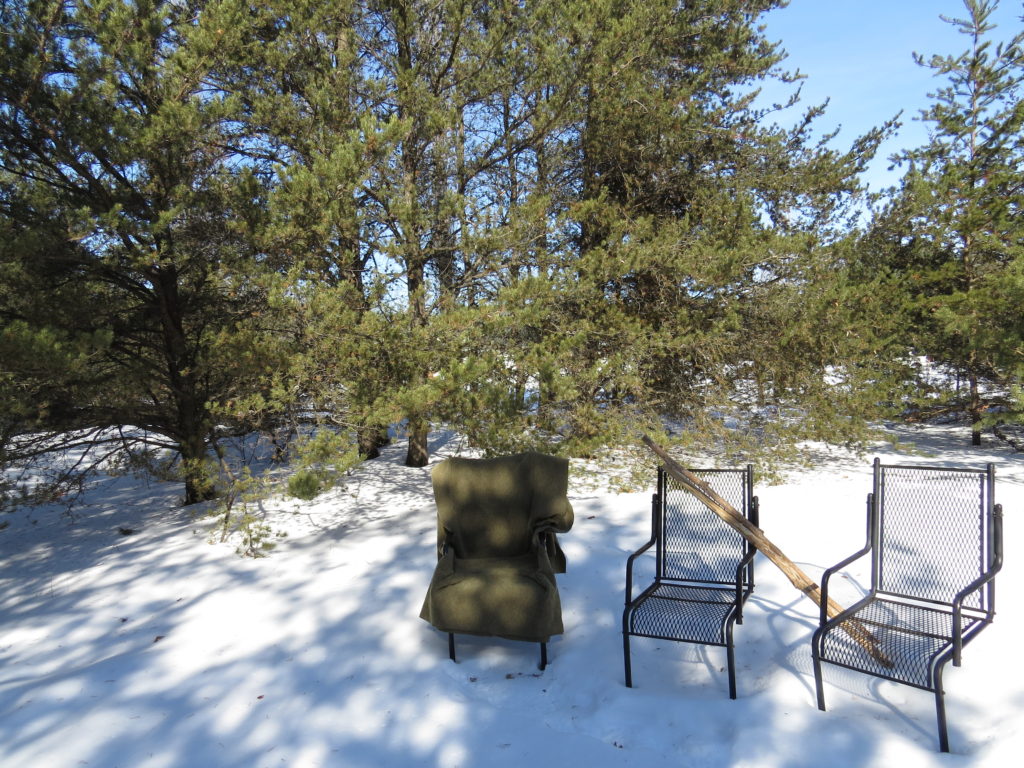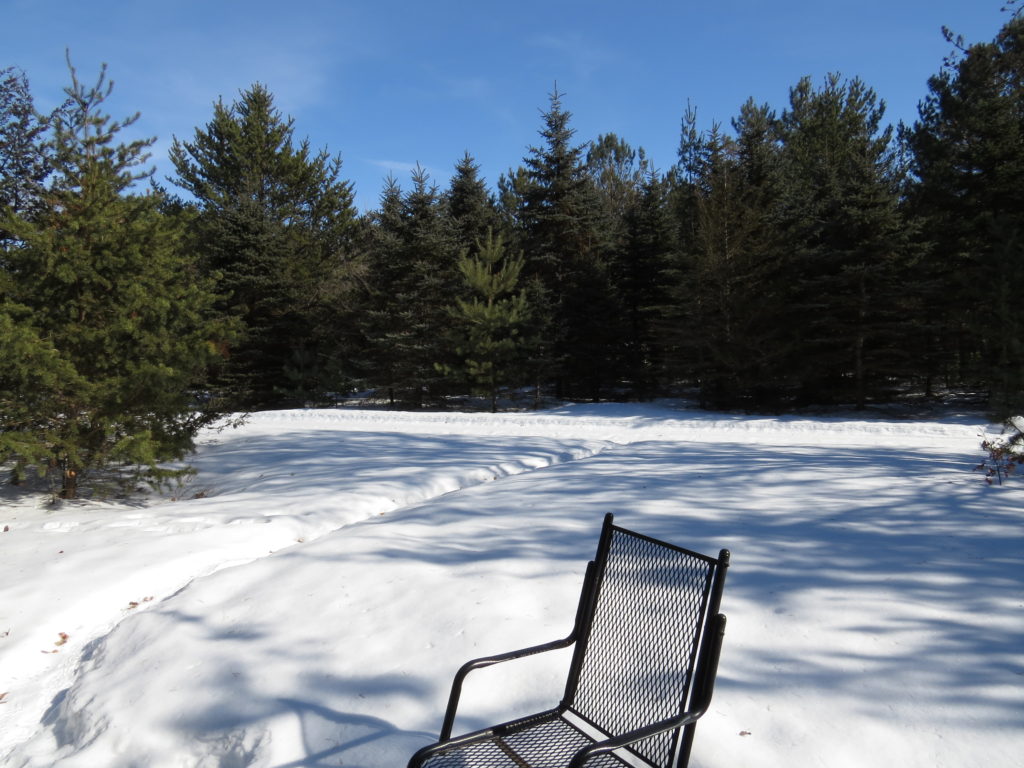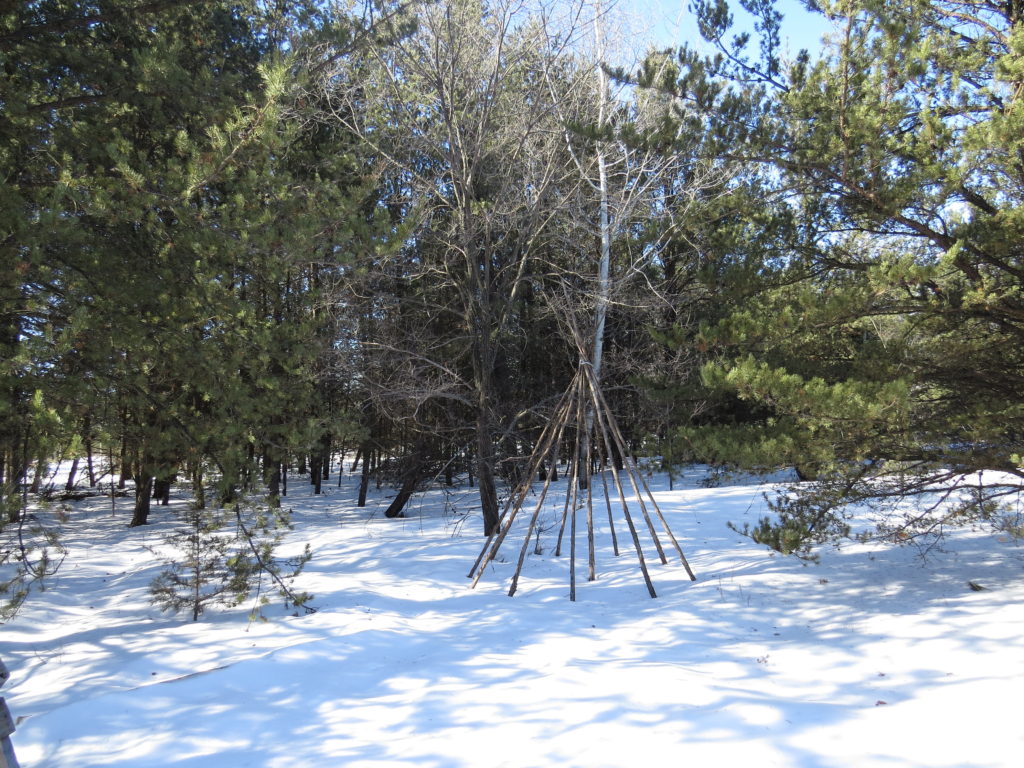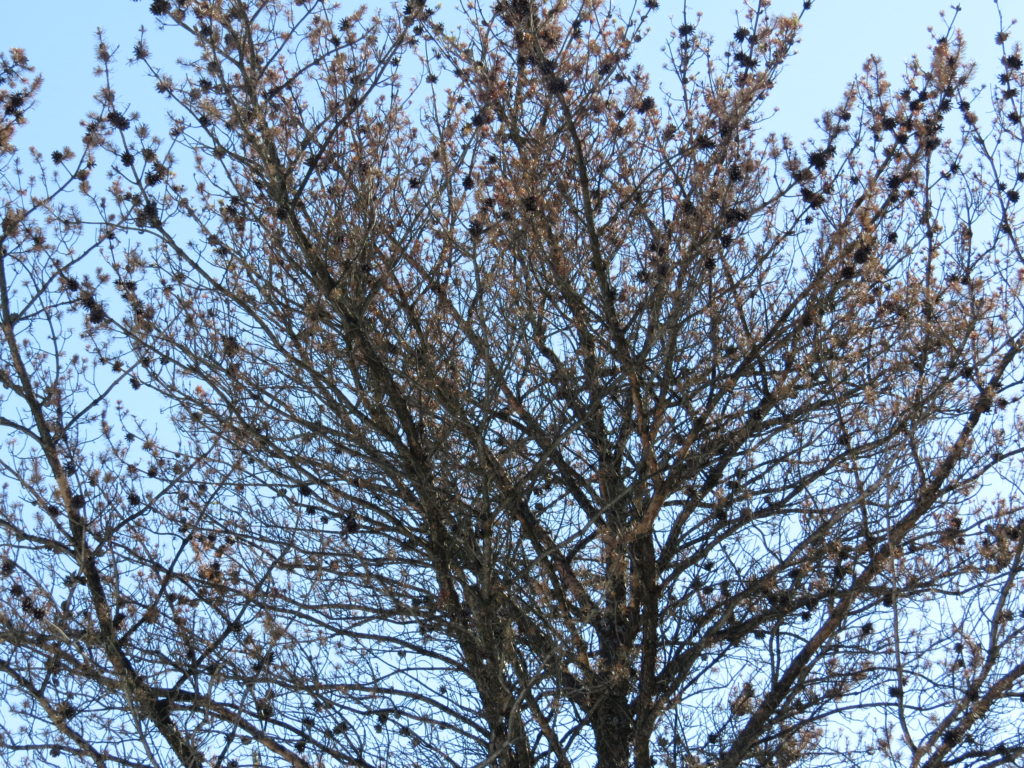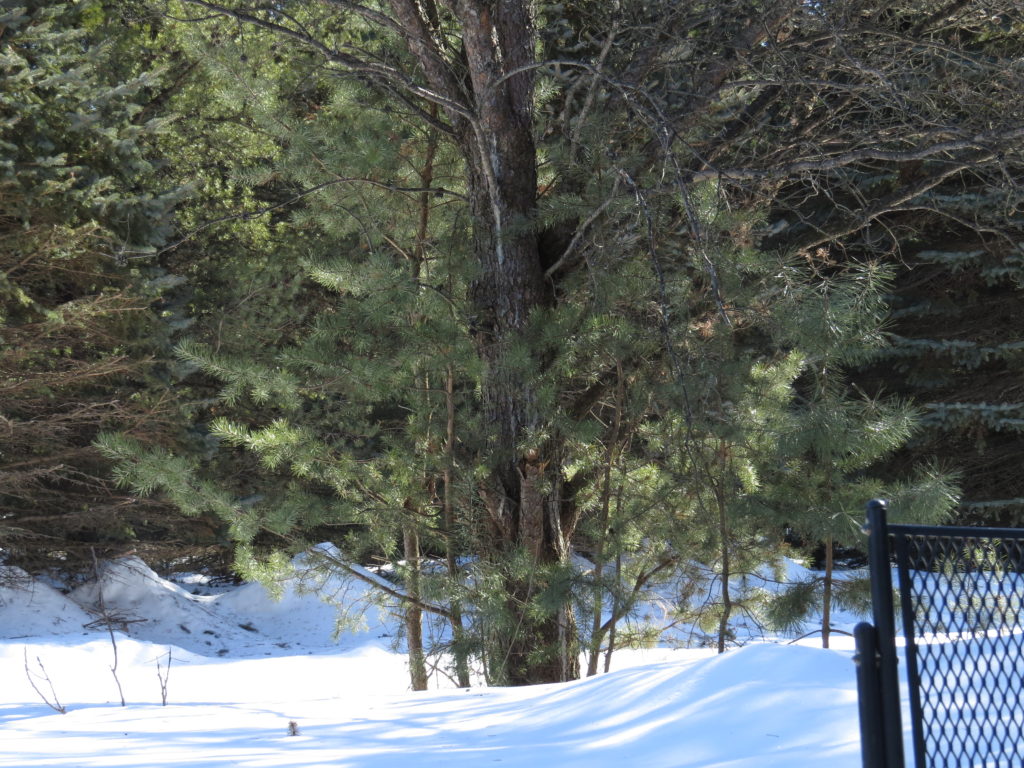After a cold, snowy Winter, all I want is some warm sunshine, green leaves, and colorful flowers. Winter in the North hones our patience. Winter after the calendar proclaims Spring tries our patience, which is all a part of the honing process, I guess. We “can’t always get what (we) want,” as Mick Jagger sings.
Twelve days ago we did have a sunny, relatively warm day! Chris and I decided to hike down at the Mississippi River’s edge, because we hadn’t been there (seen it) since ice-out. We followed the trail down the hill—to a beautiful blue… River-flooded trail. I guess we won’t be going that way….
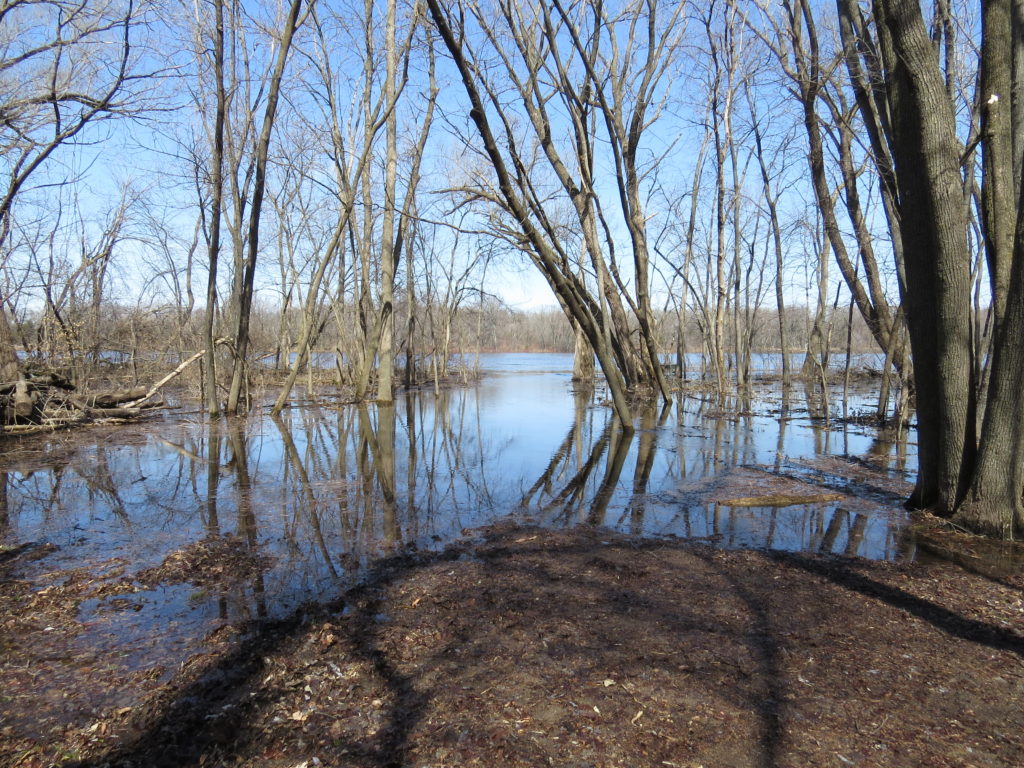
We turned around, walked back up the hill, and went a different way. I spotted what looked like a Penstemon growing its greenish-purple leaves through the brown leaf litter. There will be Spring flowers in this spot in the weeks to come!
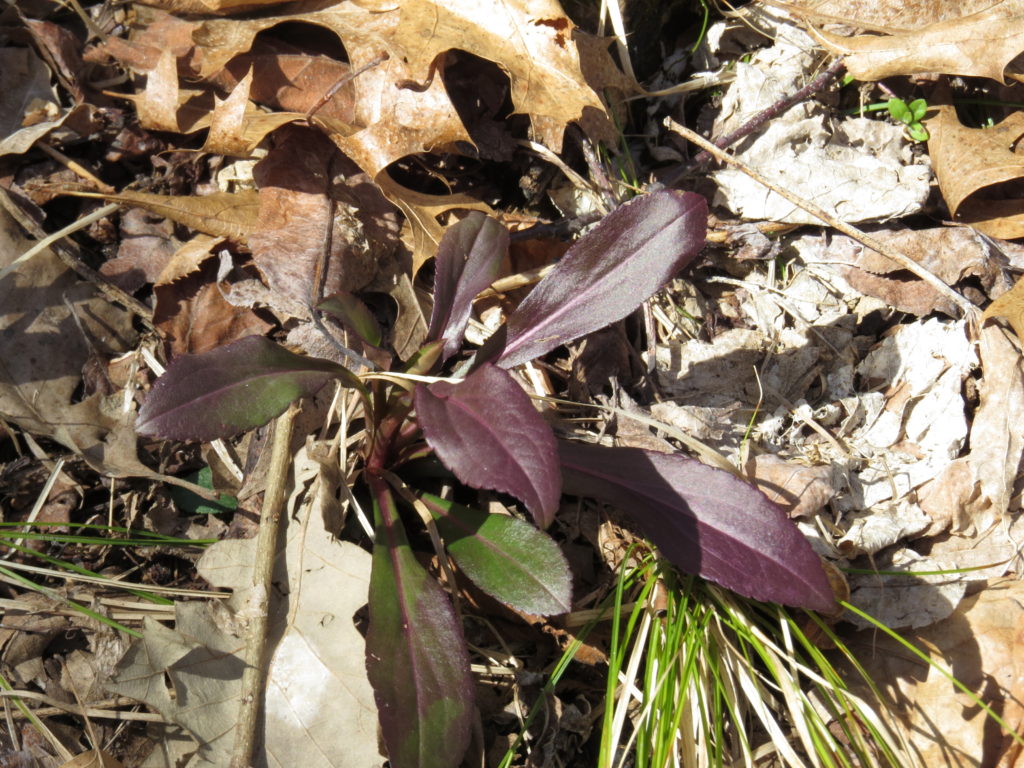
But on the other side of the road was a gray swamp with a green swamp-log, like a huge alligator laying-in-wait in the water, in the shadows and reflections, in the Winter debris.
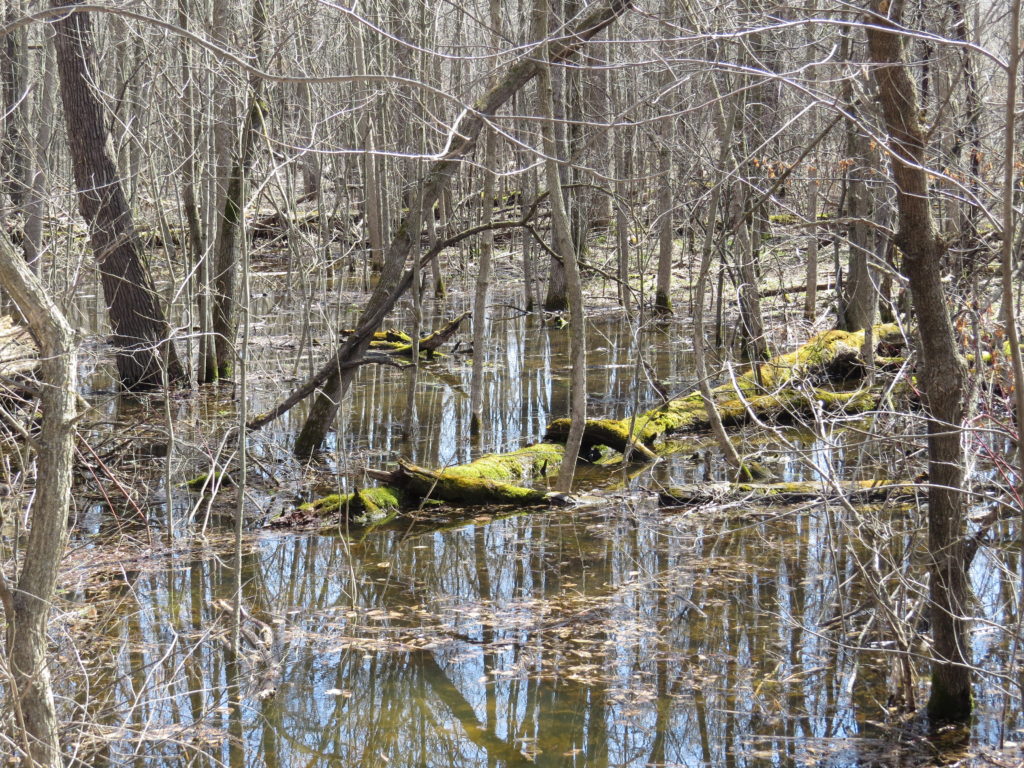
A real water creature hopped up onto the road to warm itself in the sunshine.
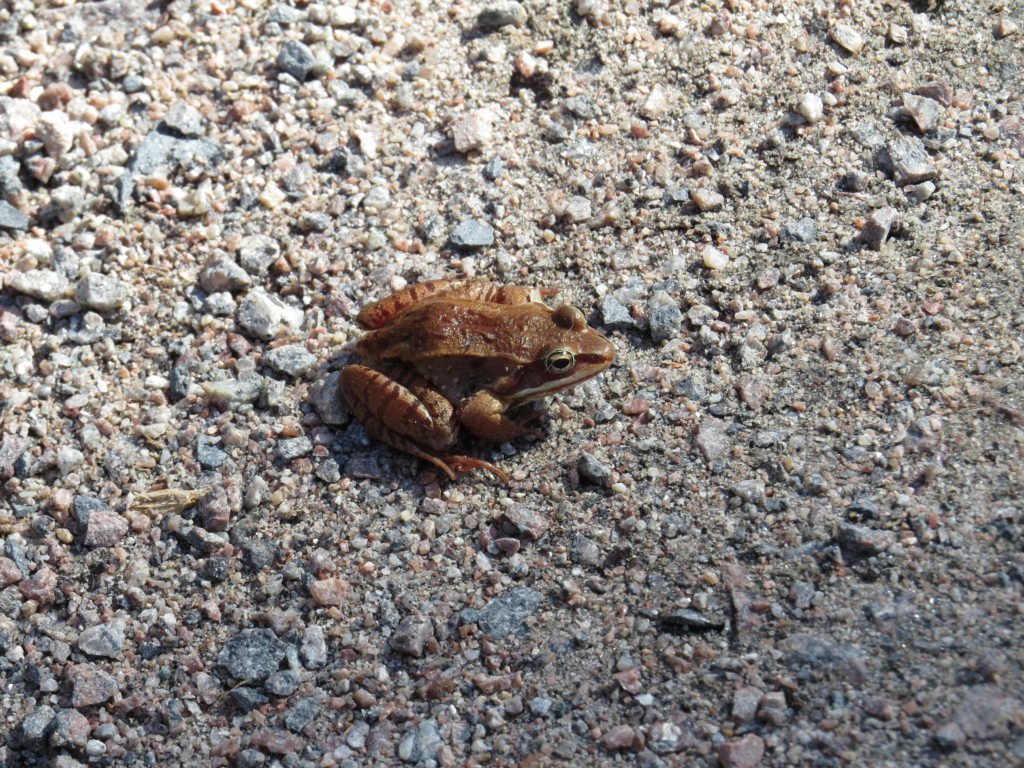
The boat landing road did get us down to the River. This was where we had walked across the ice just six weeks before. (Walking Across the Mississippi River)
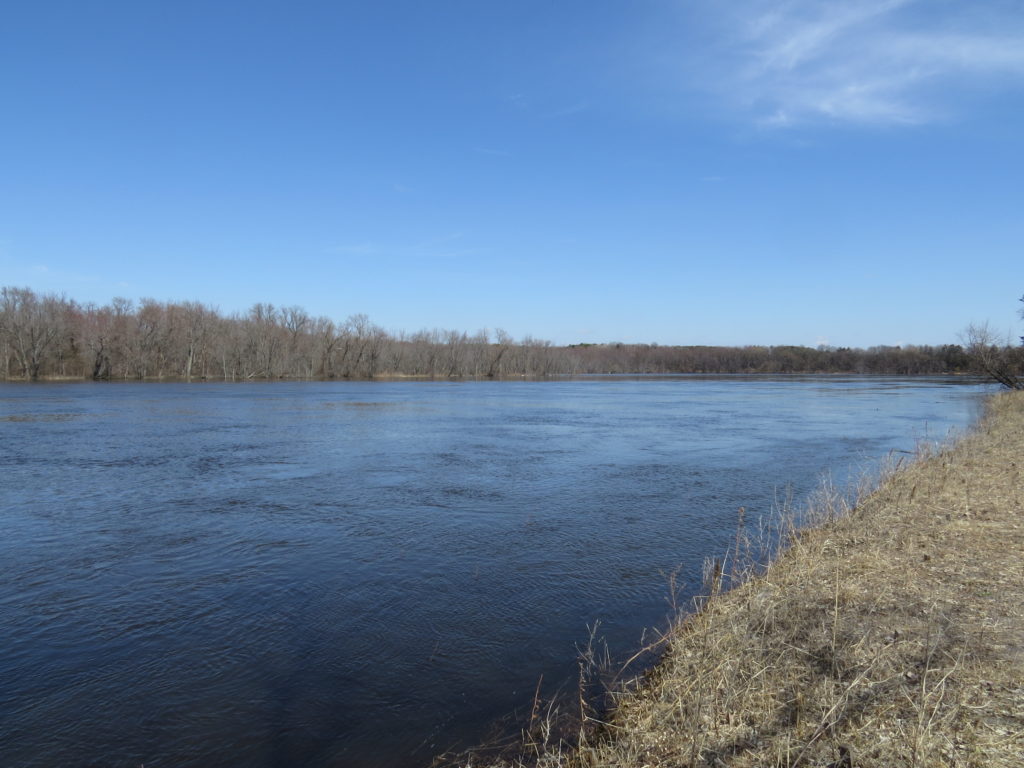
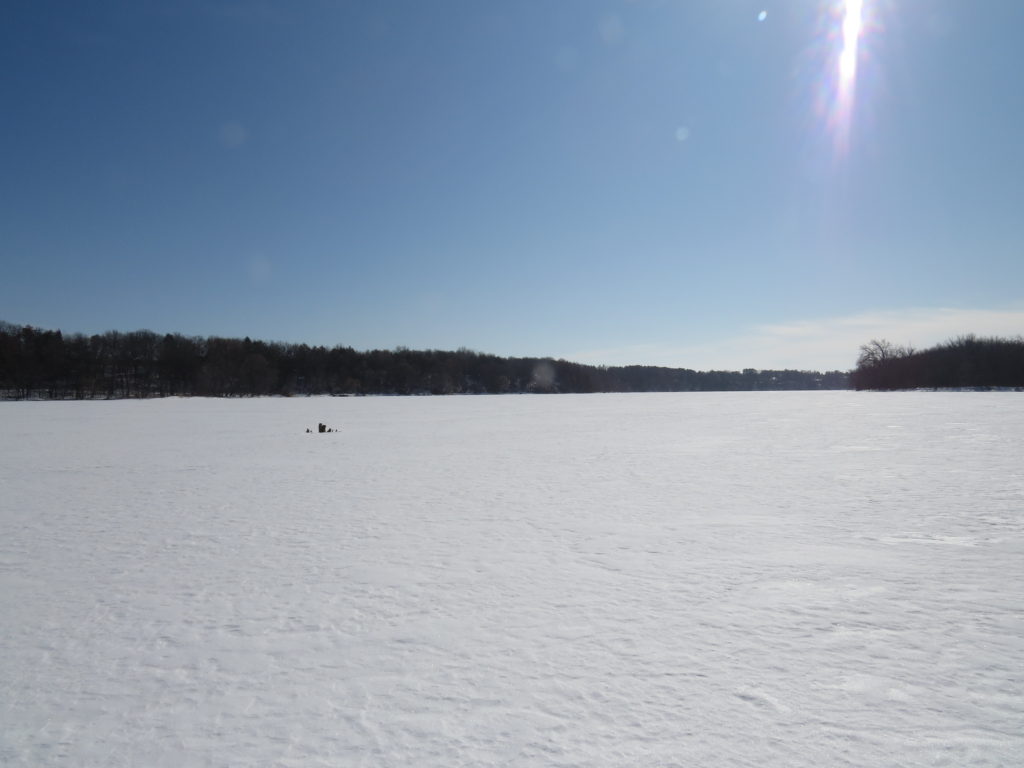
Even though we weren’t where we wanted to be—on the trail, in the weather, in the Spring—we were in a much different place than we were just six weeks ago. Sometimes we forget how far we’ve come when it looks like we have a long way yet to go.
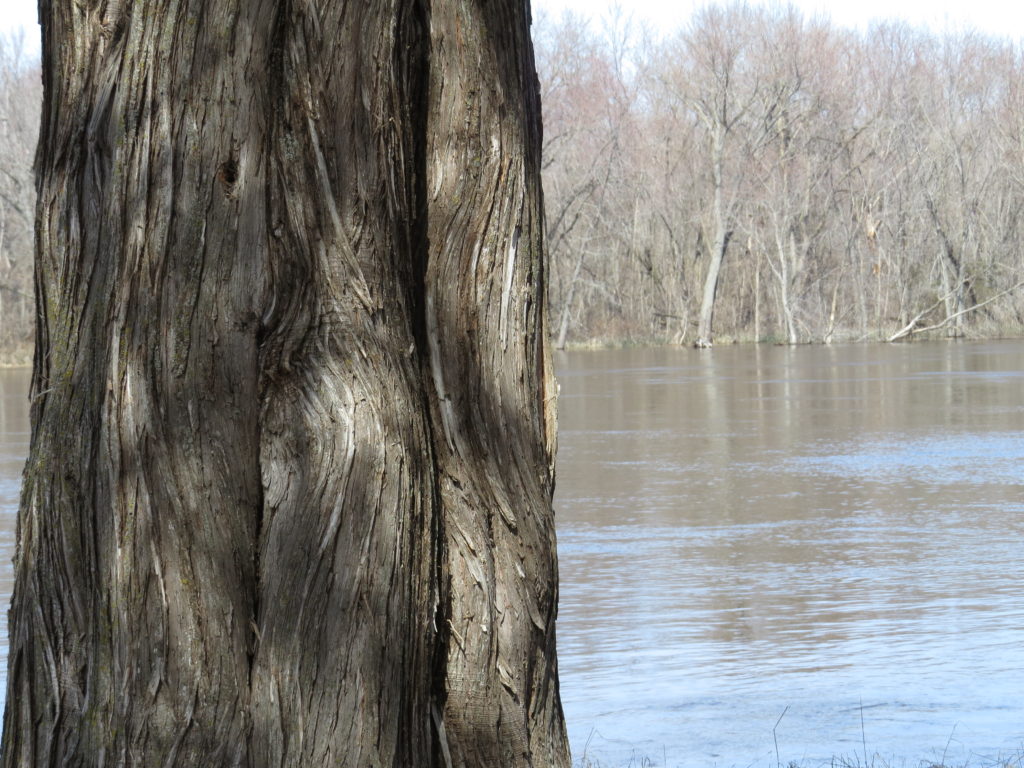
A lone Red Cedar tree, well-watered by the near-by River and unencumbered by any other tree in its proximity, had grown into a specimen tree. All the characteristics, all the best qualities of the Cedar were showcased in this tree. It had had room and nourishment to grow into its best self.

The trail from the boat ramp along the River was squishy, yet passable. By an old Oak stump, puff-ball fungi grew from the decaying roots. When I stepped on one, it disintegrated into near-nothingness. Poof!
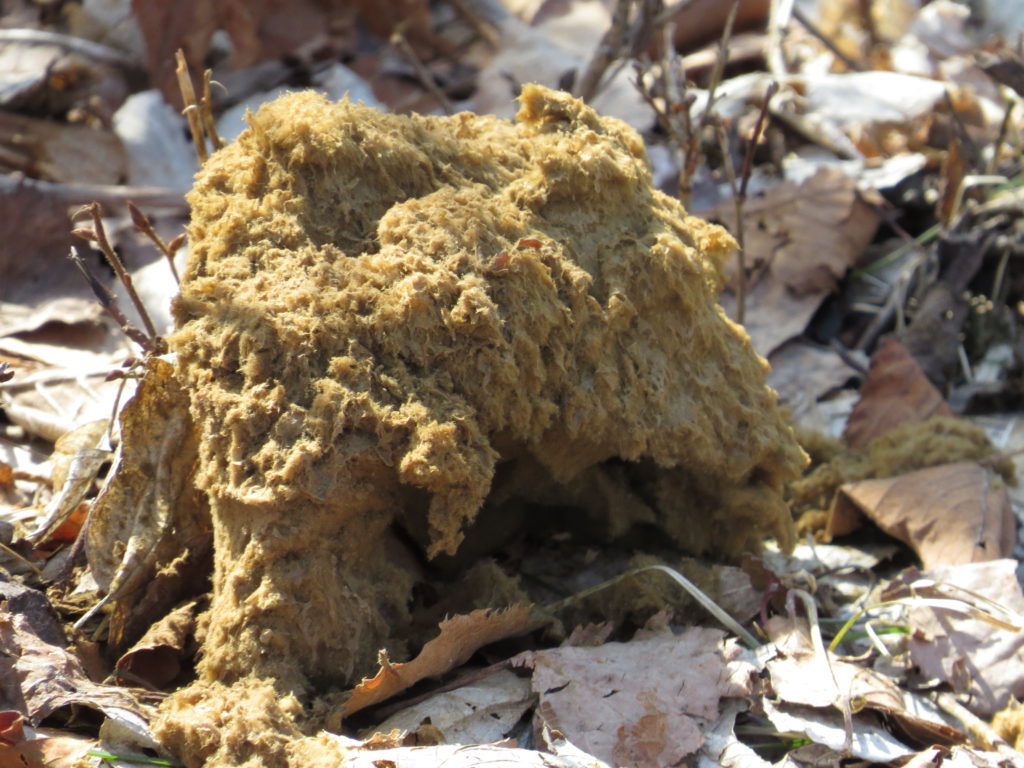
Colorful Red-twigged Dogwoods grew on the bank of the River—Winter and early Spring are their times to shine.
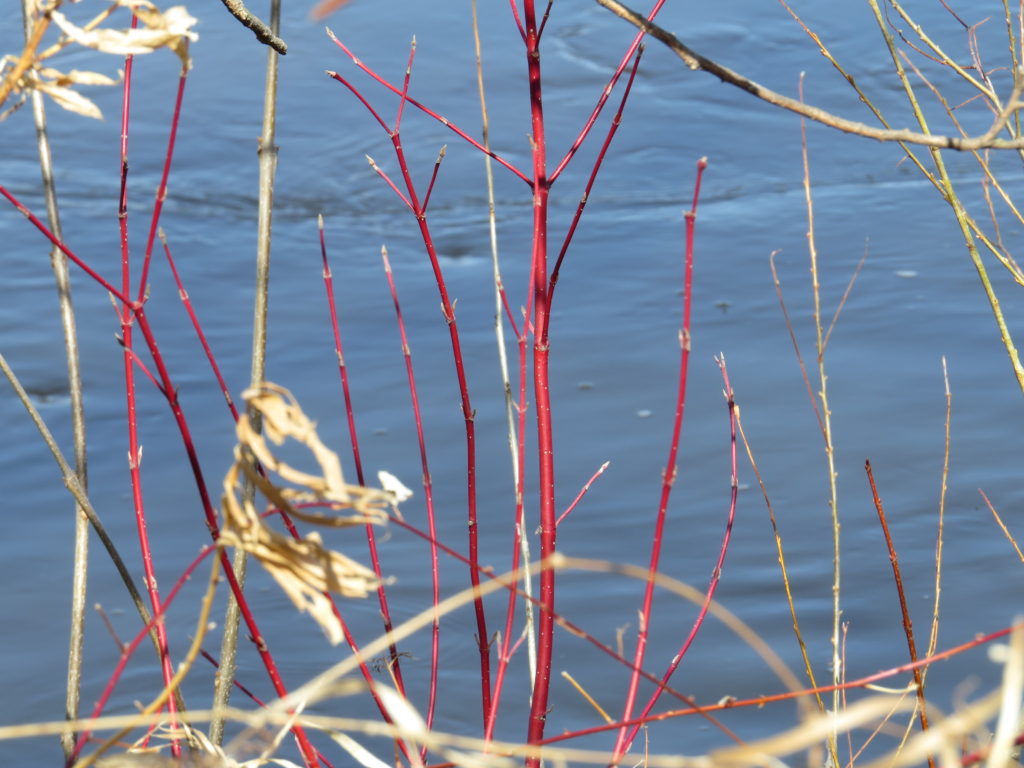
Brave cool season plants who can tolerate the fluctuating temperatures of early Spring have started to pop up in the woods. The beginning of the season of miracles.
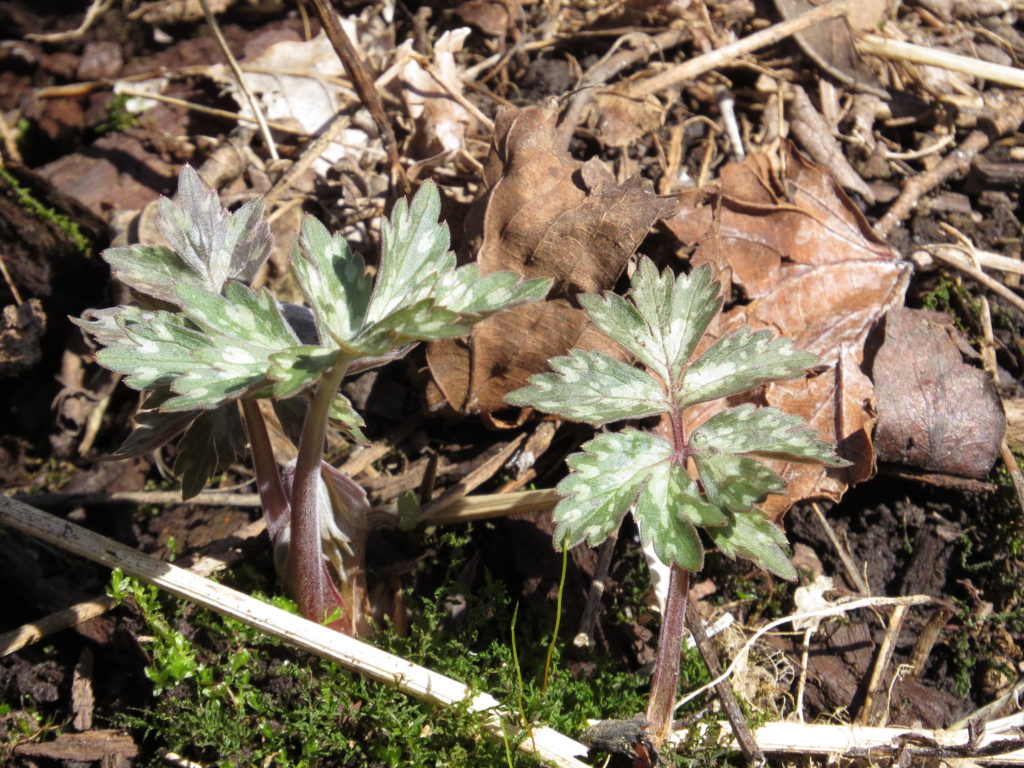
When the trail left the riverside, we hoped to find our way to another part of the Park. The trail was muddy, with low spots in the woods filled with water. But once again we were stopped by the flood waters when we encountered a bridge in troubled waters. We turned around and re-traced our steps all the way back to the boat dock road—the only way out.
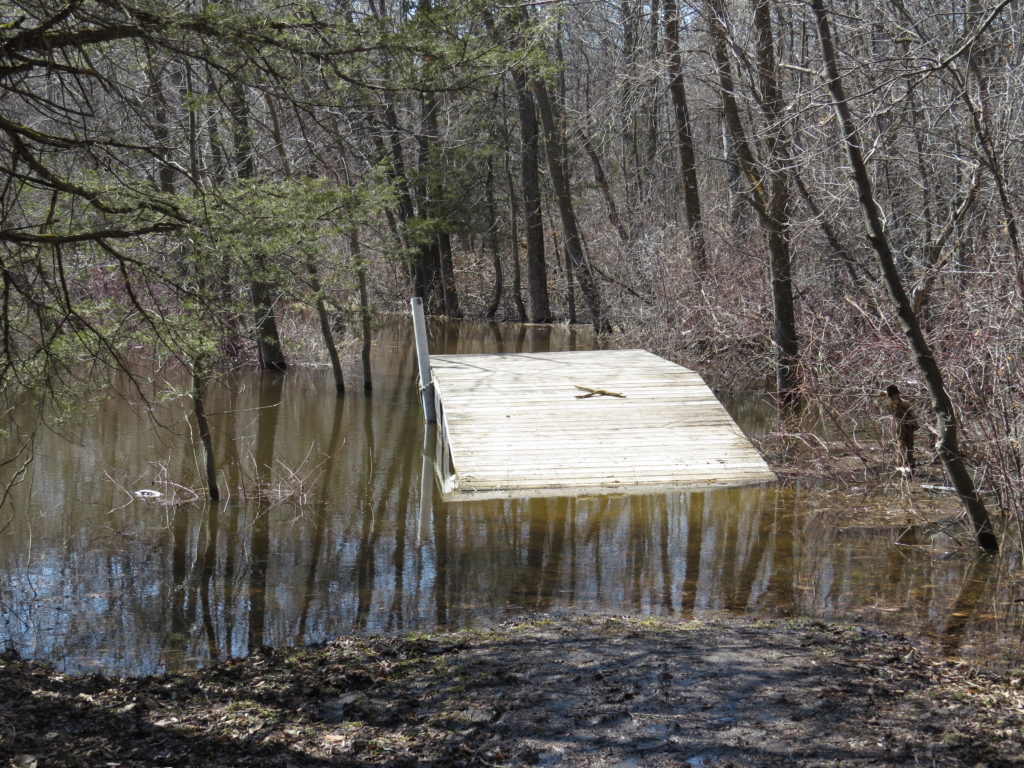
A Poplar leaf had imprinted in the mud of the road.
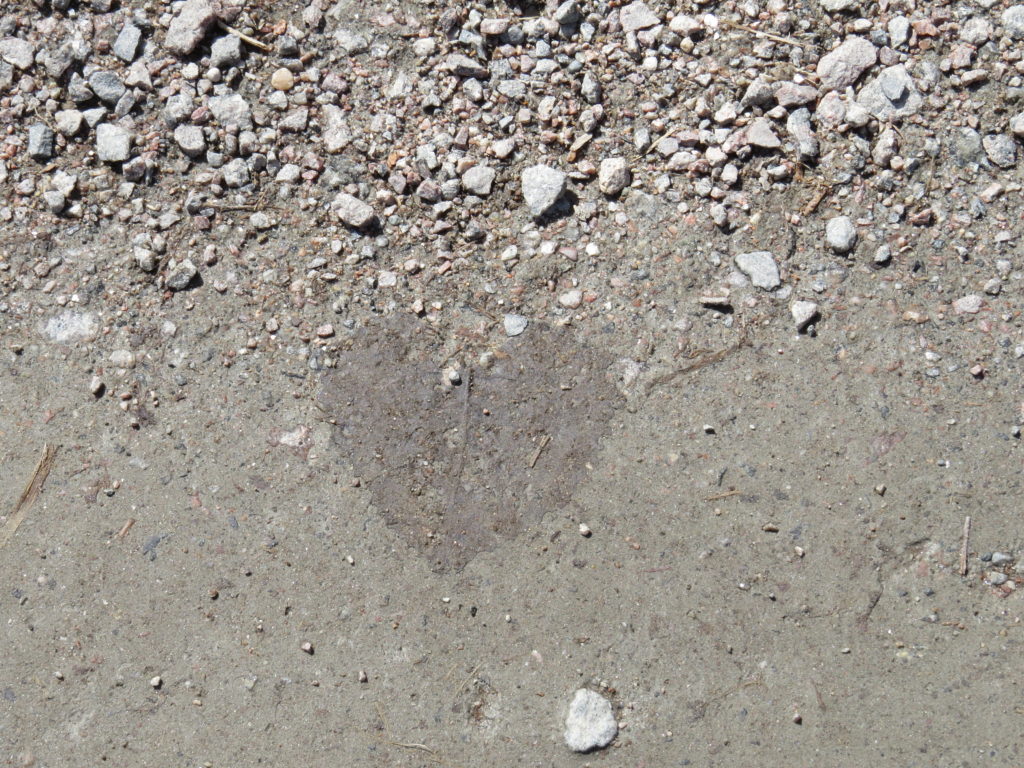
Spring is slow to show its pretty face this year. There has not been much change in the twelve days since we walked that trail. The temperatures have been cold at night and marginal during the day. We’ve had a day or two of rejoicingly warm weather, but we’ve also had snow. The grass is a tinge greener, and there are some swollen tree buds. We continue to hone our patience. And we continue to hone our patience with Covid-19, as trying as that is. It looks like we have a long ways to go—and we may—but look at how far we’ve come in our knowledge of the virus and the navigation of the road ahead. Sometimes we have to backtrack or take a different way. We also have an opportunity to be like the Red Cedar tree—unencumbered, socially isolated, and able to grow into our best selves. We can tromp through the mud, be respectful of the flood waters (which will recede), and we can shine even when all around us seems bleak. Sometimes it takes the mud in order to see the Love.
